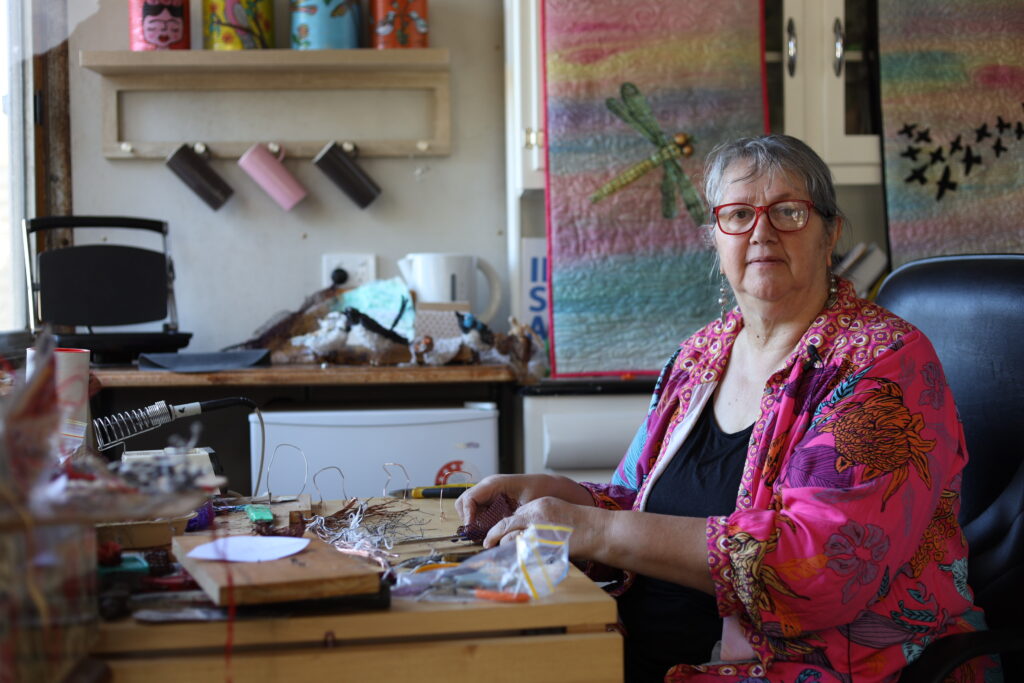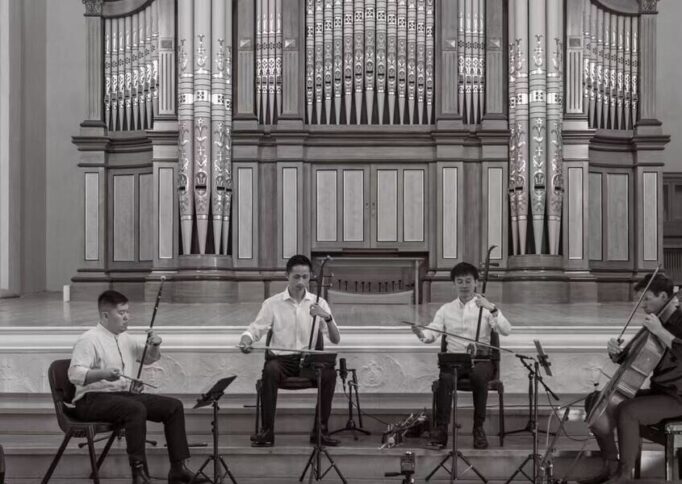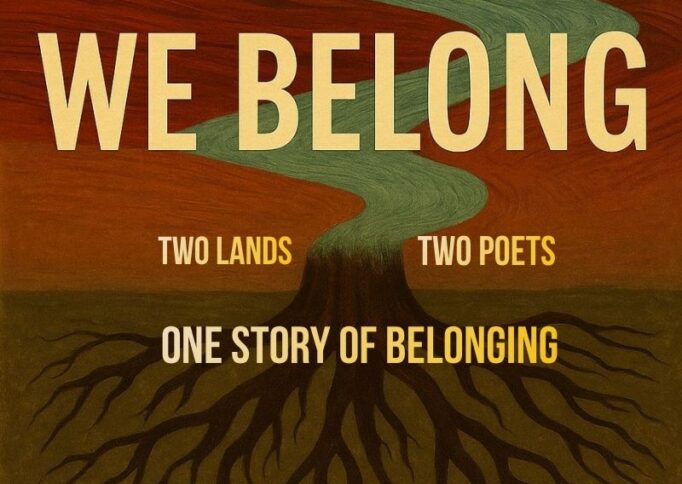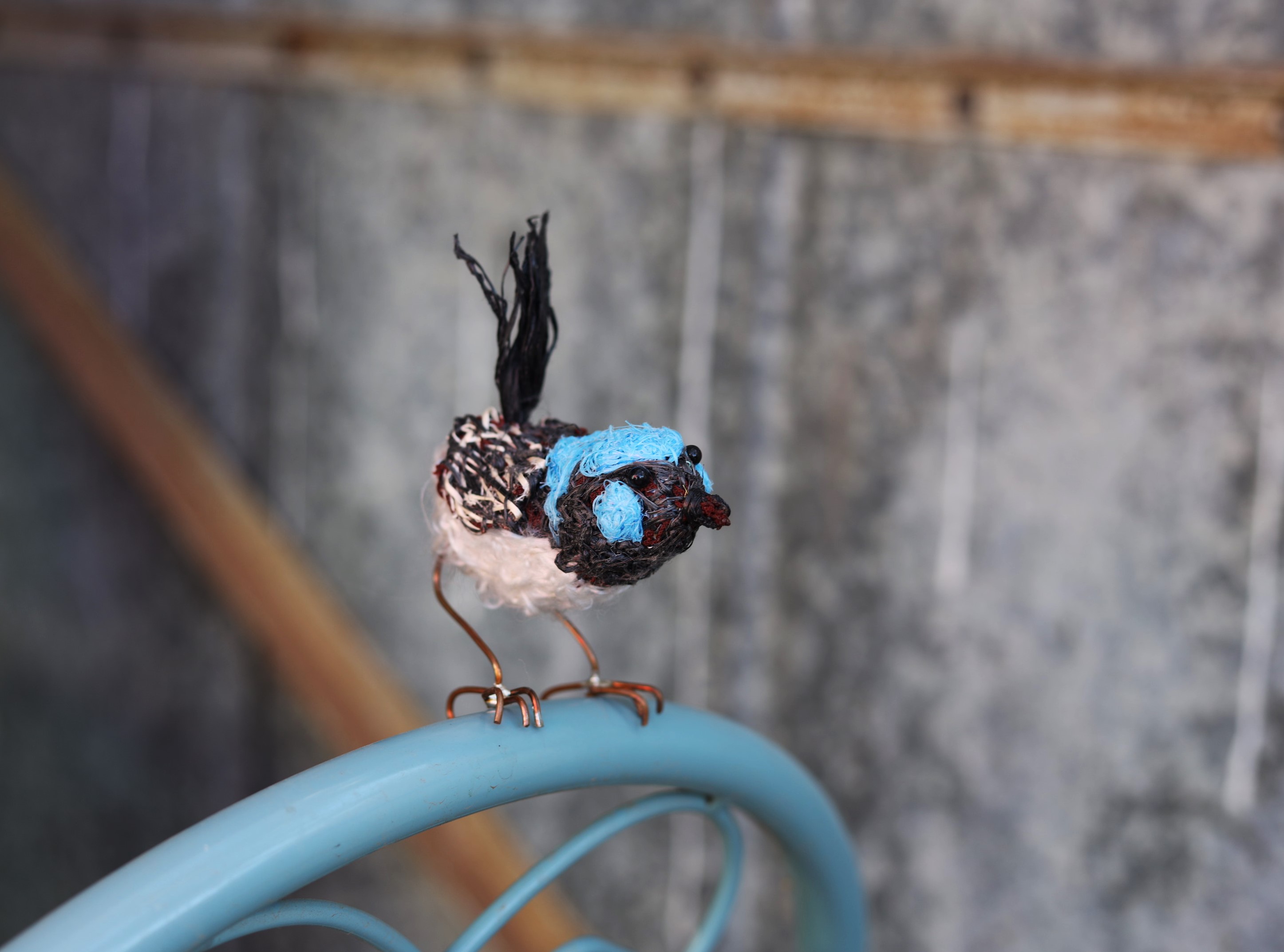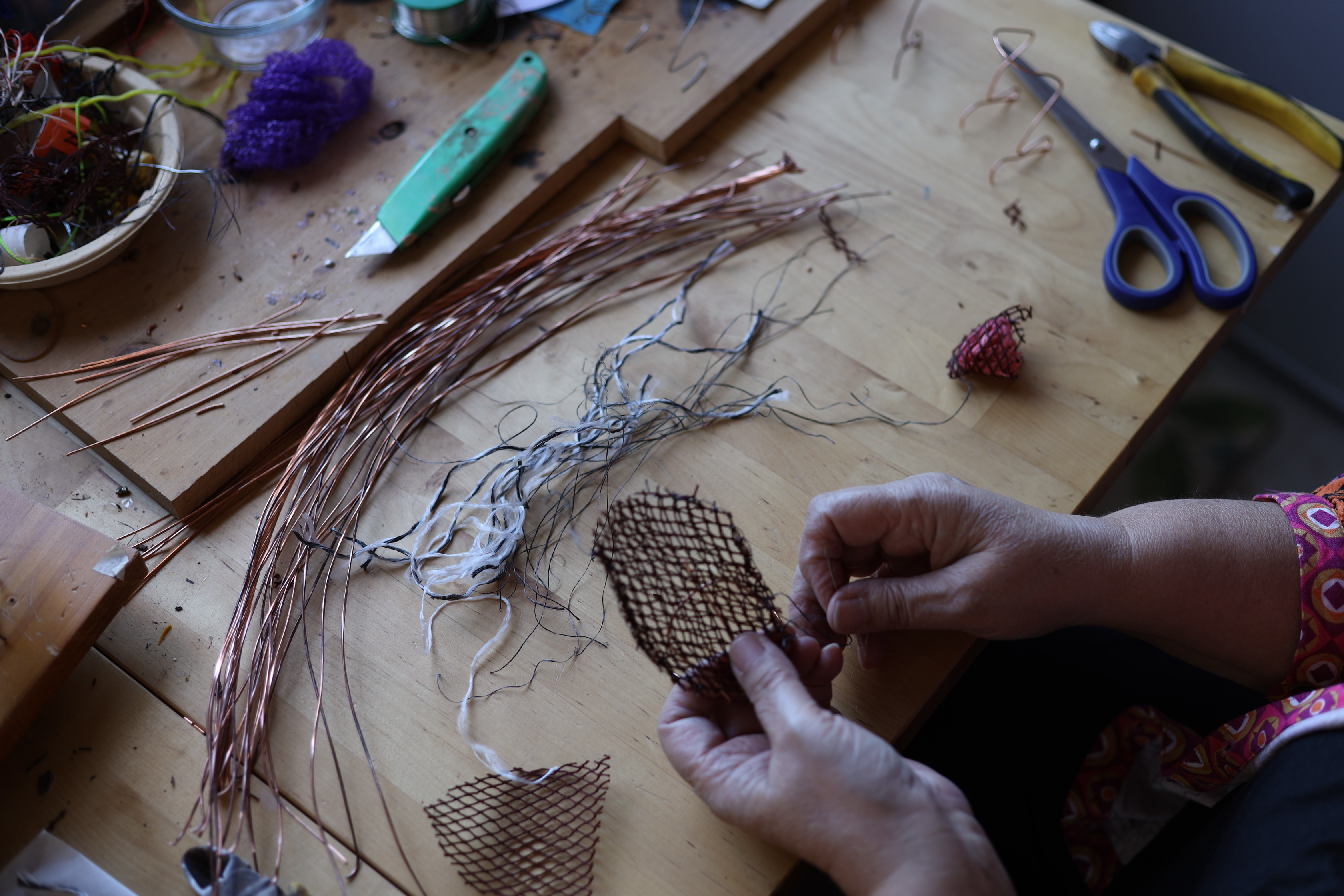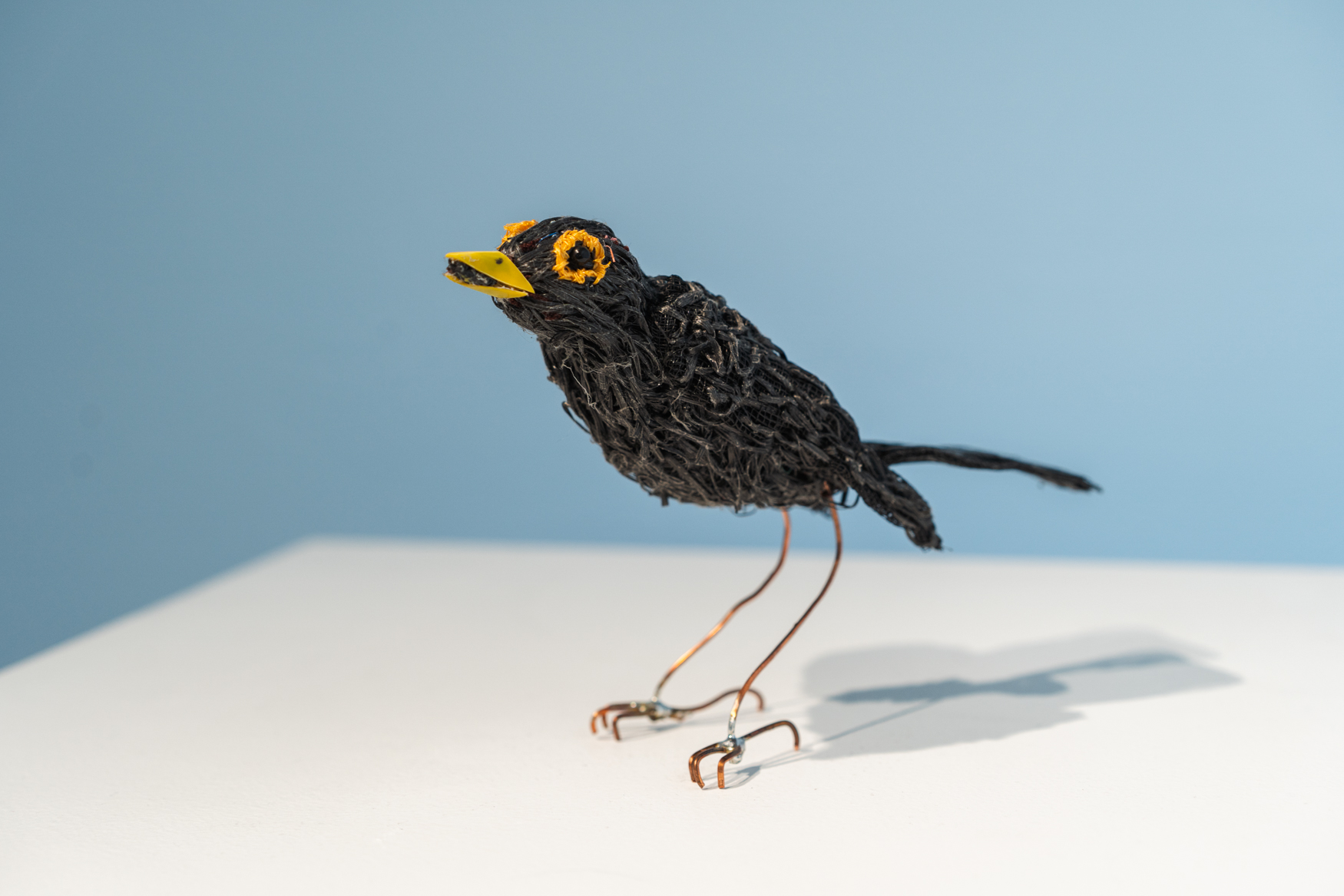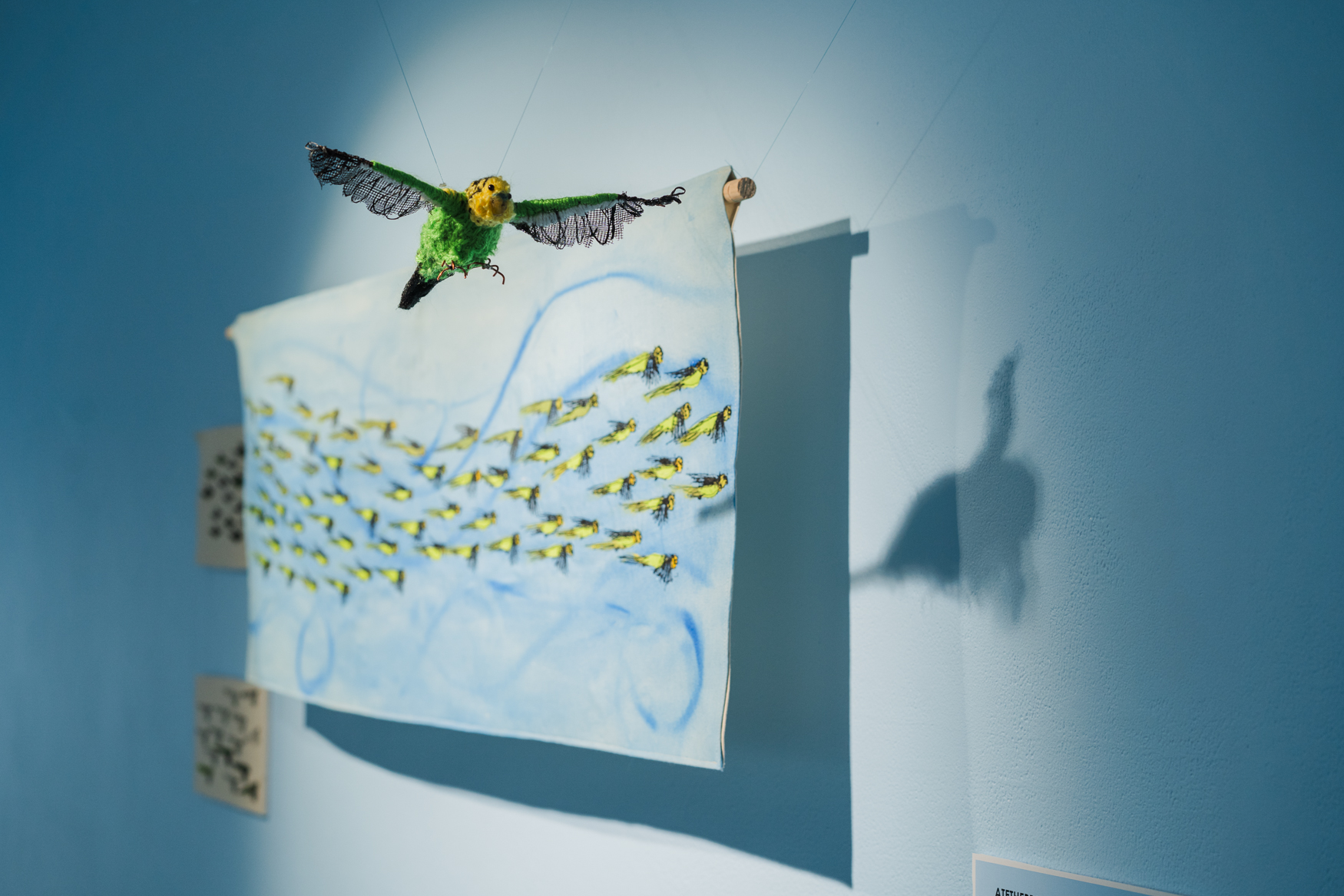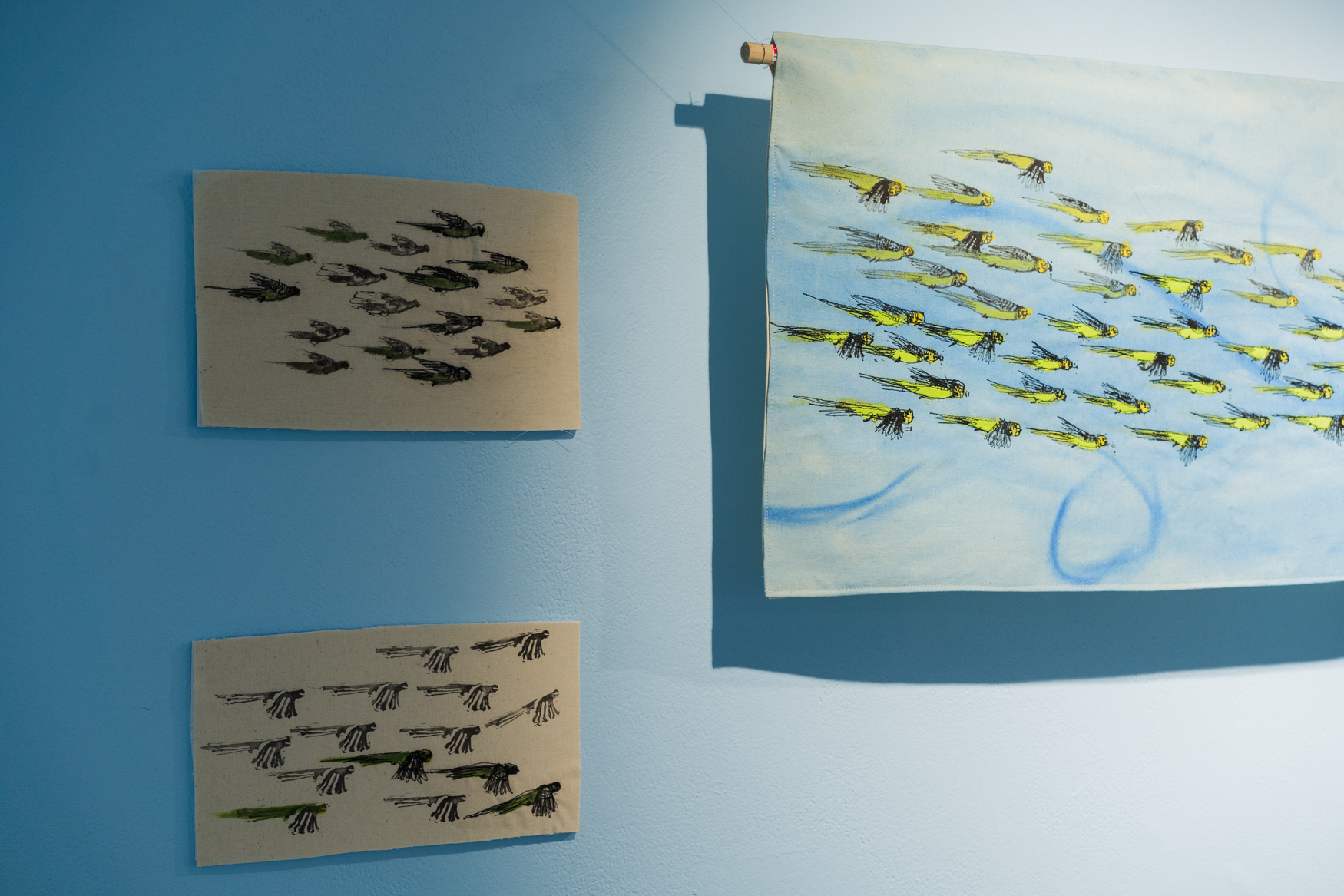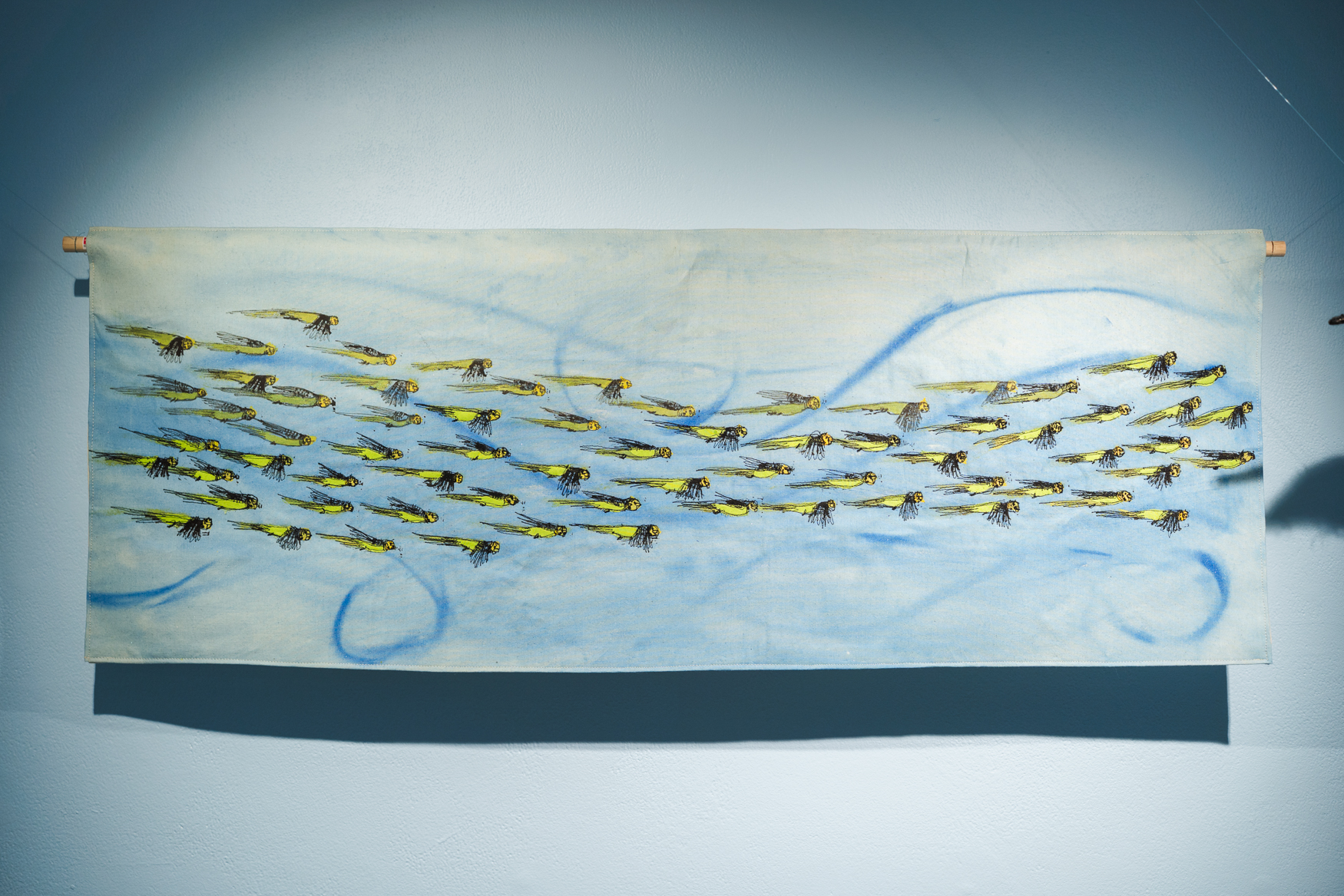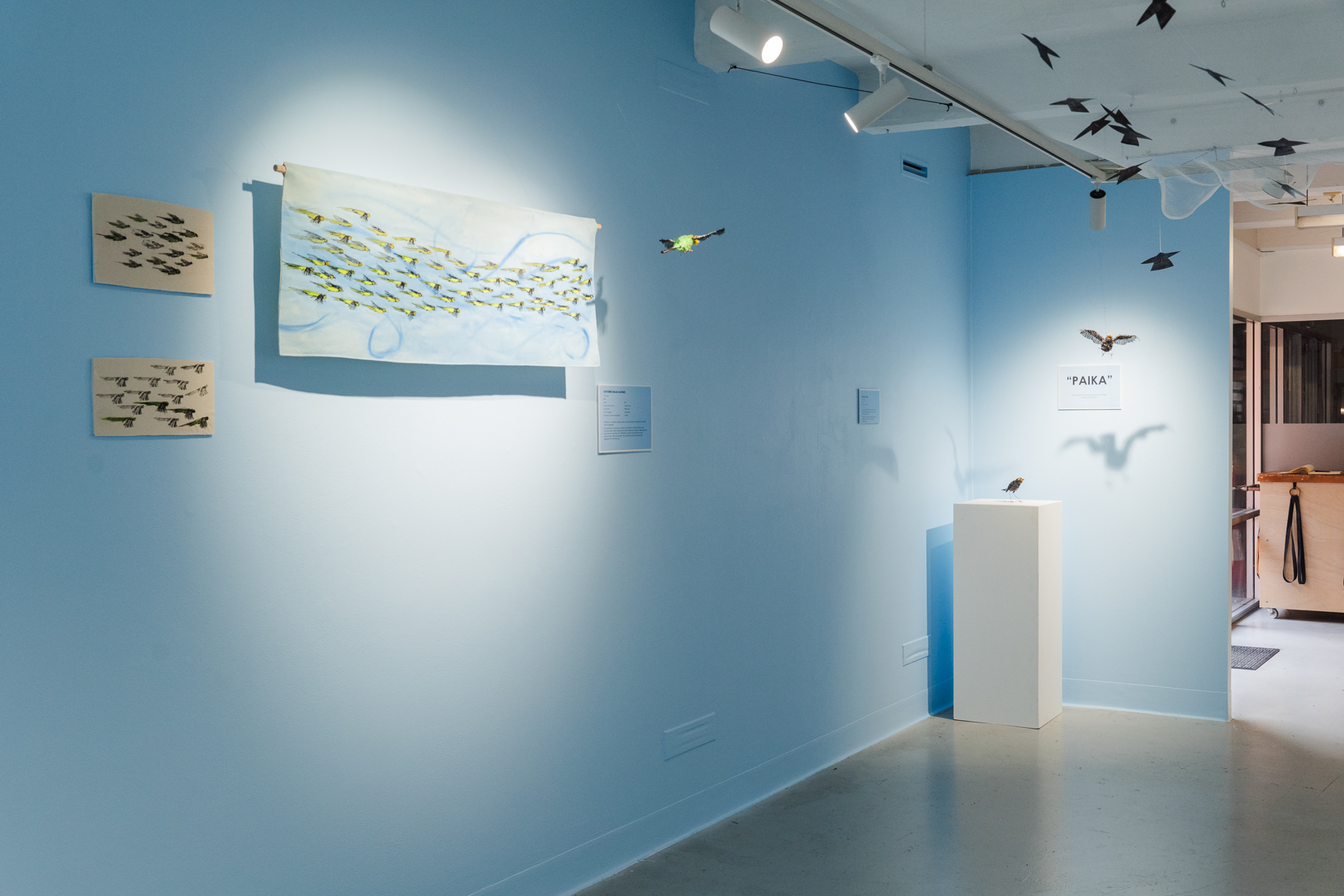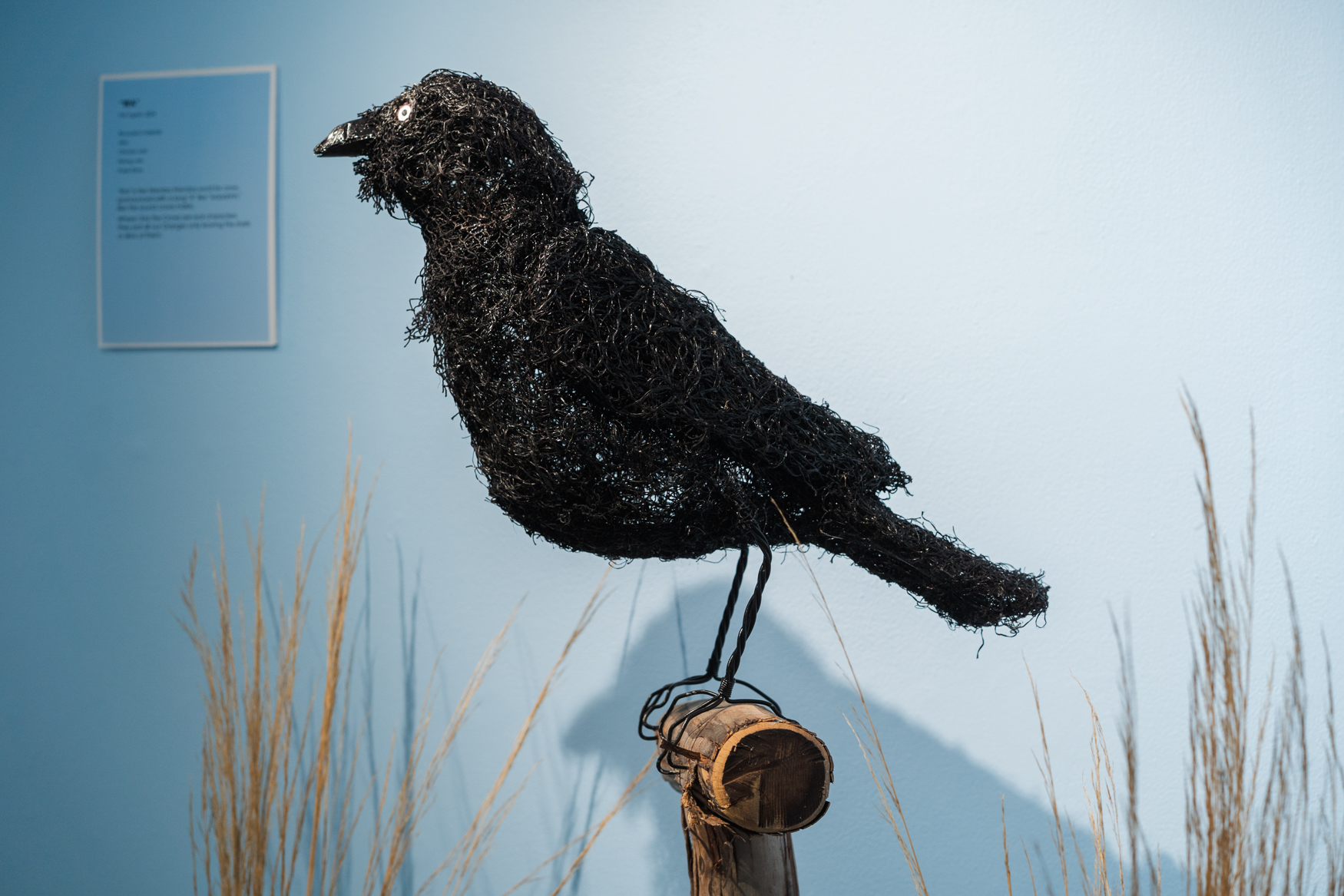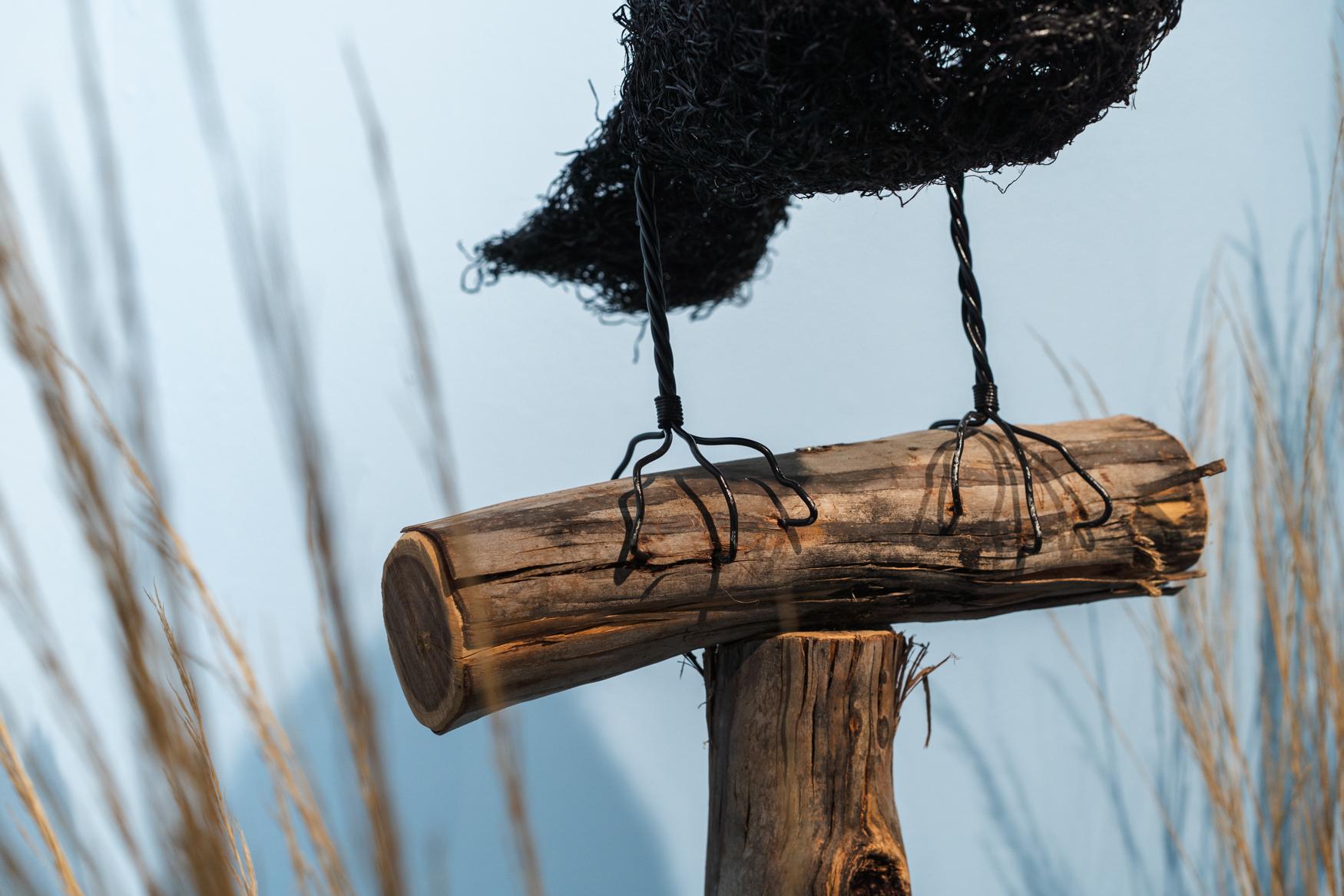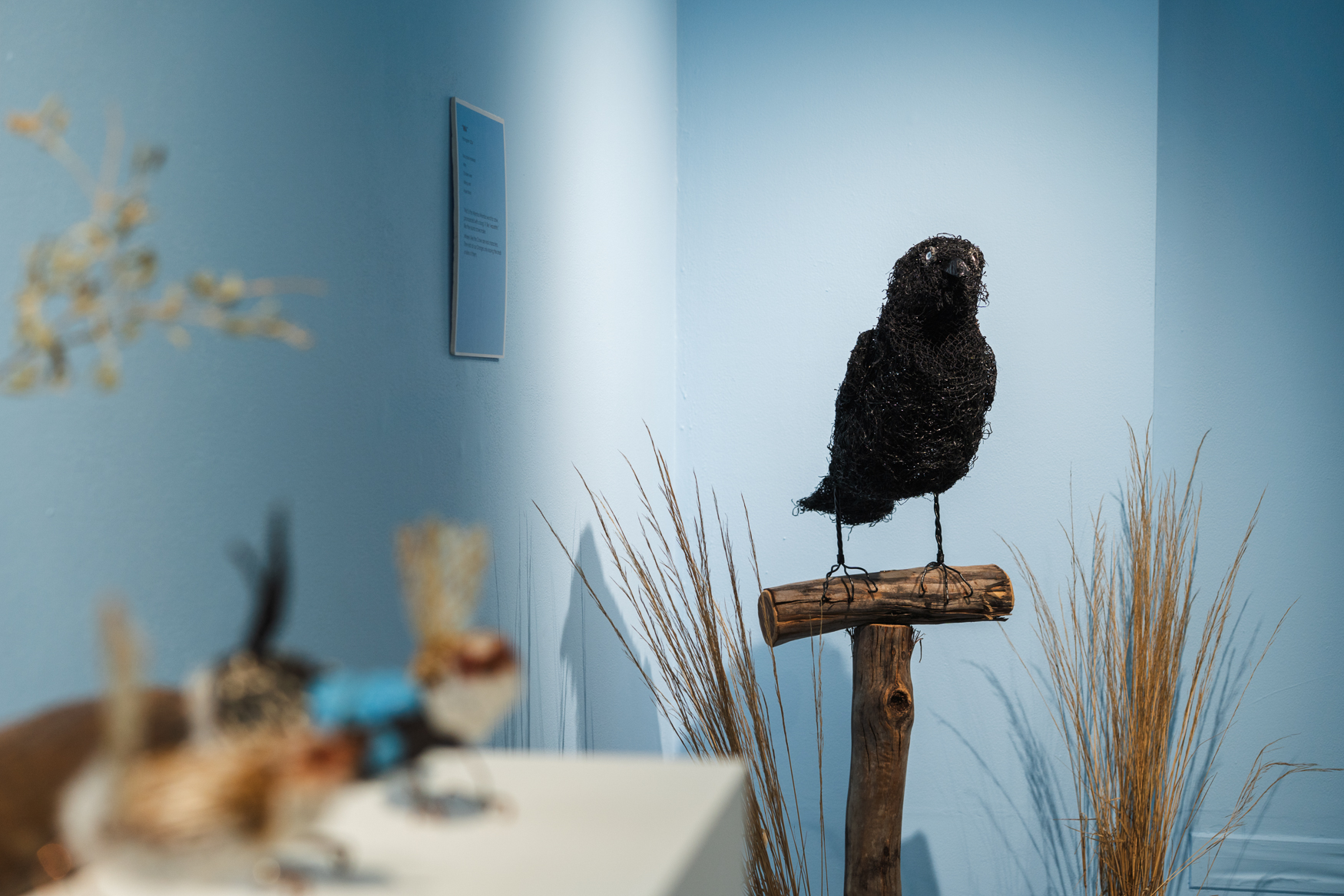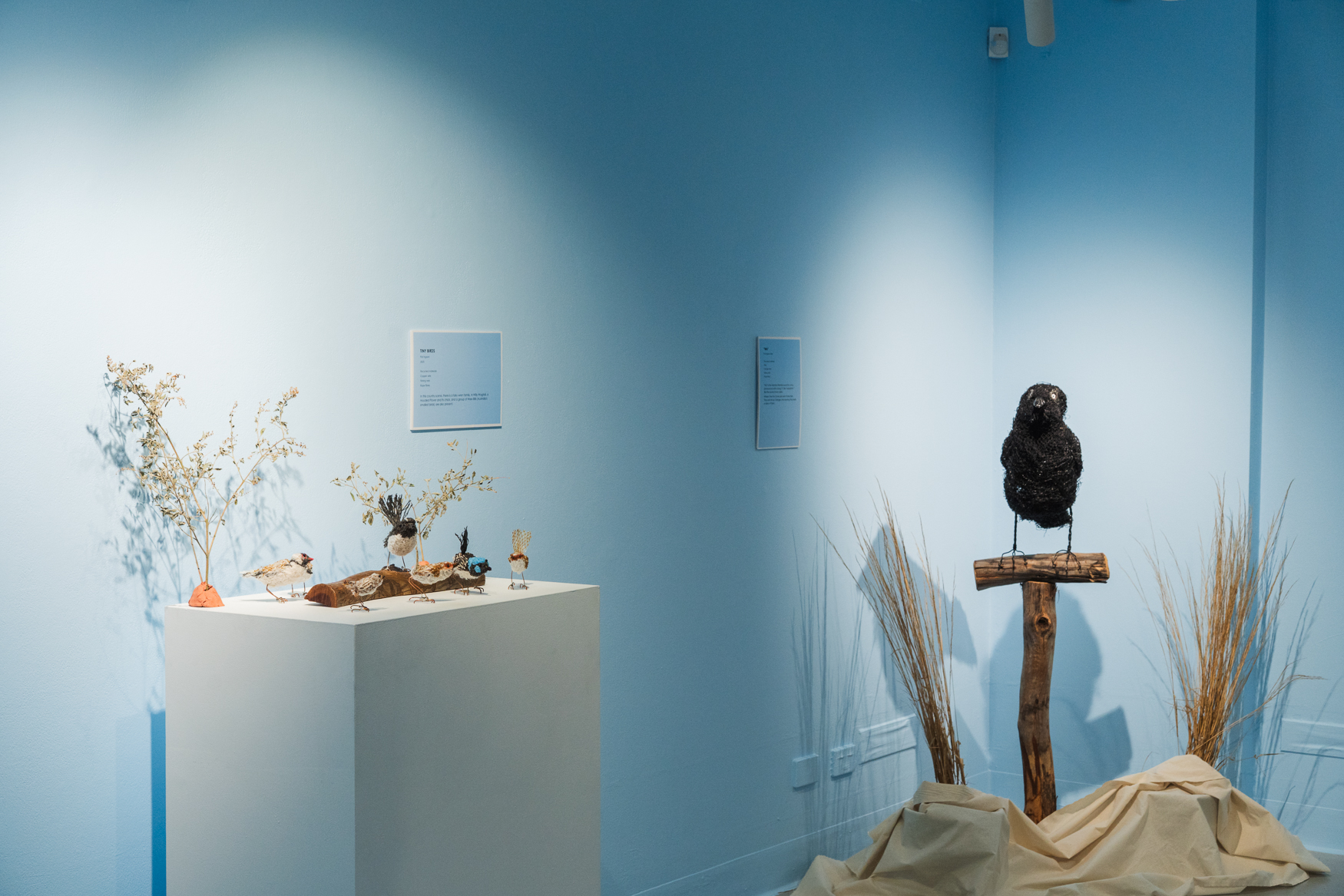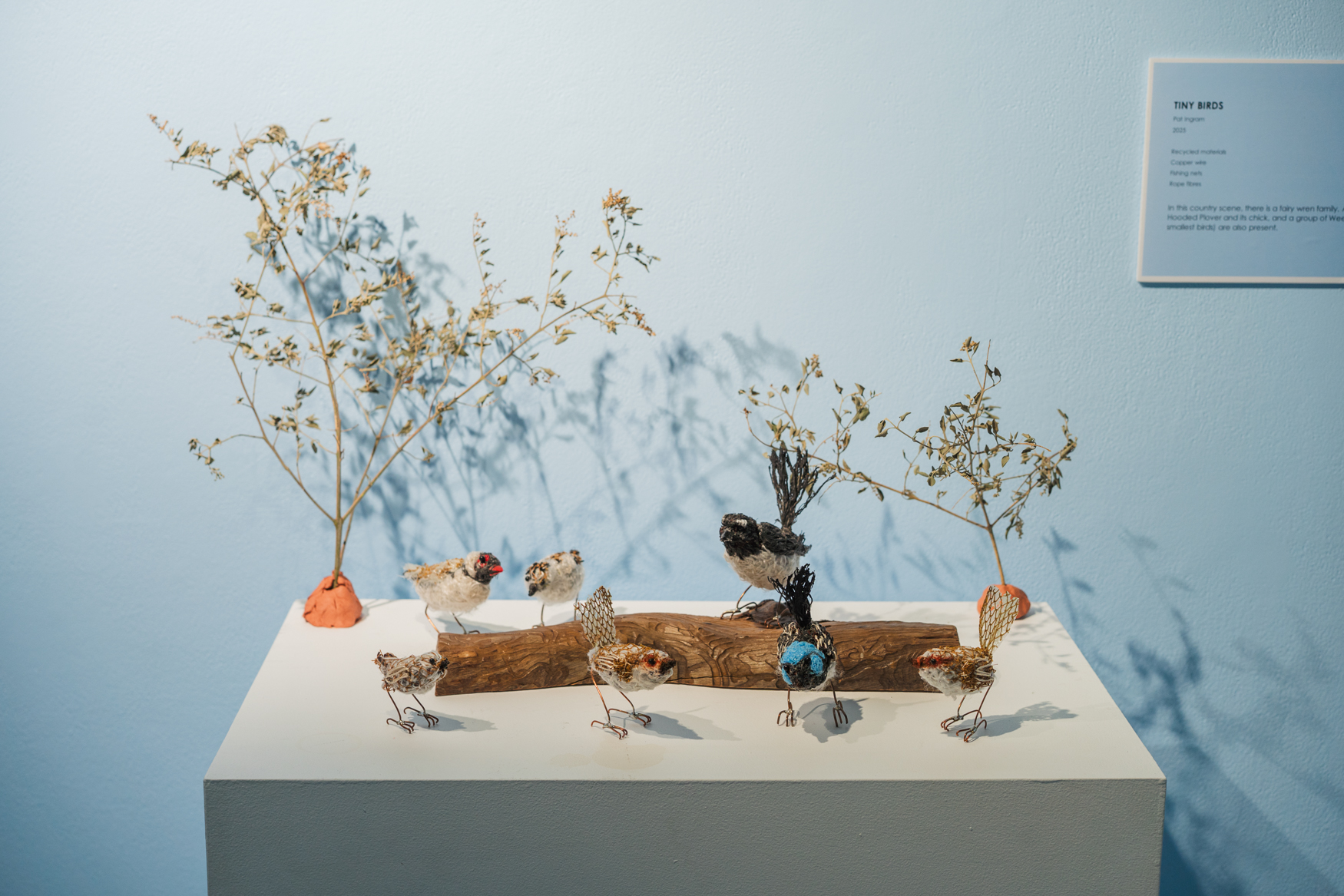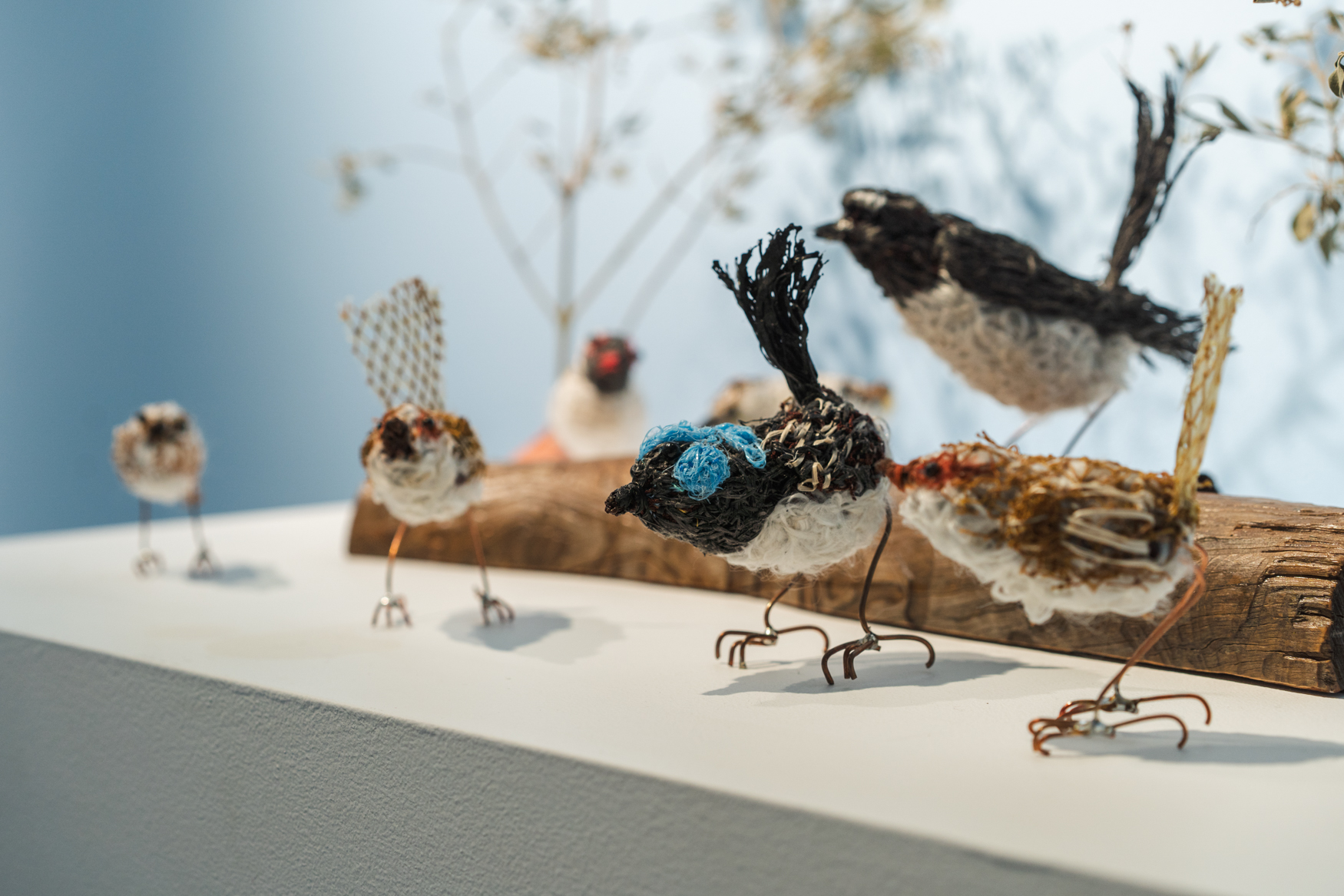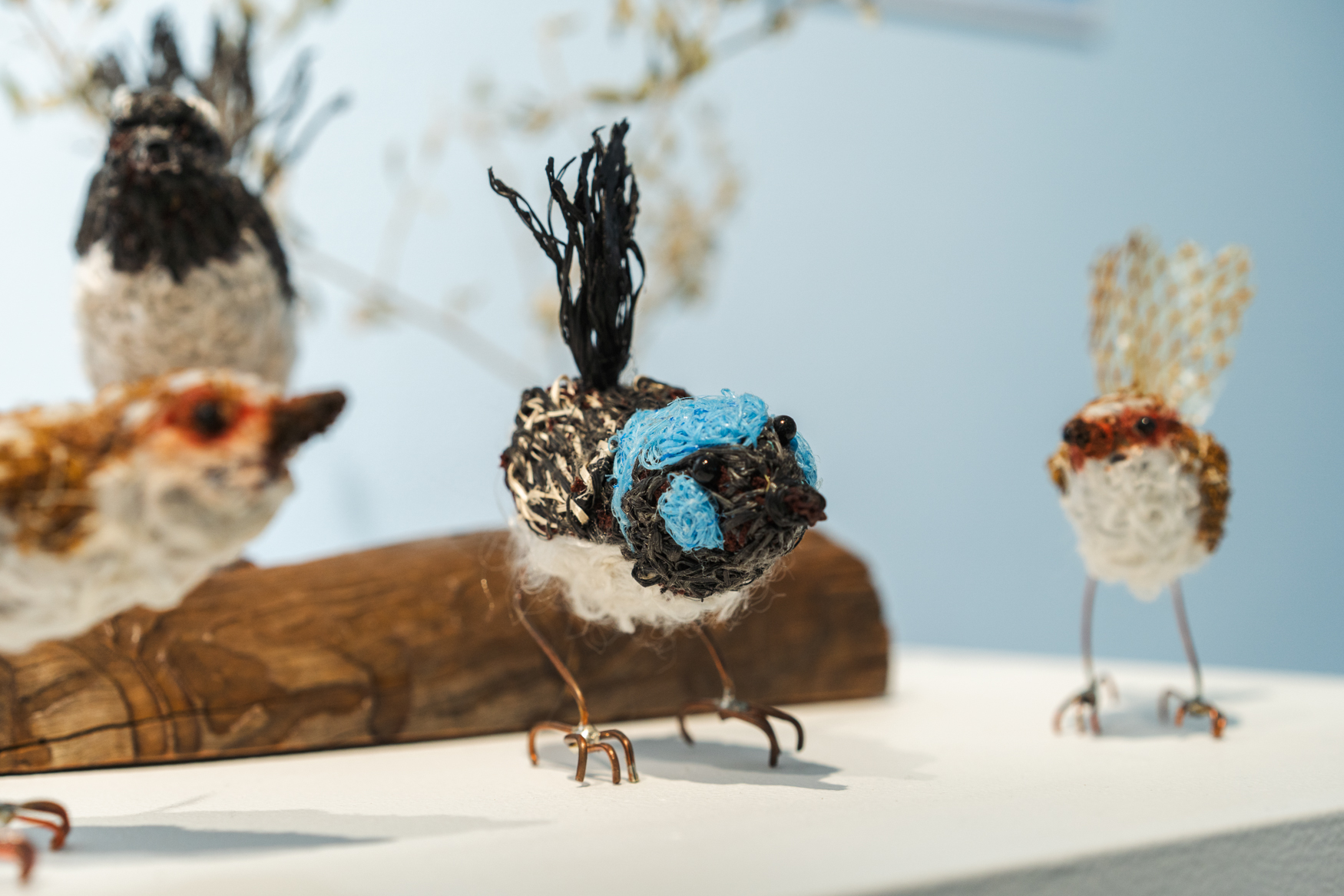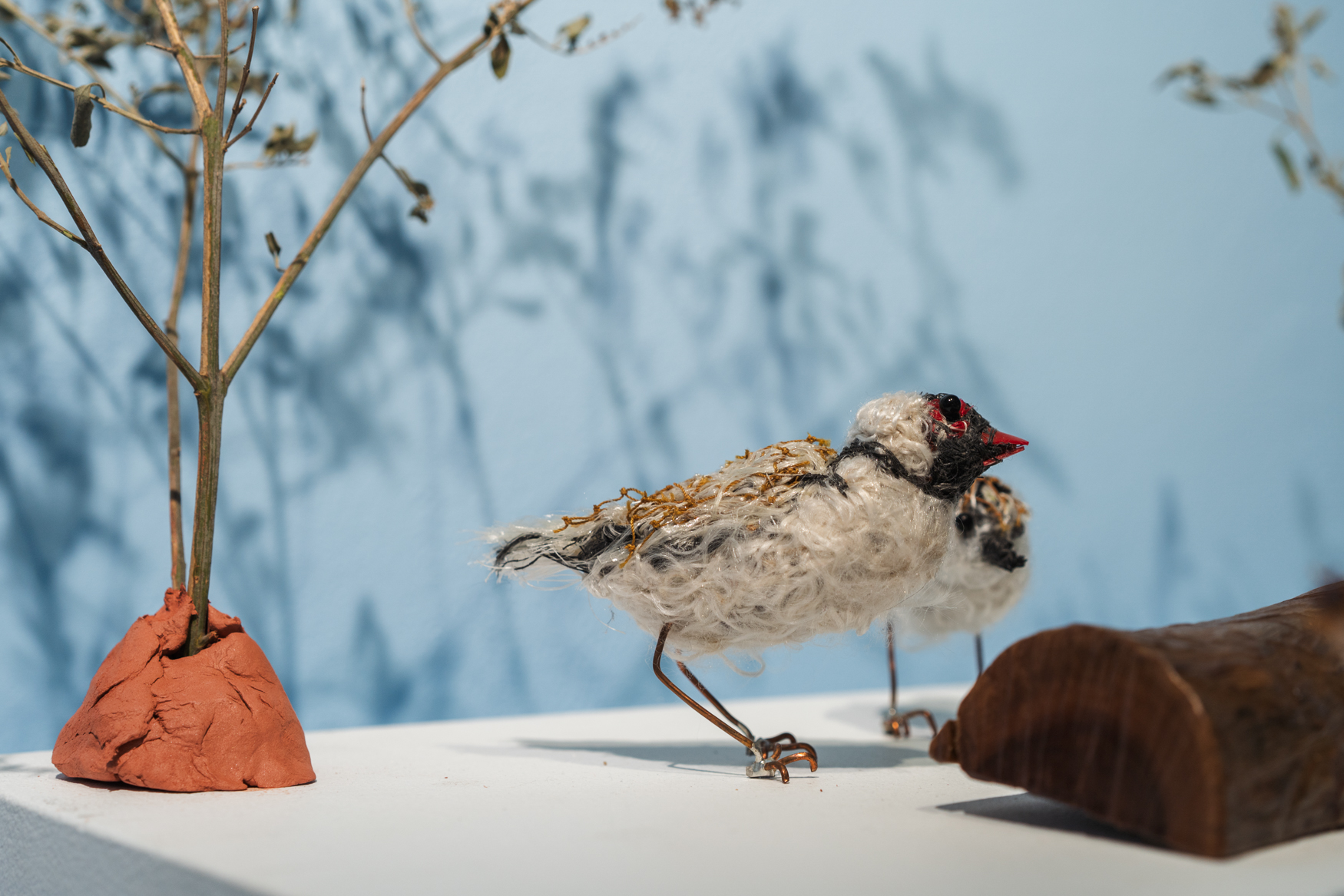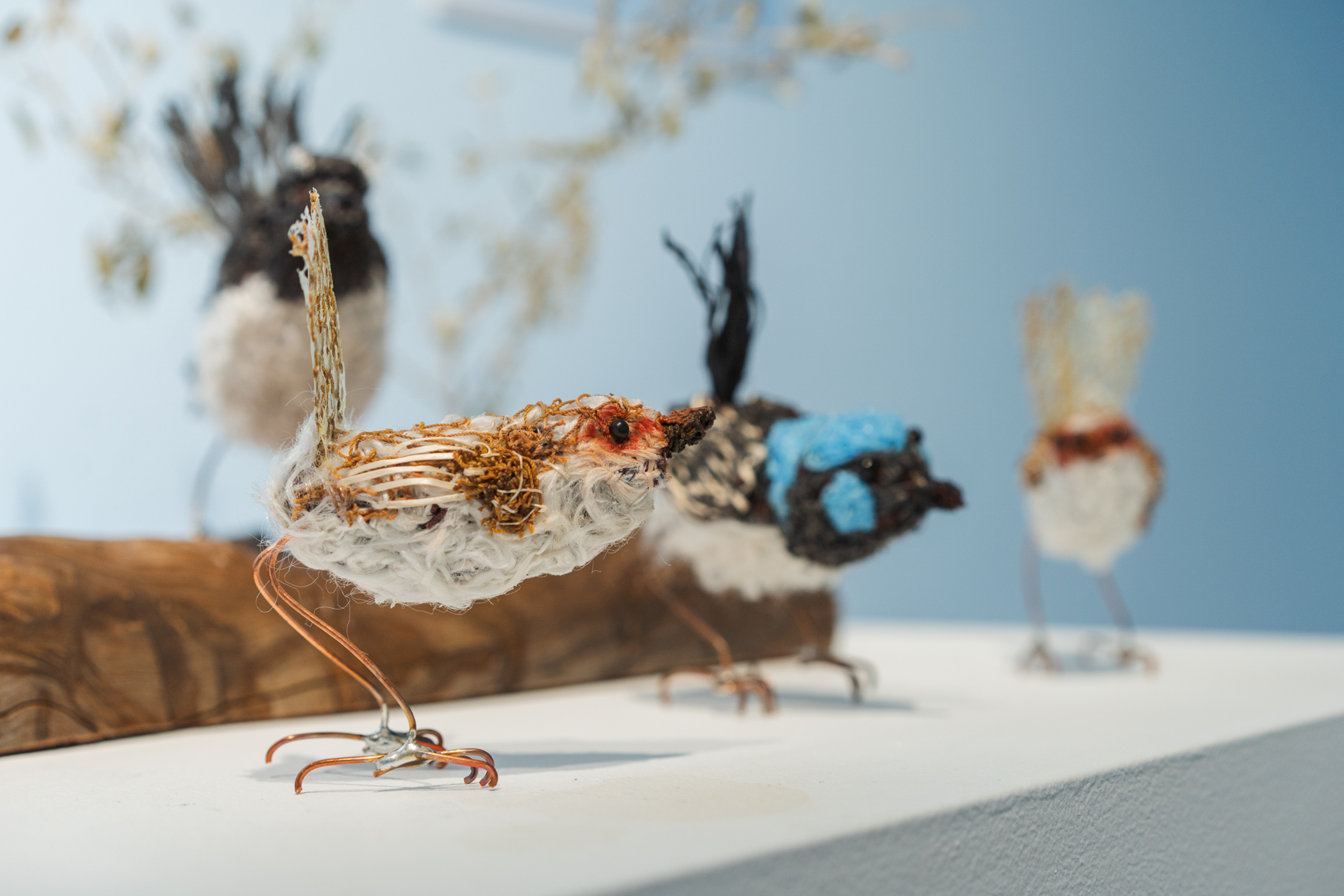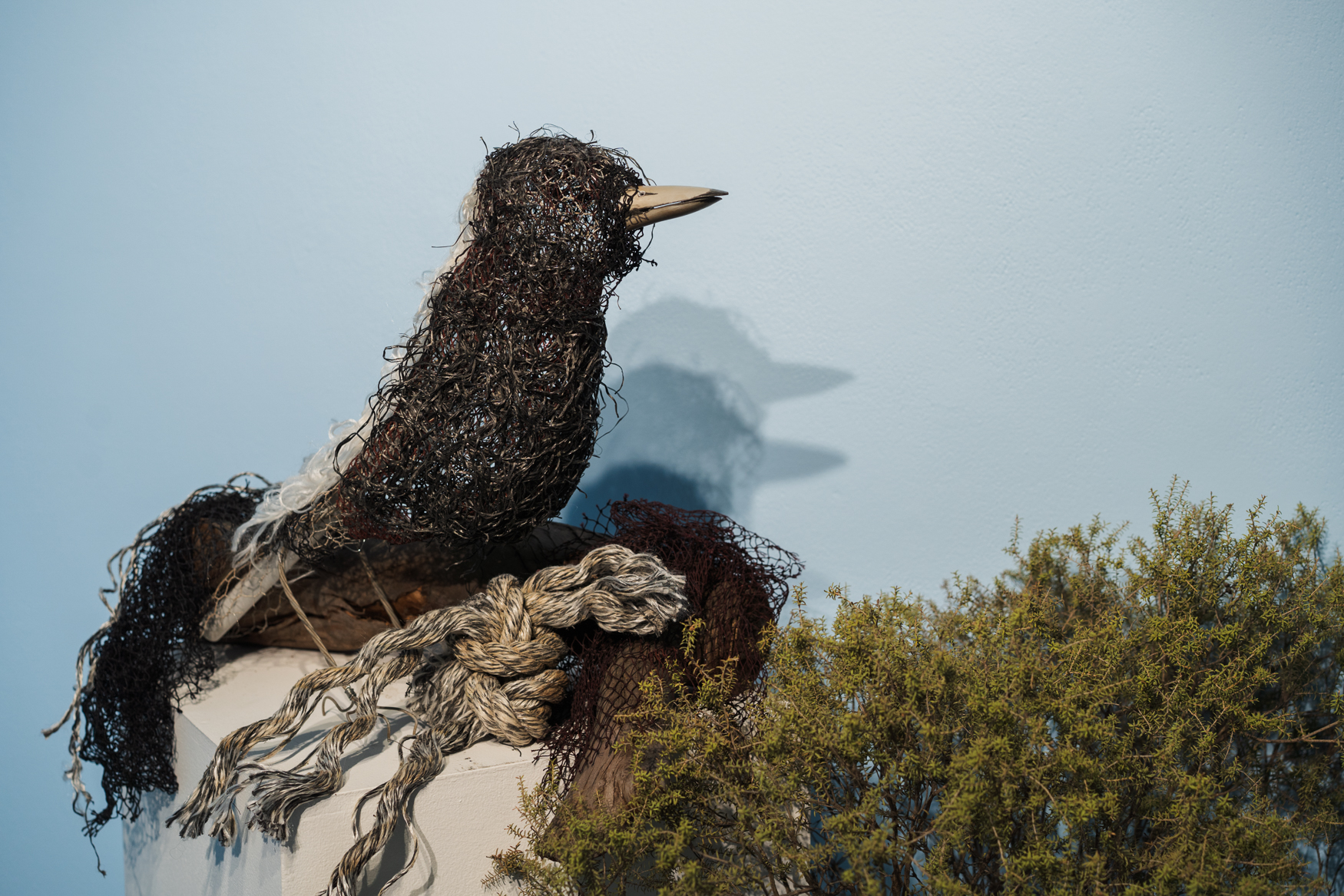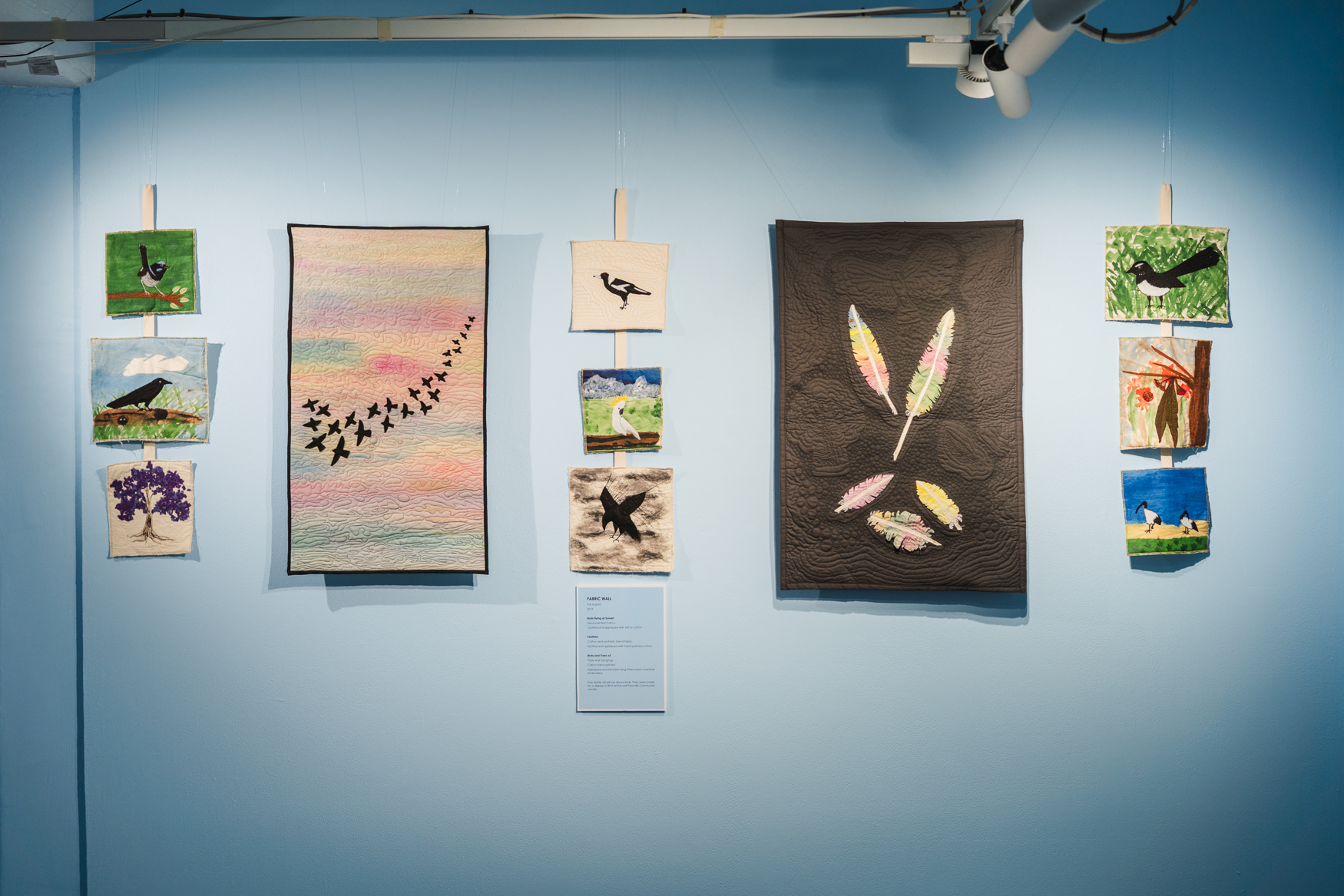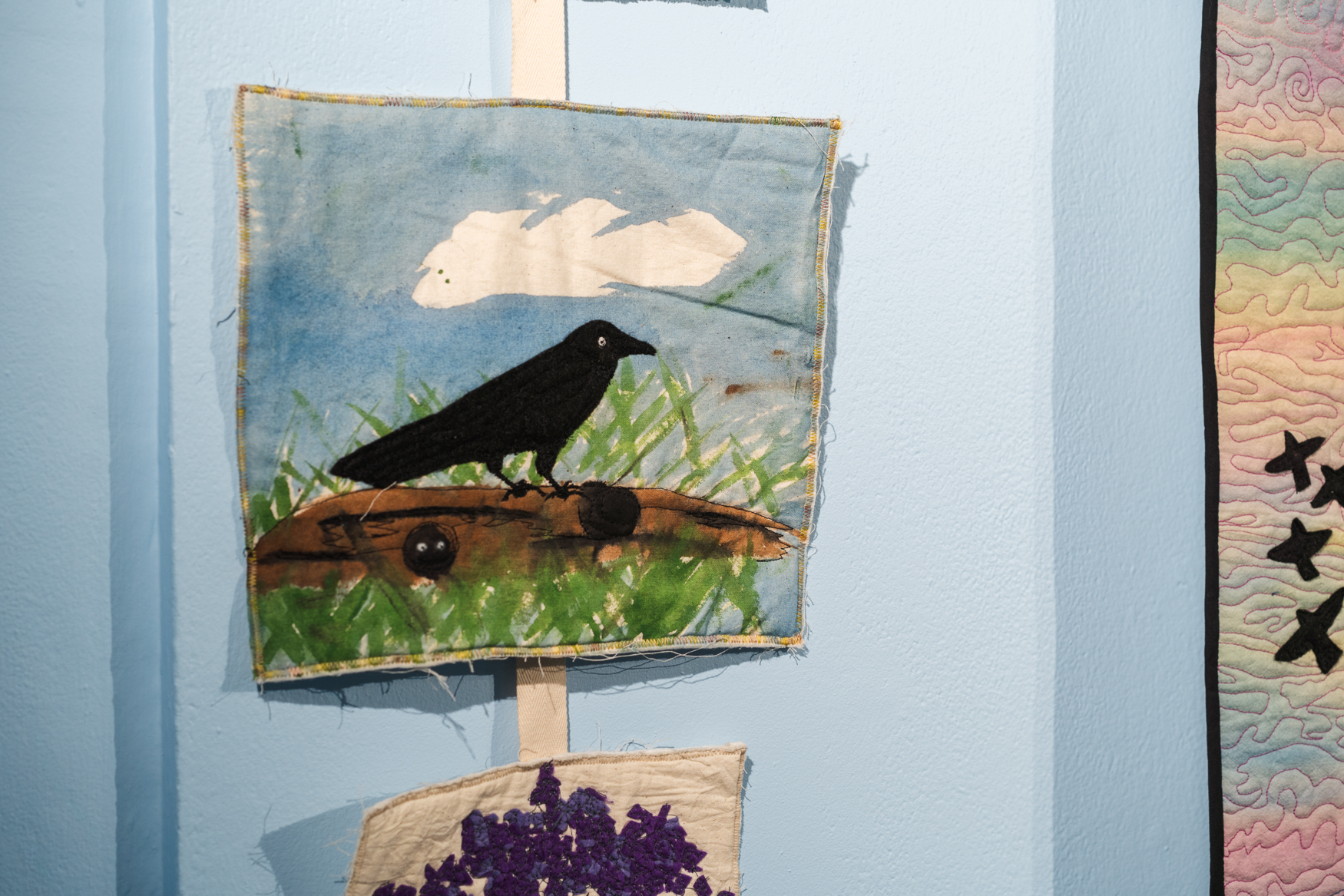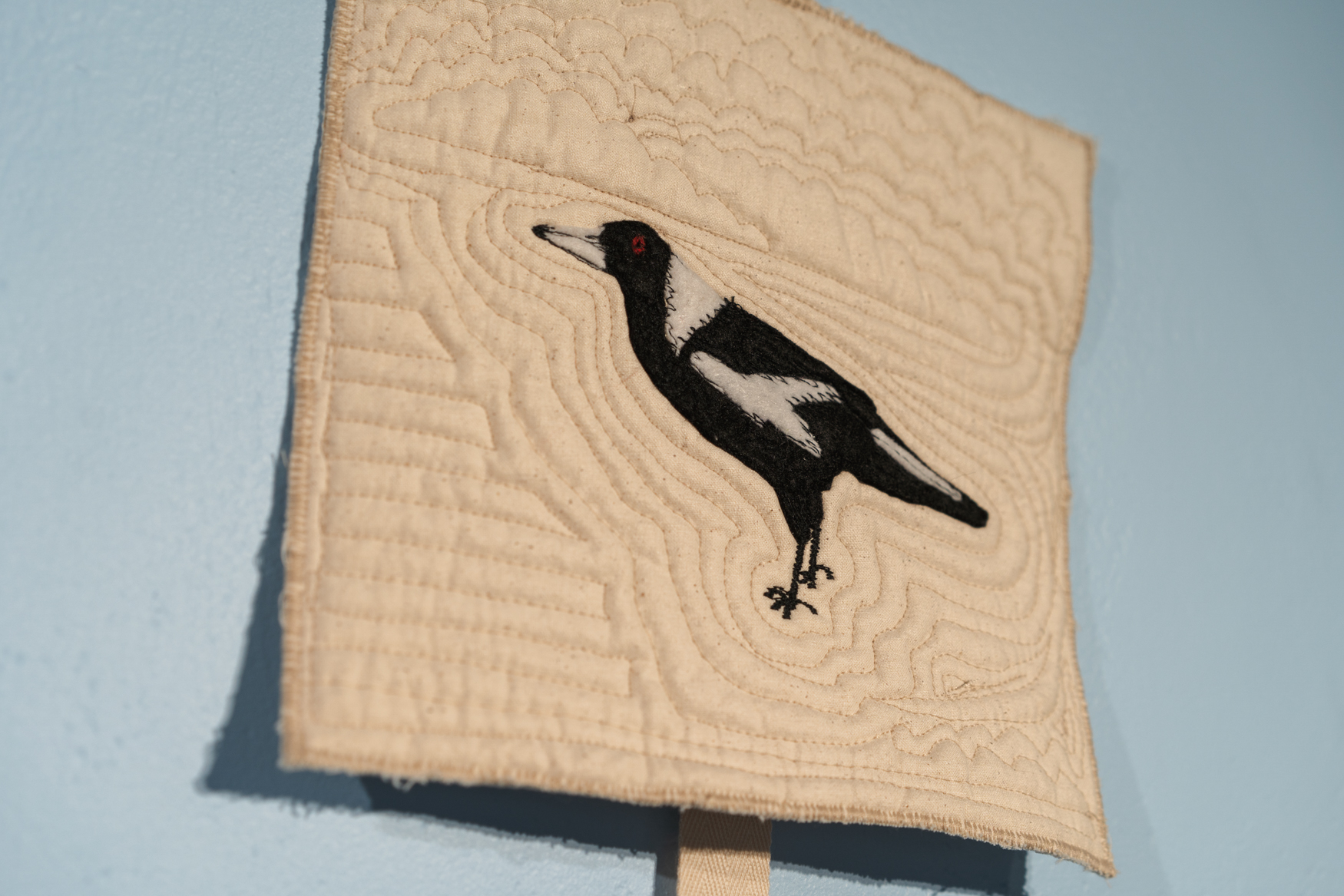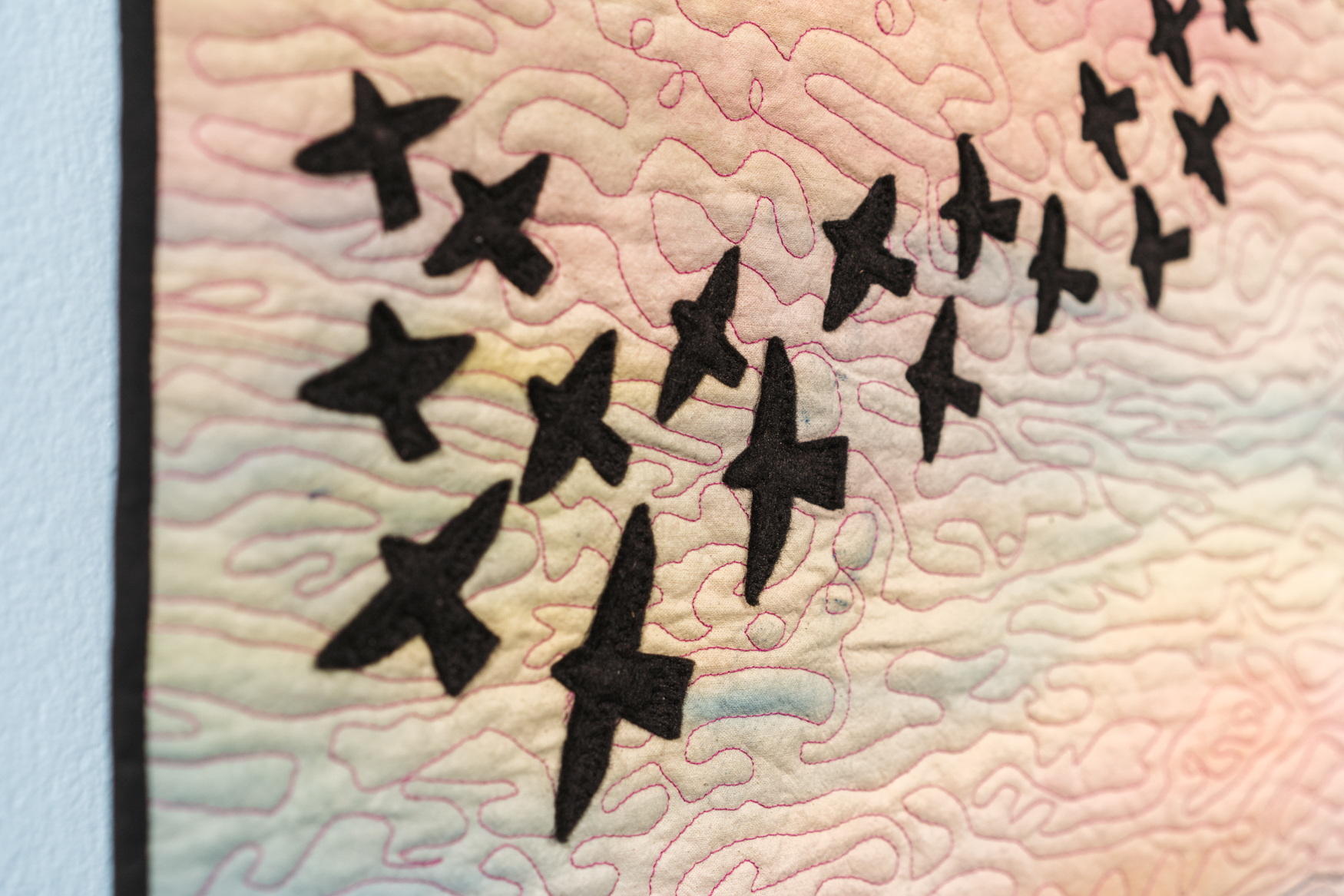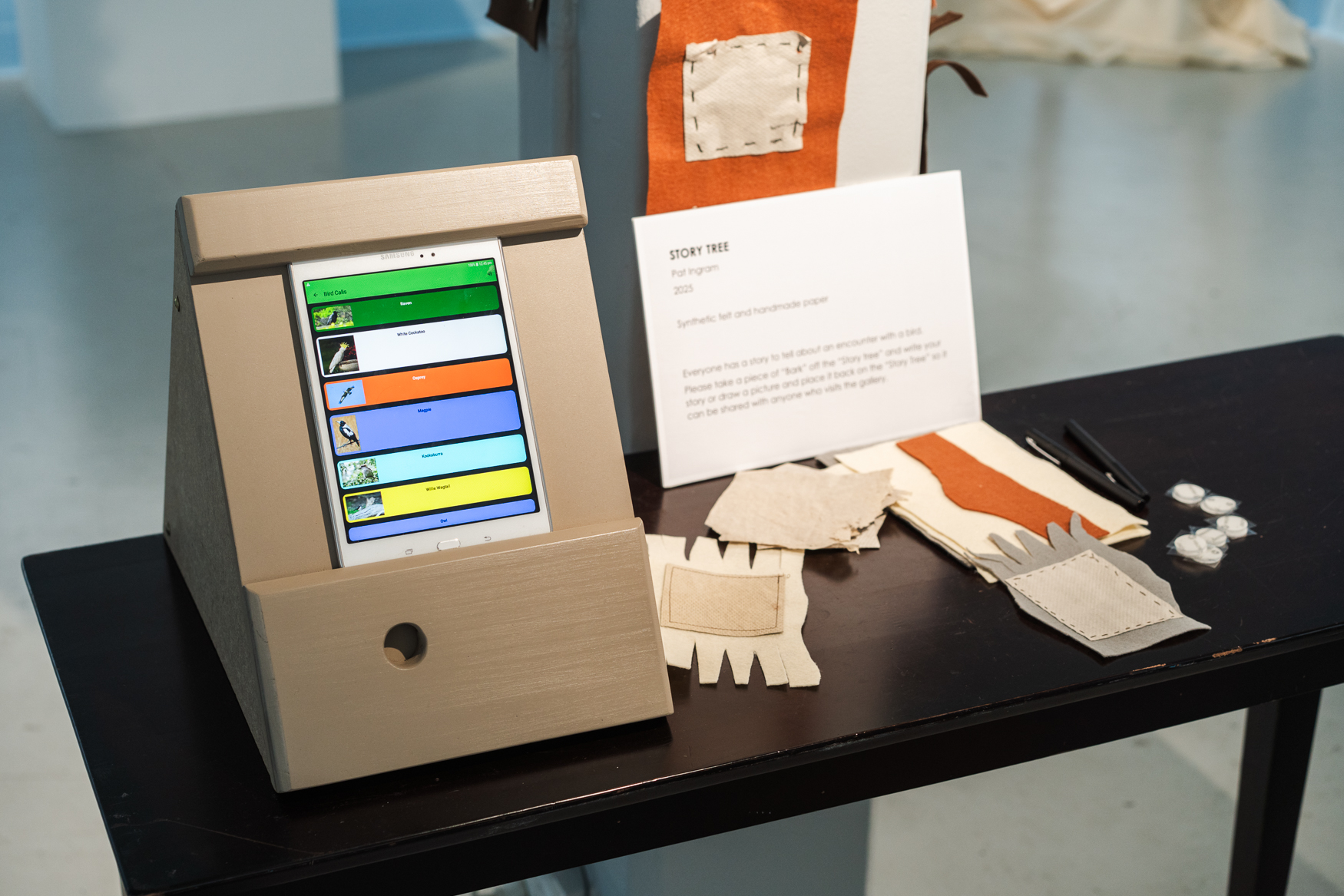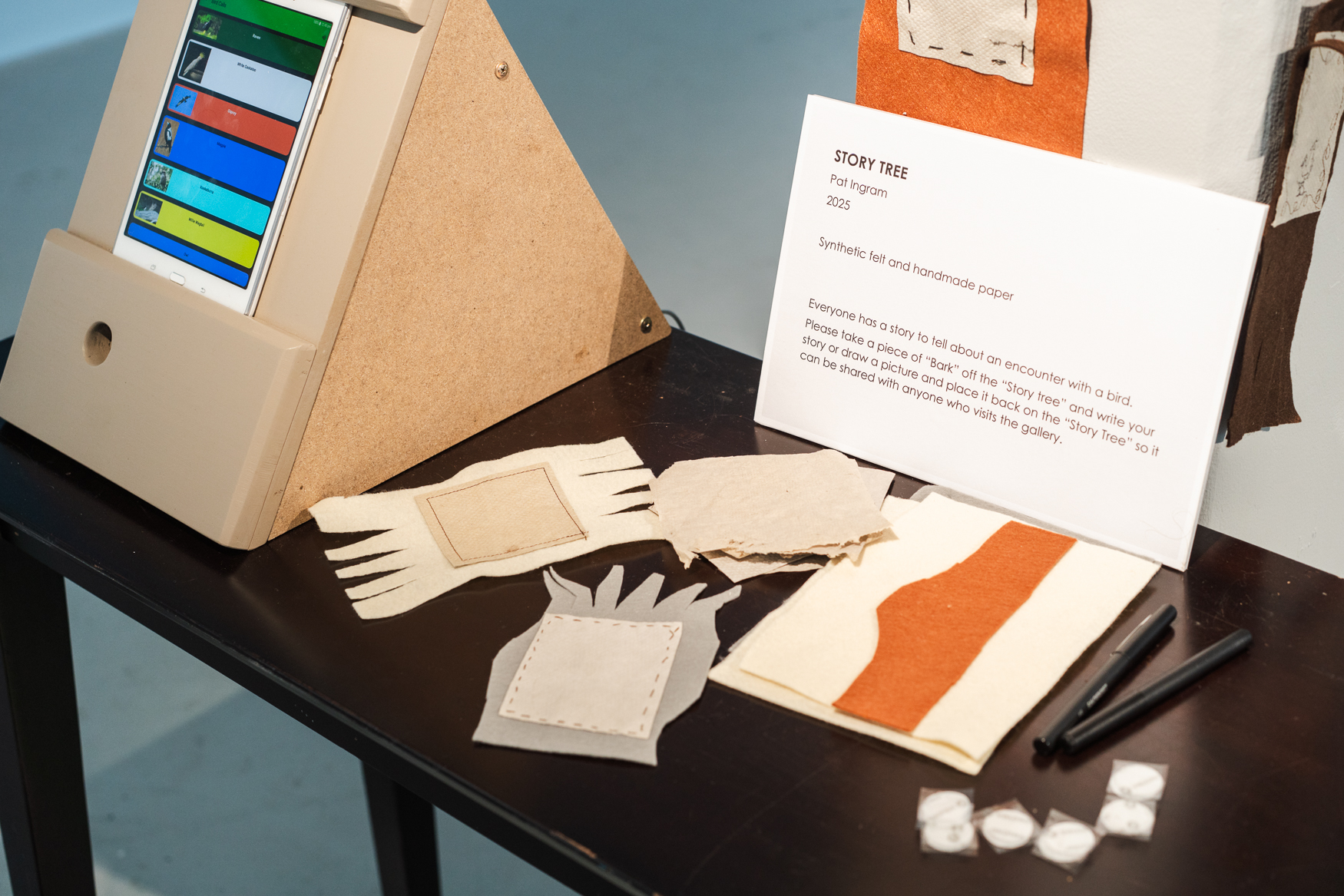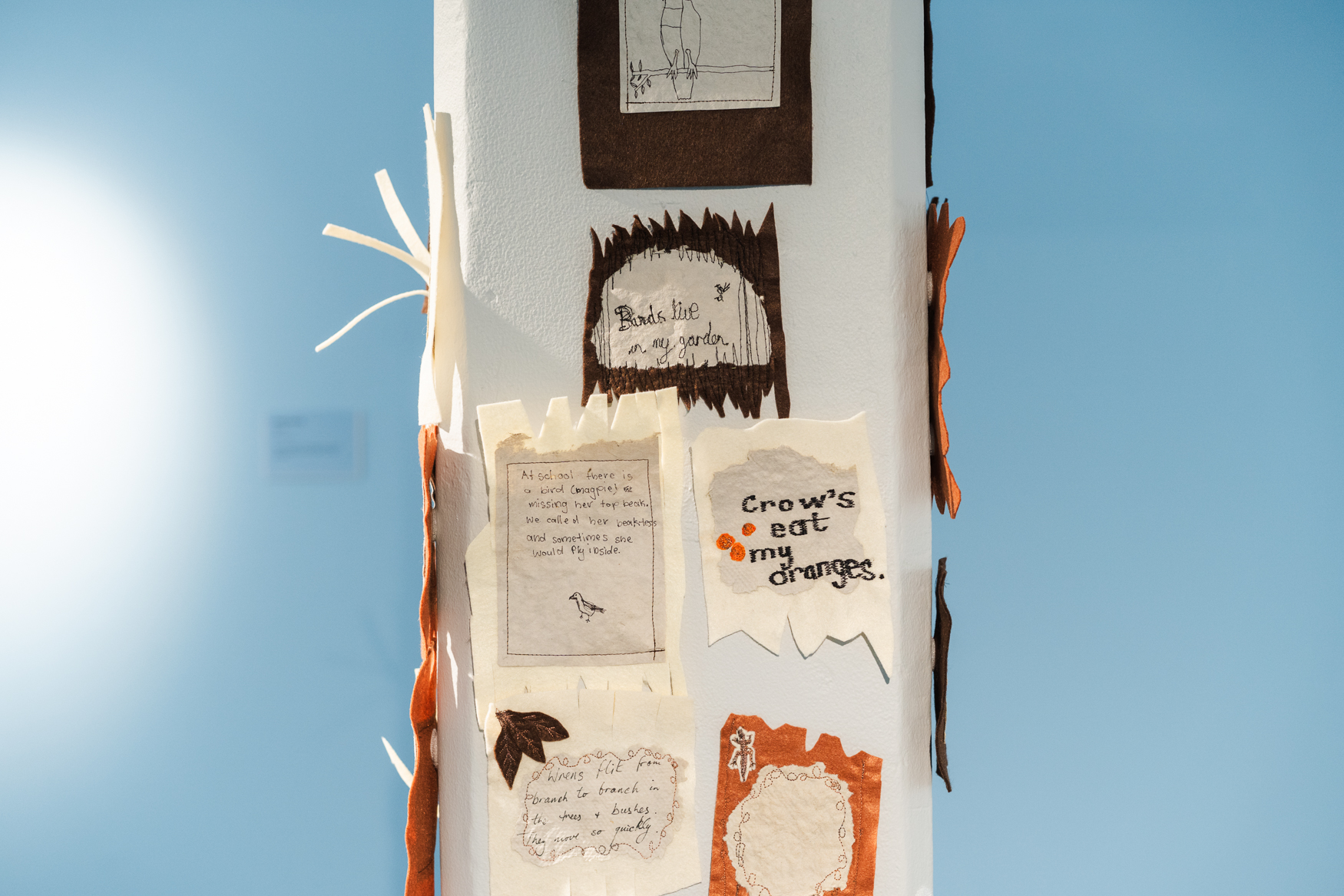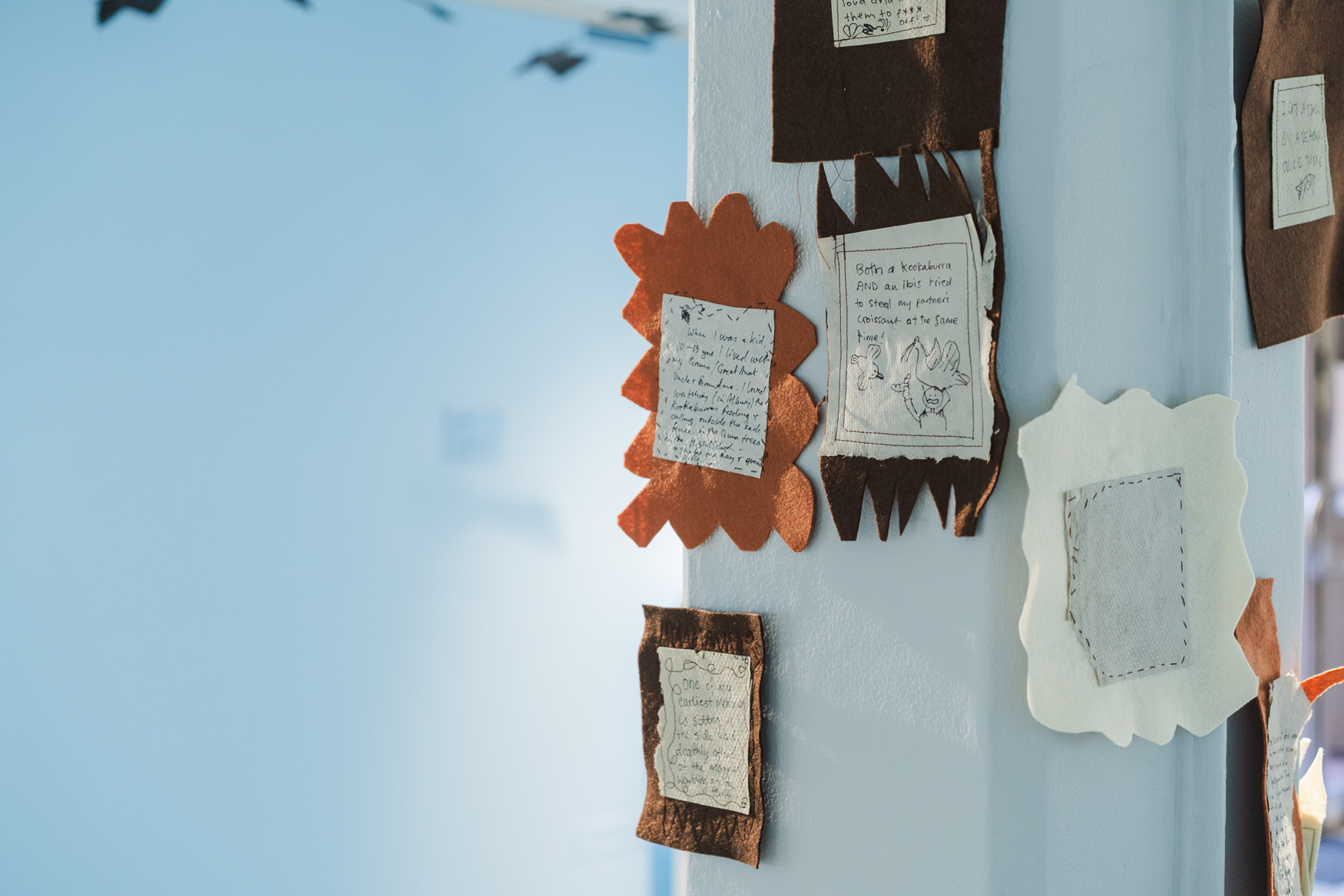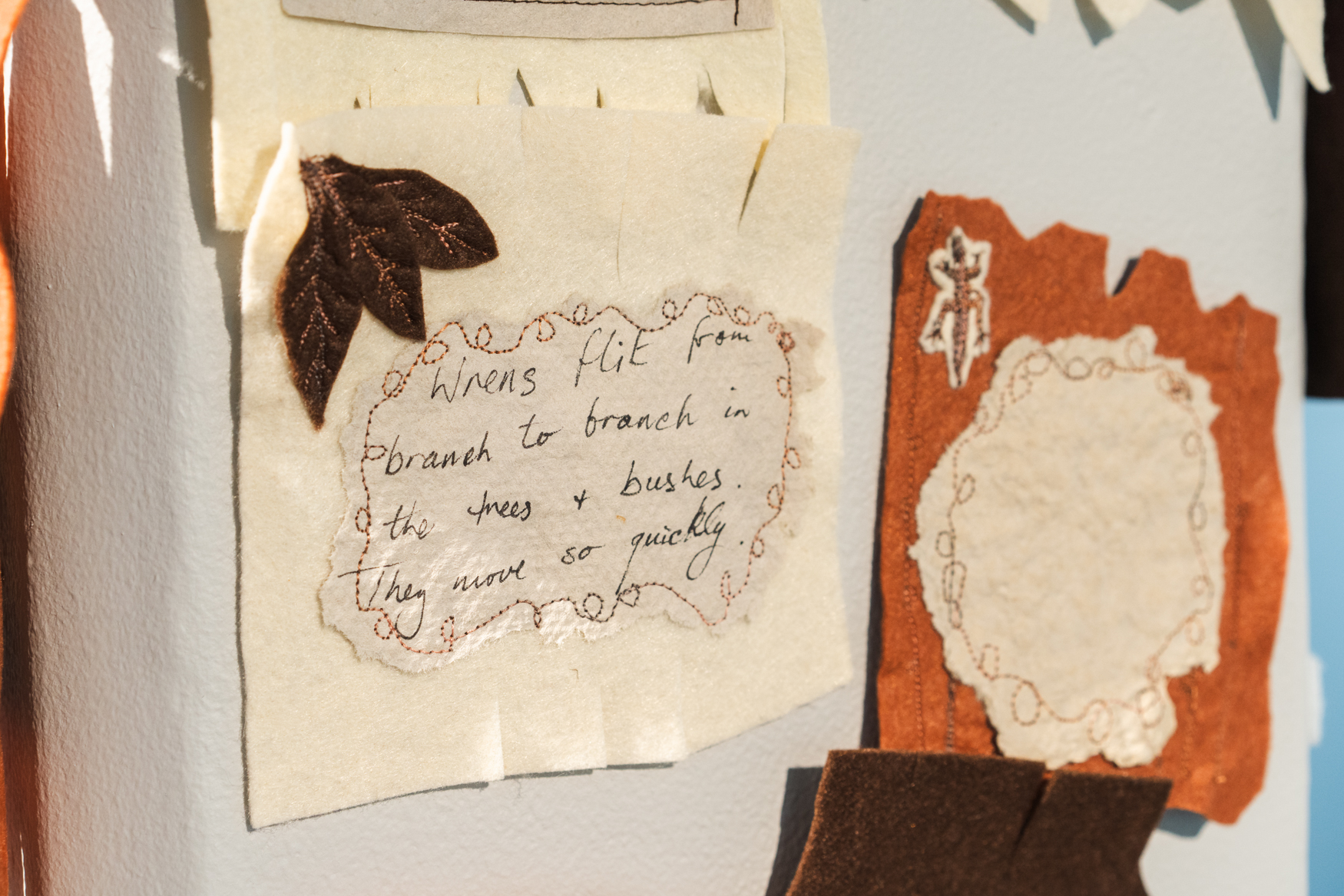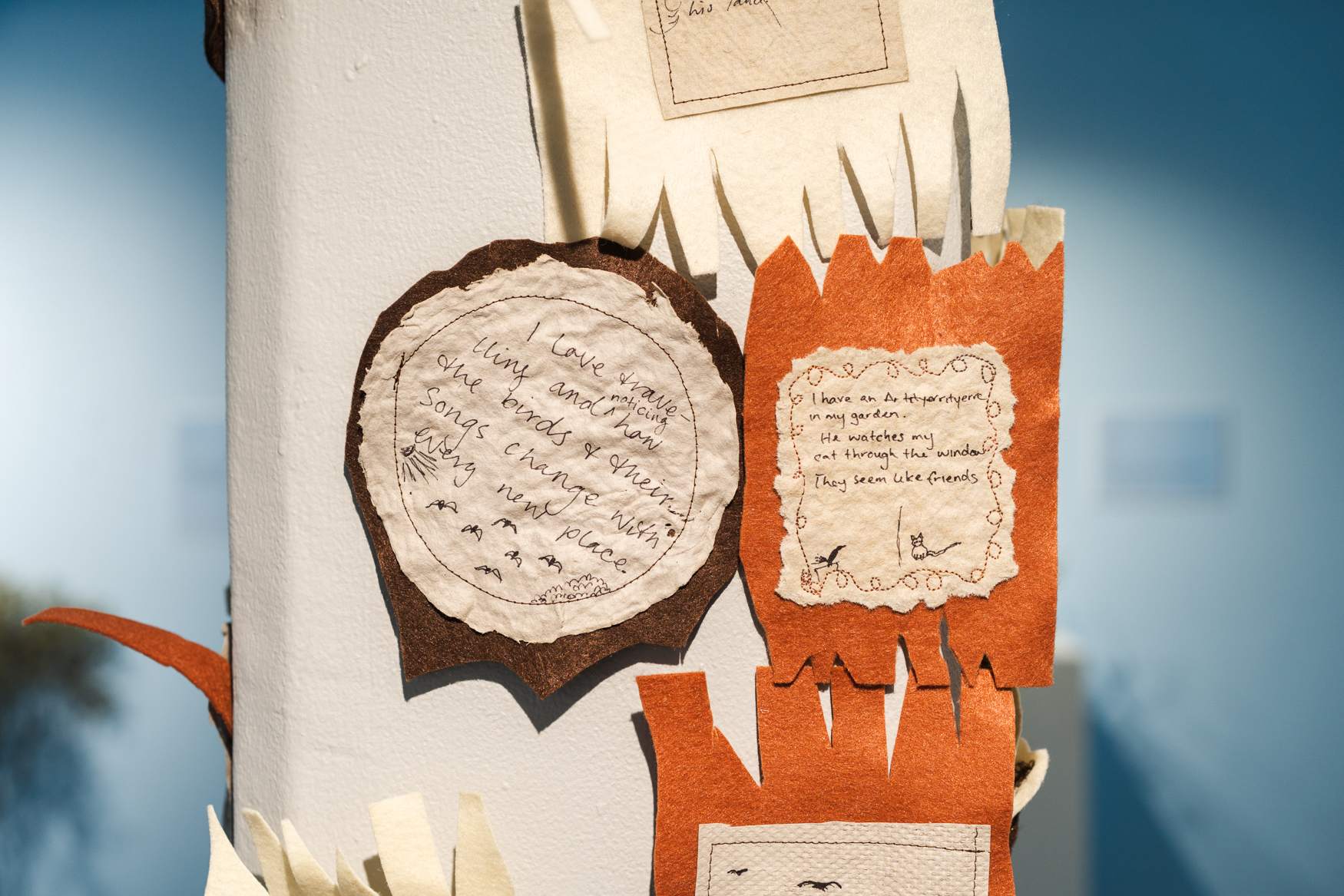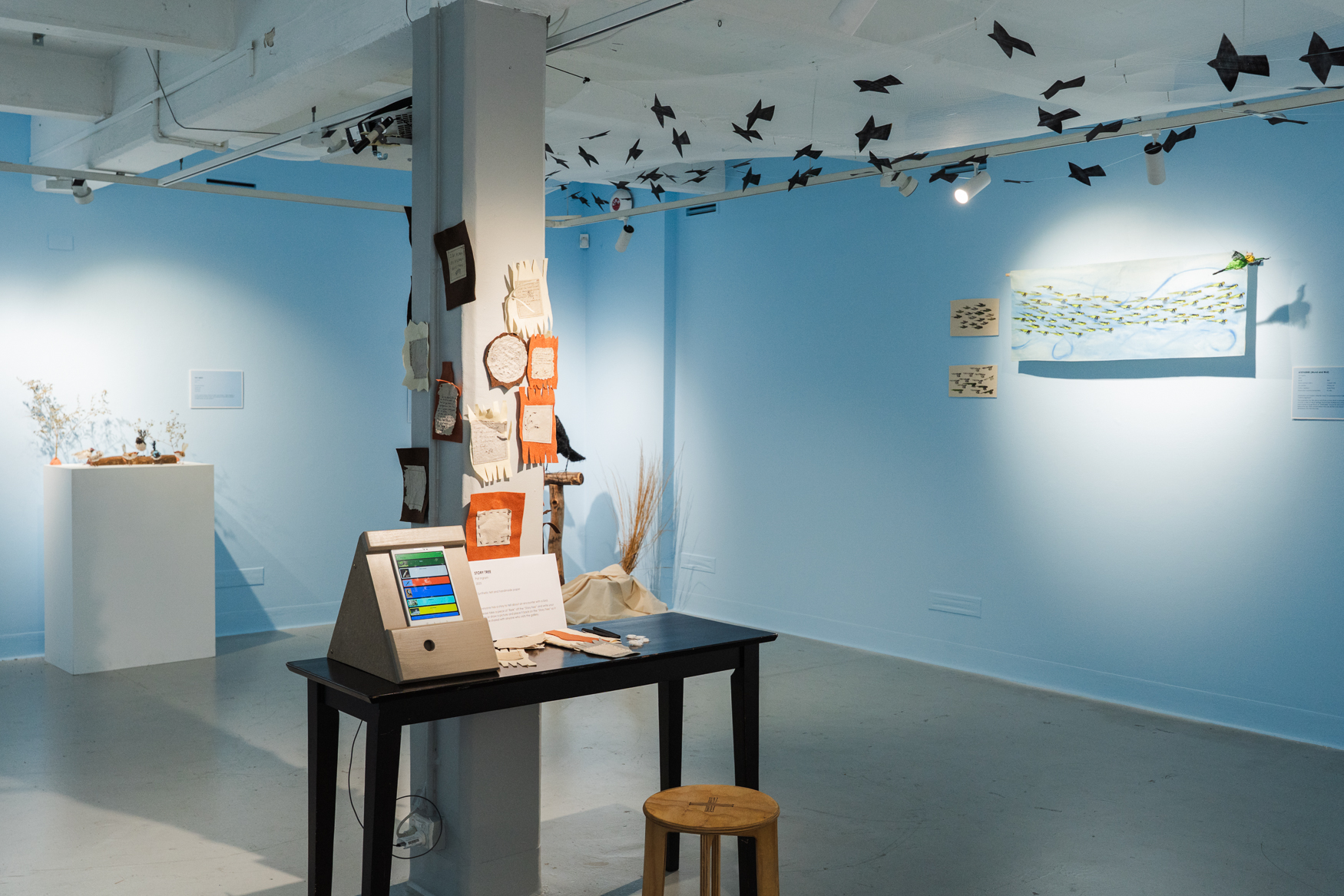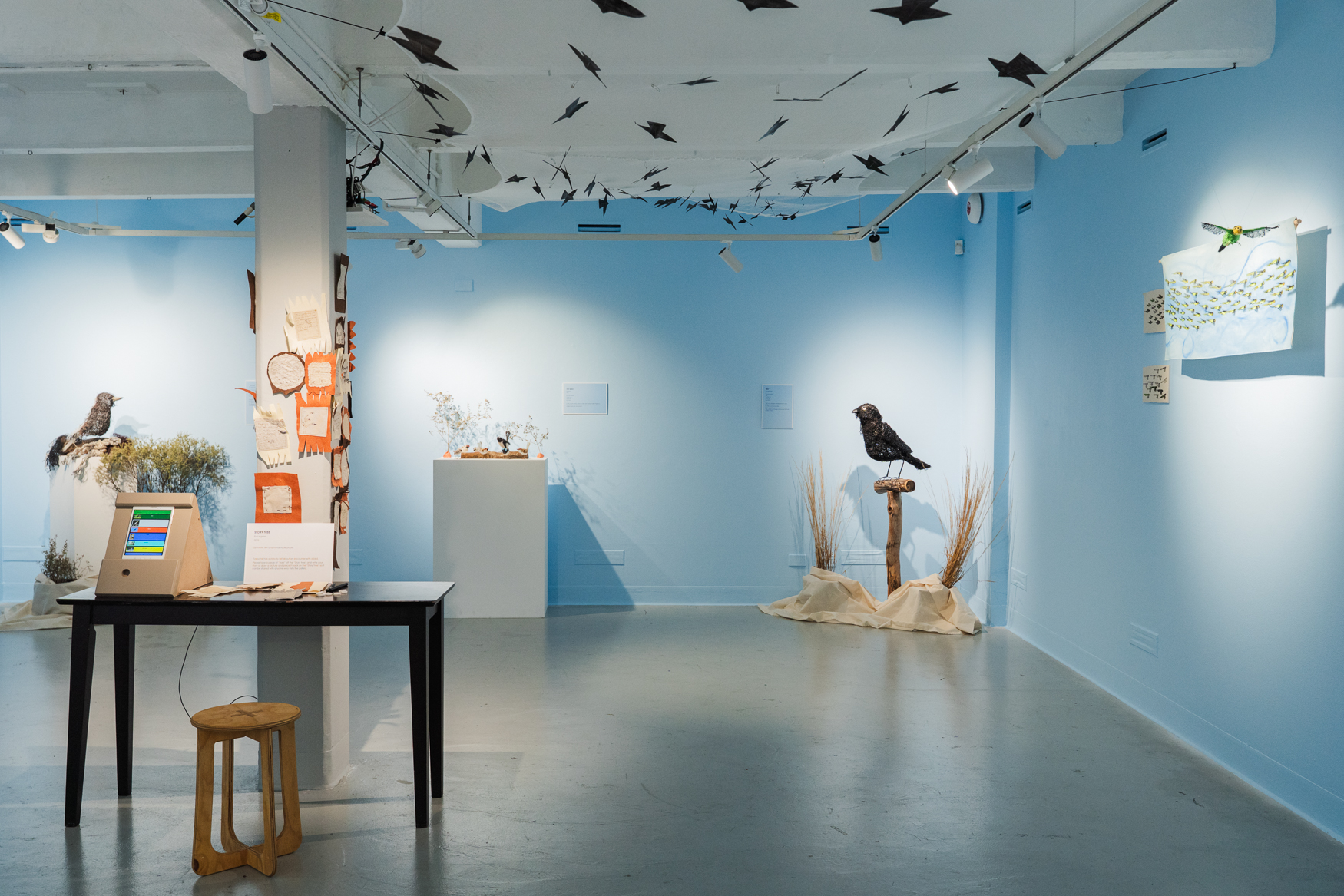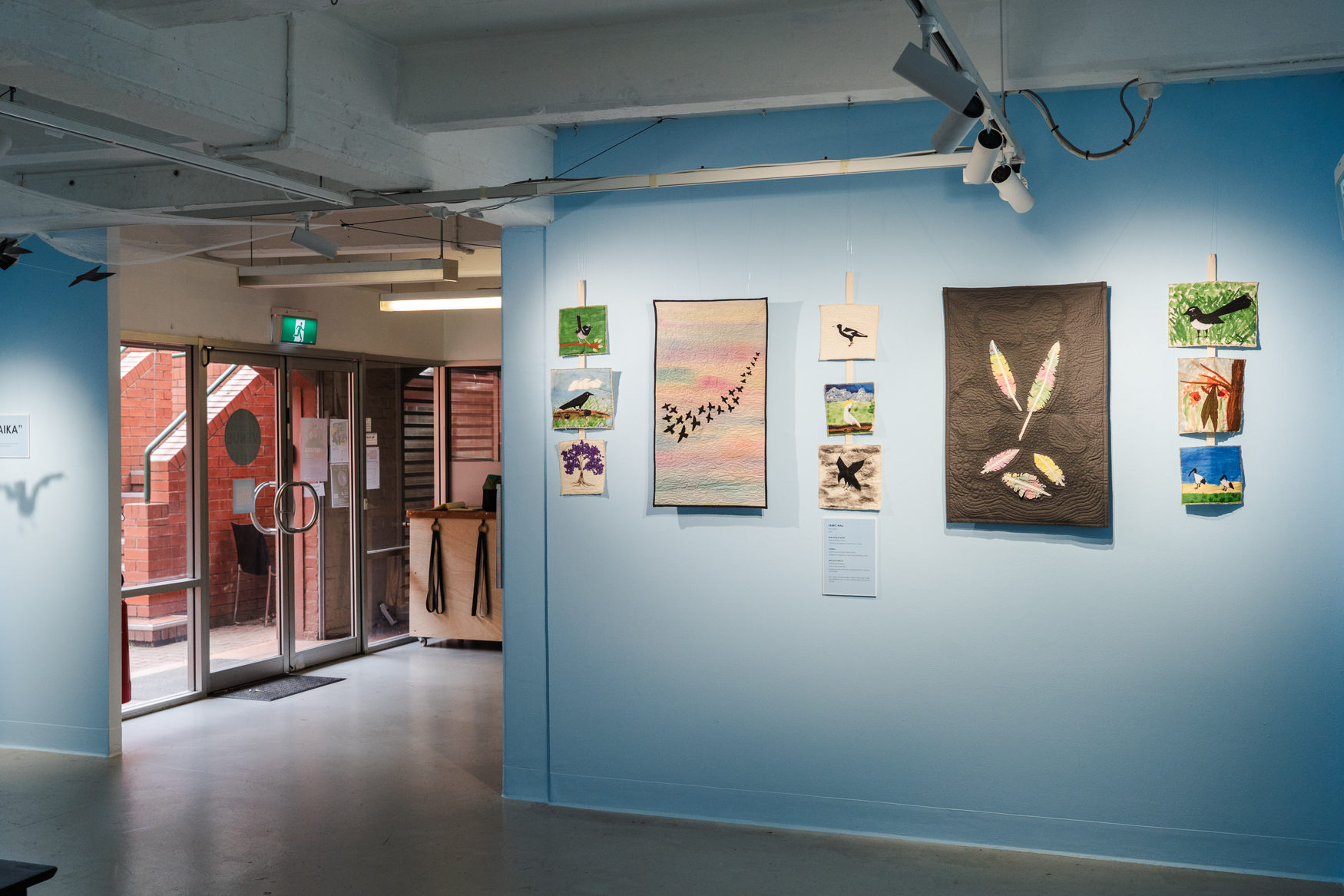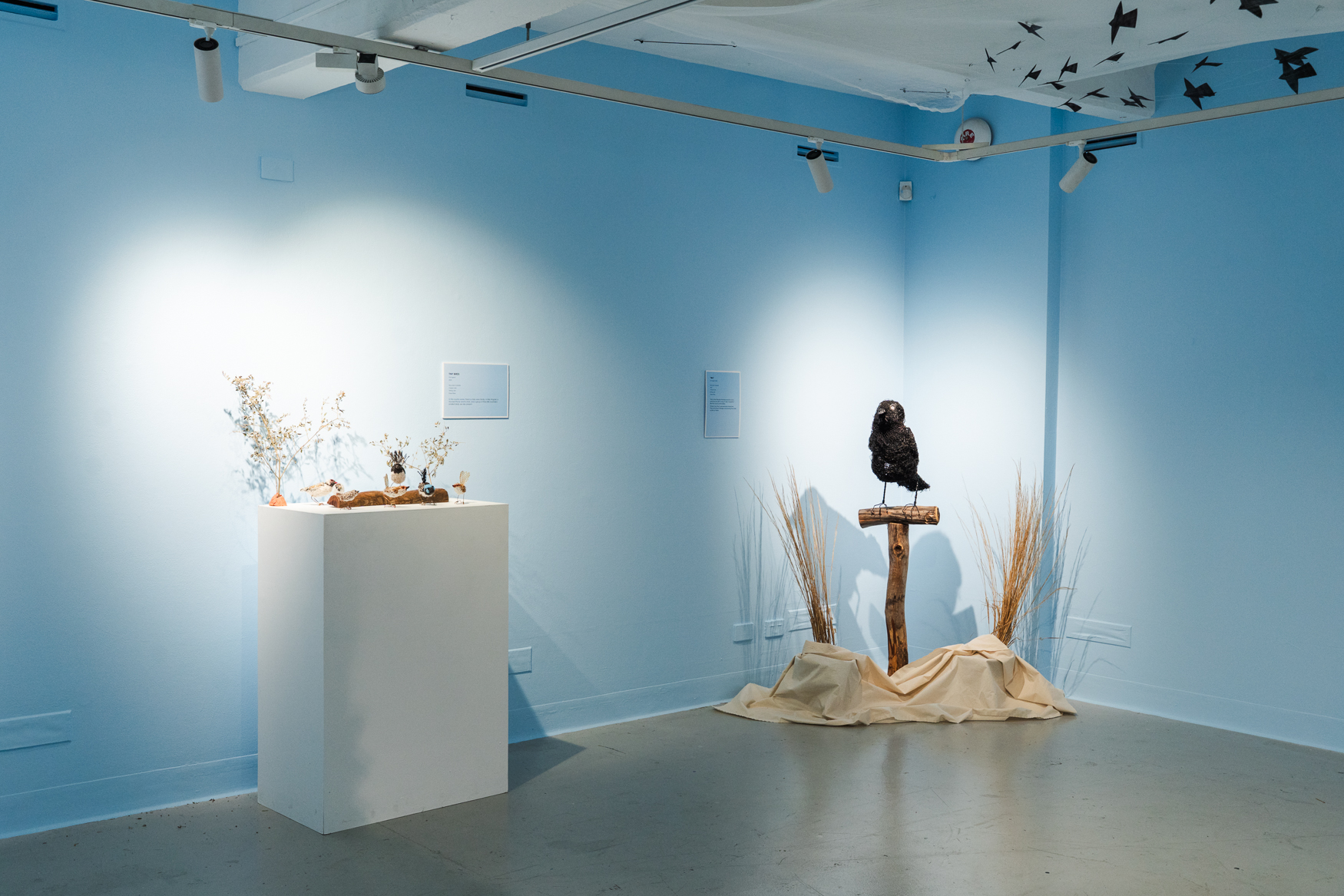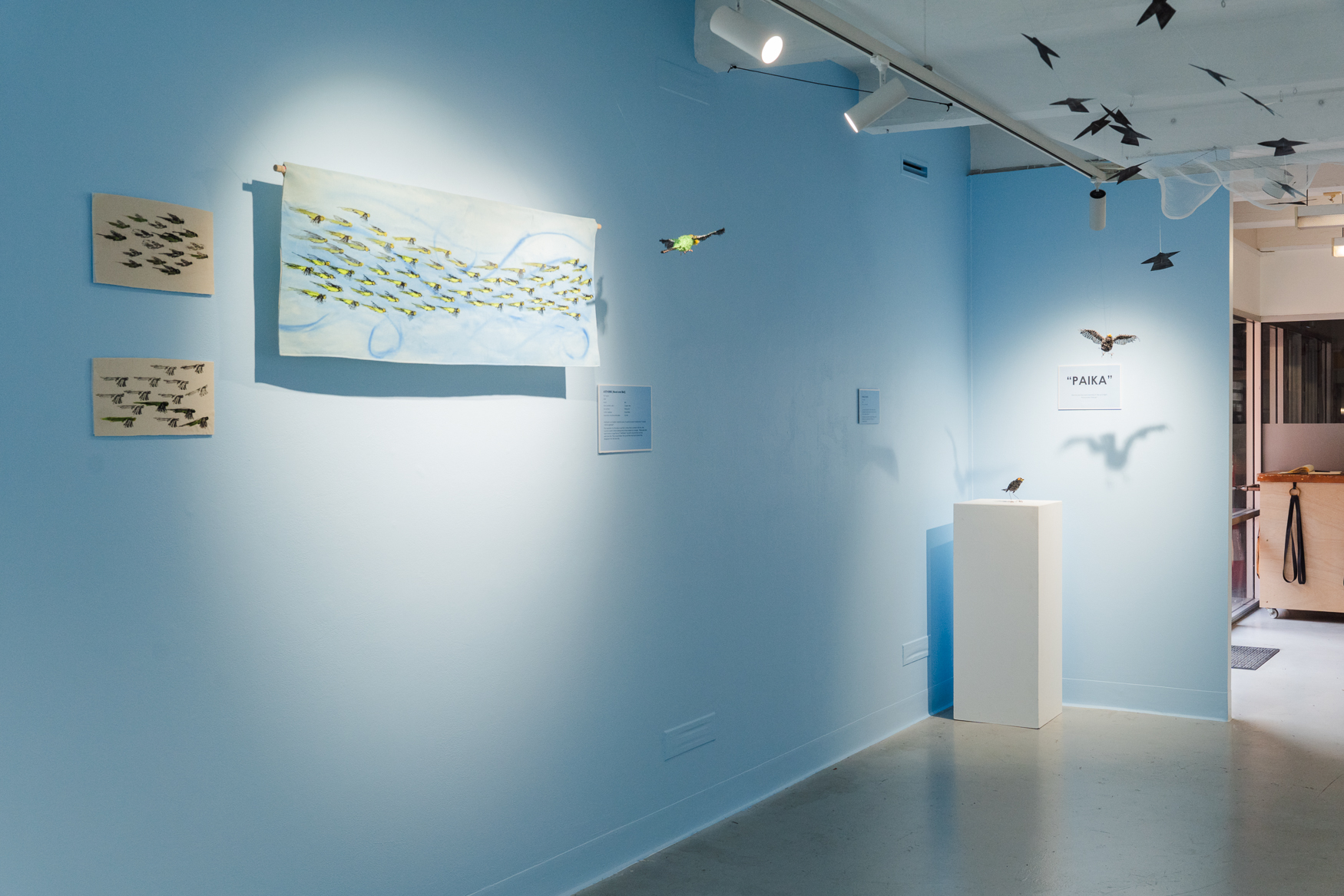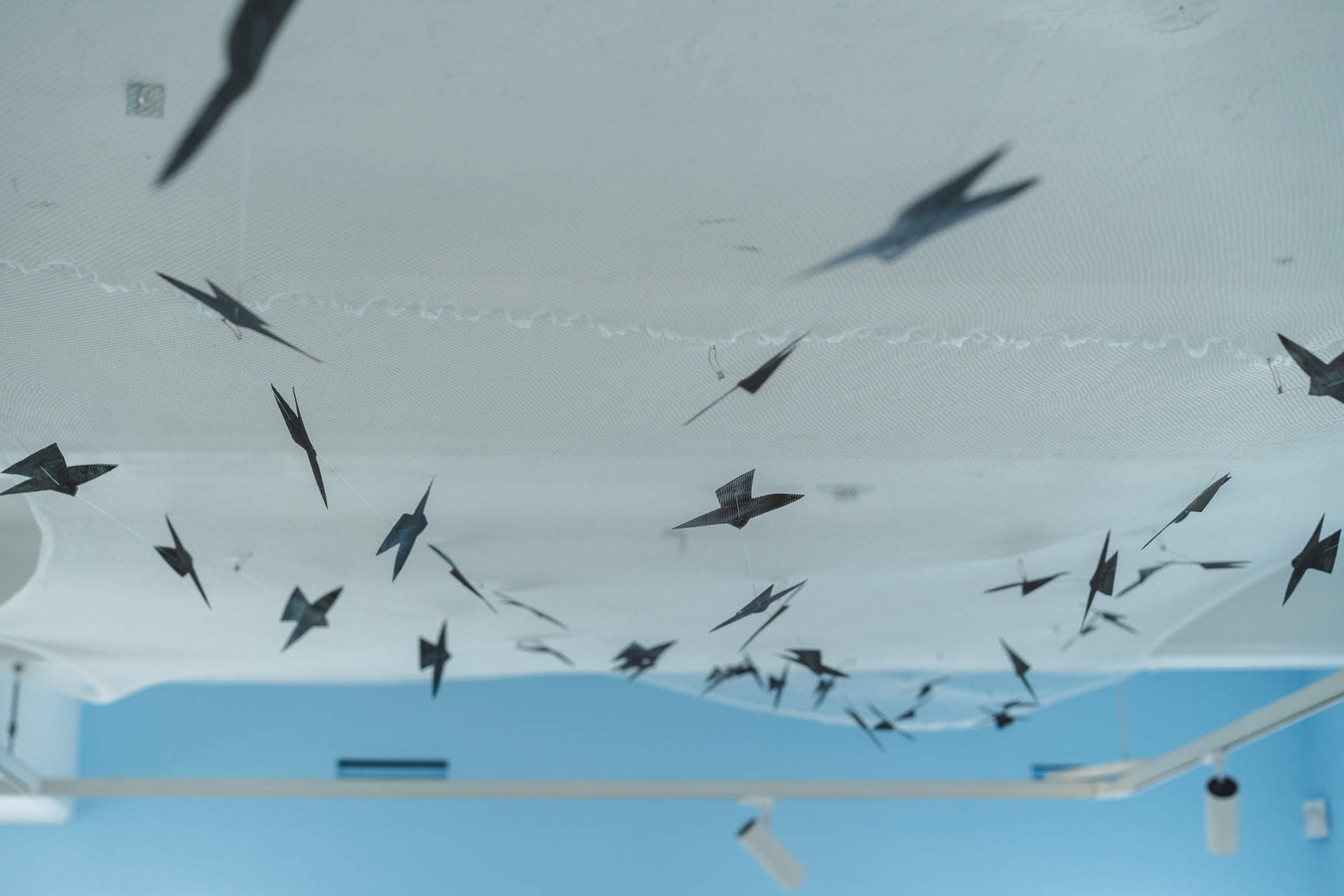Exhibition
Paika
Patricia Ingram
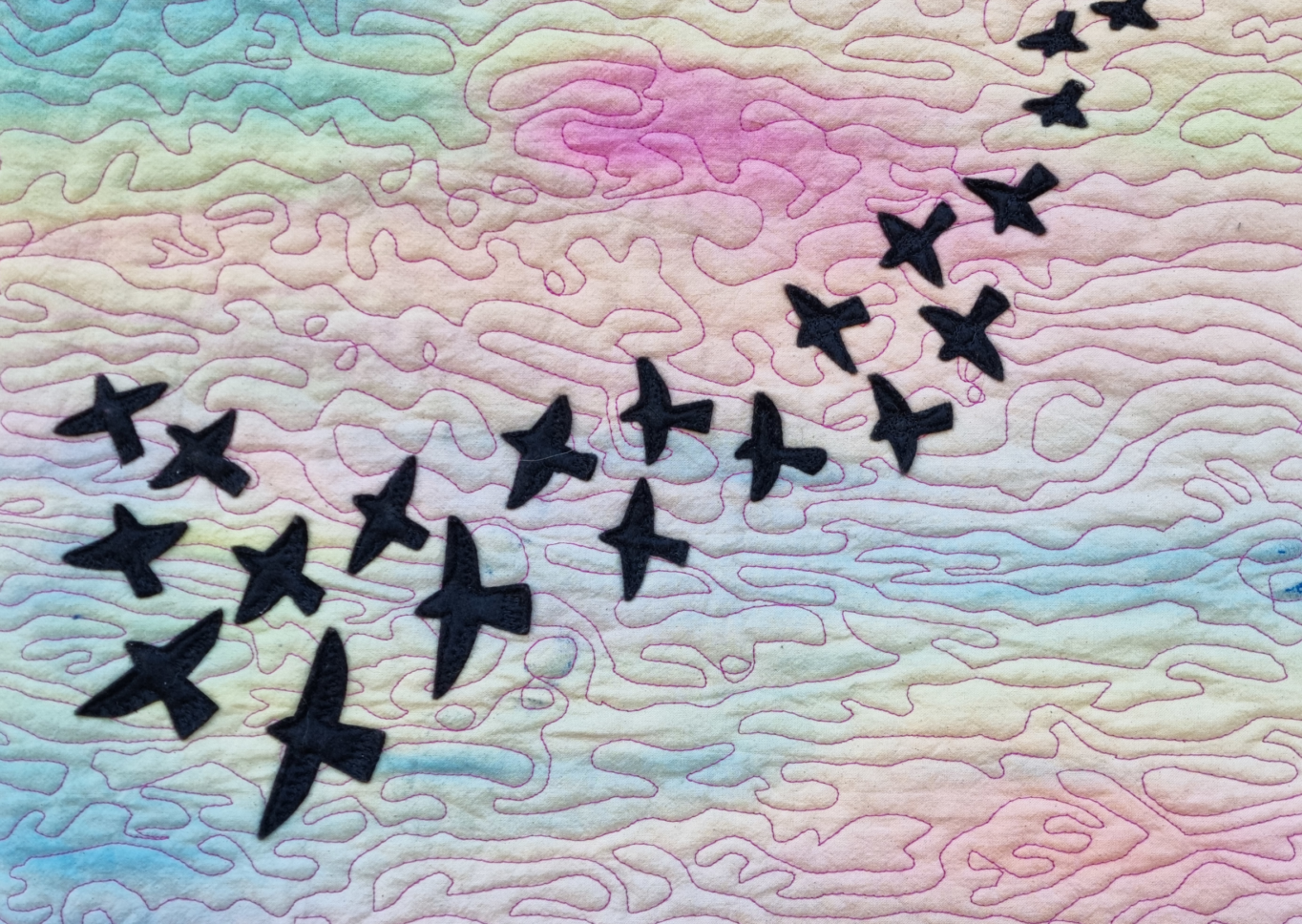
About the exhibition
‘Paika’ (pronounced ‘Bay-ga’) meaning, to rise up, in flight, is Patricia Ingram’s debut solo exhibition, which reflects her fascination with birds. From Tiny Wee-Bills and wrens that move quickly, to ospreys with powerful talons and sharp eyesight for hunting. To the bright green wild budgerigars in the outback, searching for grass seeds and water as they fly together, forming swirling patterns in the sky.
A Koori woman of Wemba Wemba, Yorta Yorta, Wergaia nations, Patricia draws on the legacy of the bird totems of her great grandparents, the black cockatoo and the pelican. Birds often fly away when approached, with a burst of energy as they ascend. Similarly, it’s interesting to consider how rising above our concerns can change our viewpoints on our worries, much like art does for Patricia.
Her artwork reflects her identity, and she hopes to encourage contemplation about these wonderful creatures and the need to protect them and their habitats, as we share their environment.
5th June 2025 – 11th July 2025
JOYFULLY QUIET
Sitting quietly, contemplating life
Ears ringing from the silence around me
It’s broken by the sound of a crow, Waaaa!
A bird catches my eye as it flits past
Then suddenly, a flock of birds fly up
I smile and feel a sudden burst of joy
Pat Ingram
2024
PAIKA (Part II)
2025
Video Projection
Part 2 of Paika is an installation featuring a video of birds that rise up or fly up when surprised.
Explore the exhibition
-
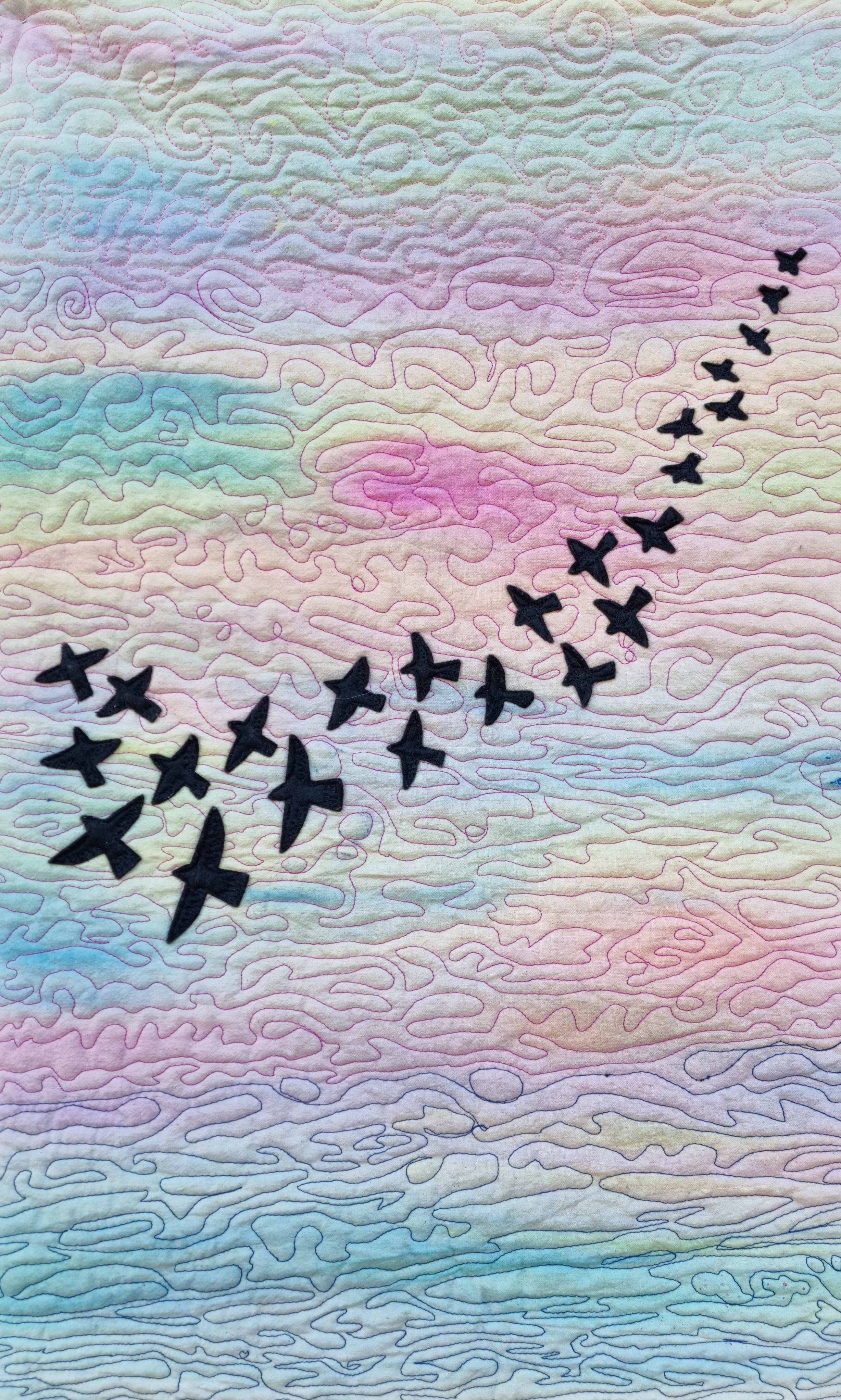
- Artwork Birds flying Up
- Year 2019
- Medium hand painted calico, free motion machine embroidery, synthetic felt applique, cotton wadding
Image credit: David Ingram
-
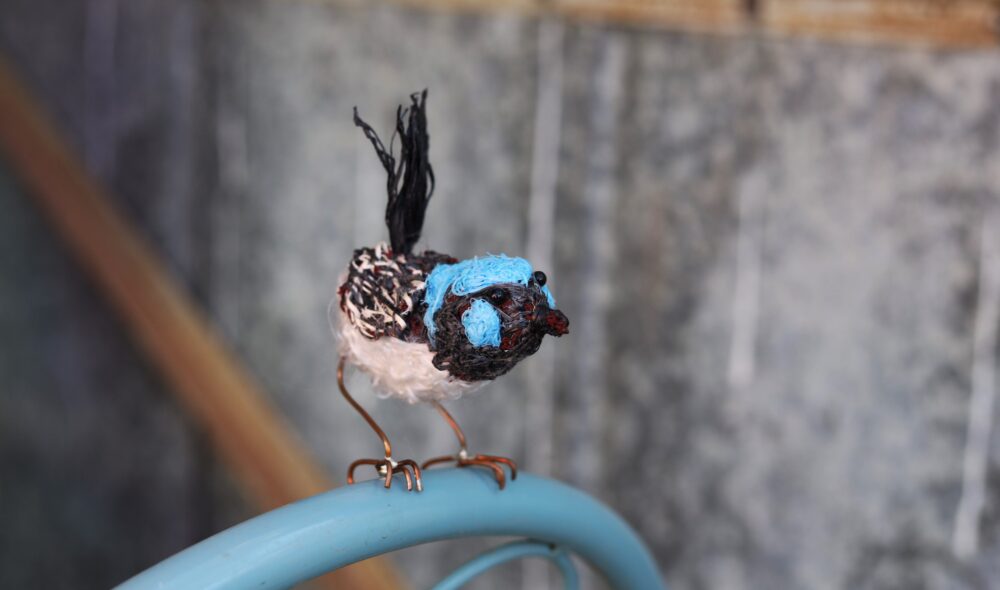
- Artwork Superb fairy wren
- Year 2024
- Medium 100% recycled materials, copper wire from discarded cables, discarded fishing nets, old rope fibres
Image credit: Brad Ingram
-
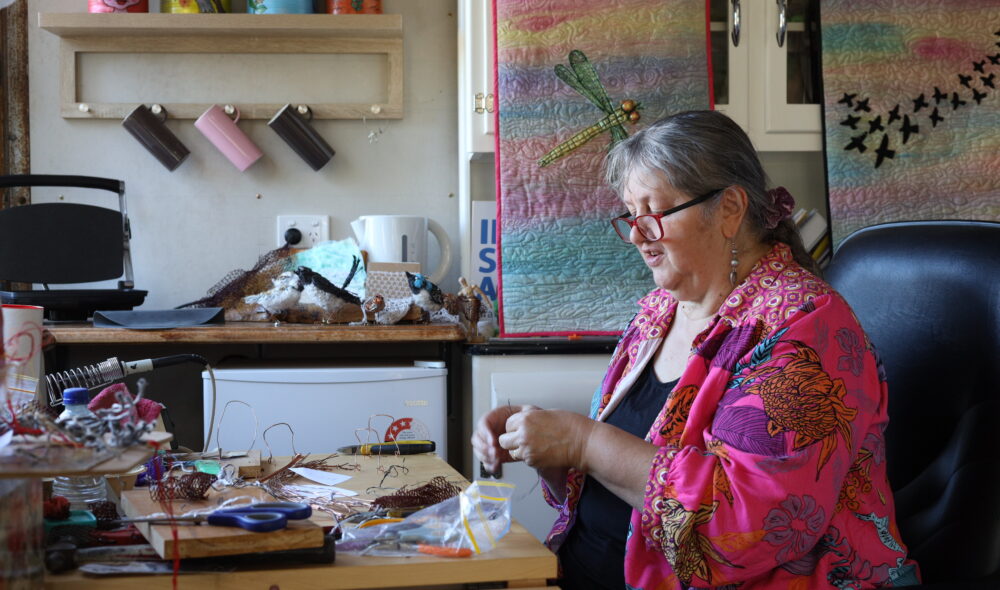
- Artwork Pat in her Bute Studio making birds
- Year 2025
Image credit: Brad Ingram
-

- Artwork Pats hands making a bird
Image credit: Brad Ingram
-
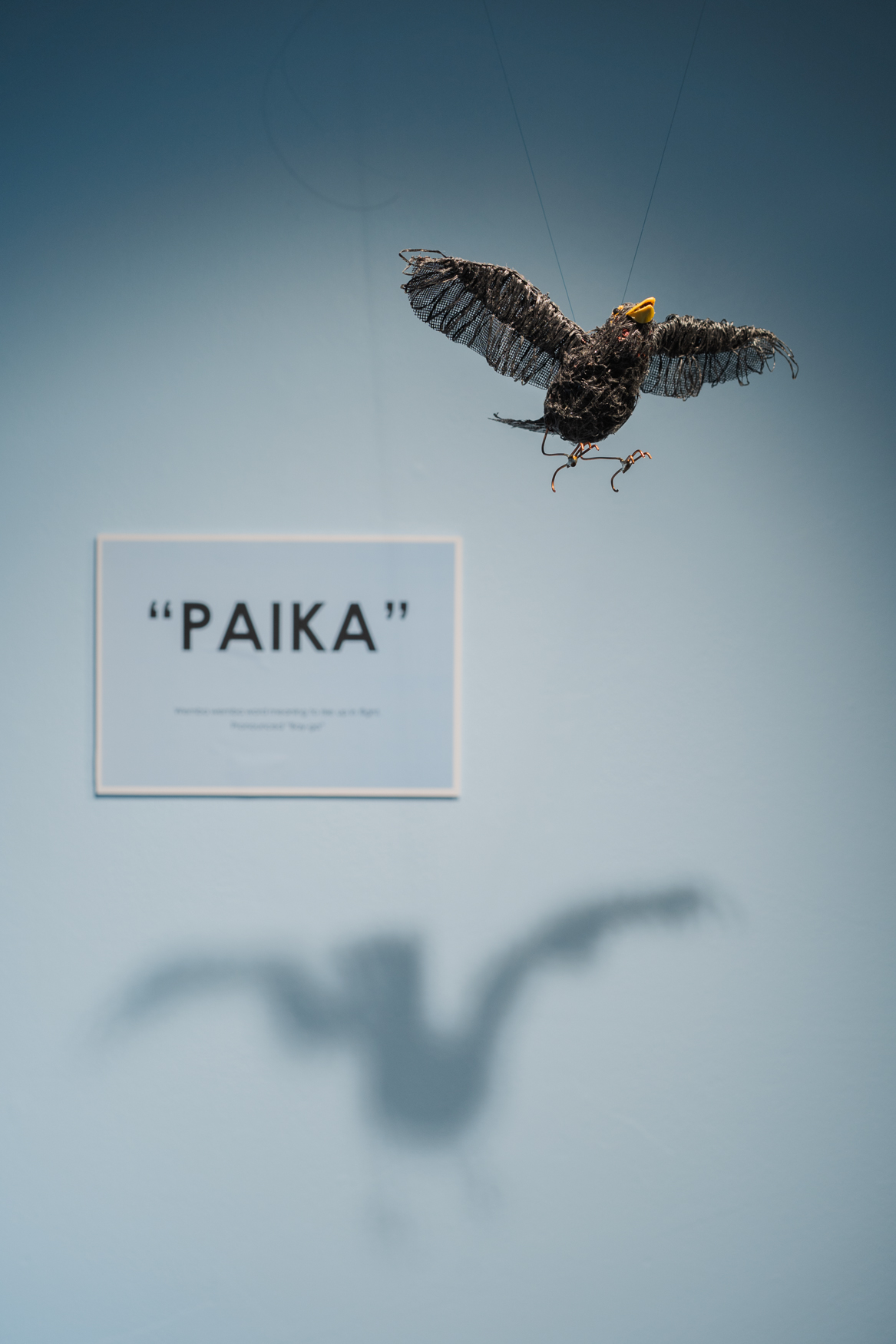
- Artwork Paika (Part 1)
- Year 2025
- Medium Plastic and fibreglass
Image credit: Lana Adams
Just like the exhibition titled “Paika” this installation features birds that rise up or fly when approached.
Paika is a Wemba wemba word meaning to rise up in flight. Pronounced “Bay-ga”
Focusing on positive thoughts helps us rise above our worries and change our perspective.
-
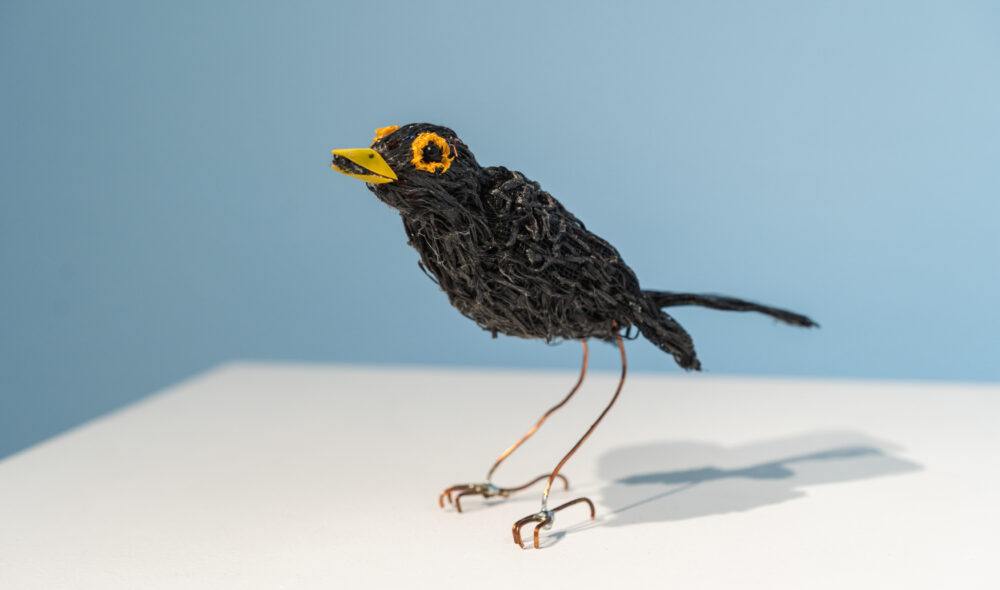
- Artwork PAIKA (Part I)
- Year 2025
- Medium Plastic and fiberglass
- Price Prices on Request
Image credit: Lana Adams
-
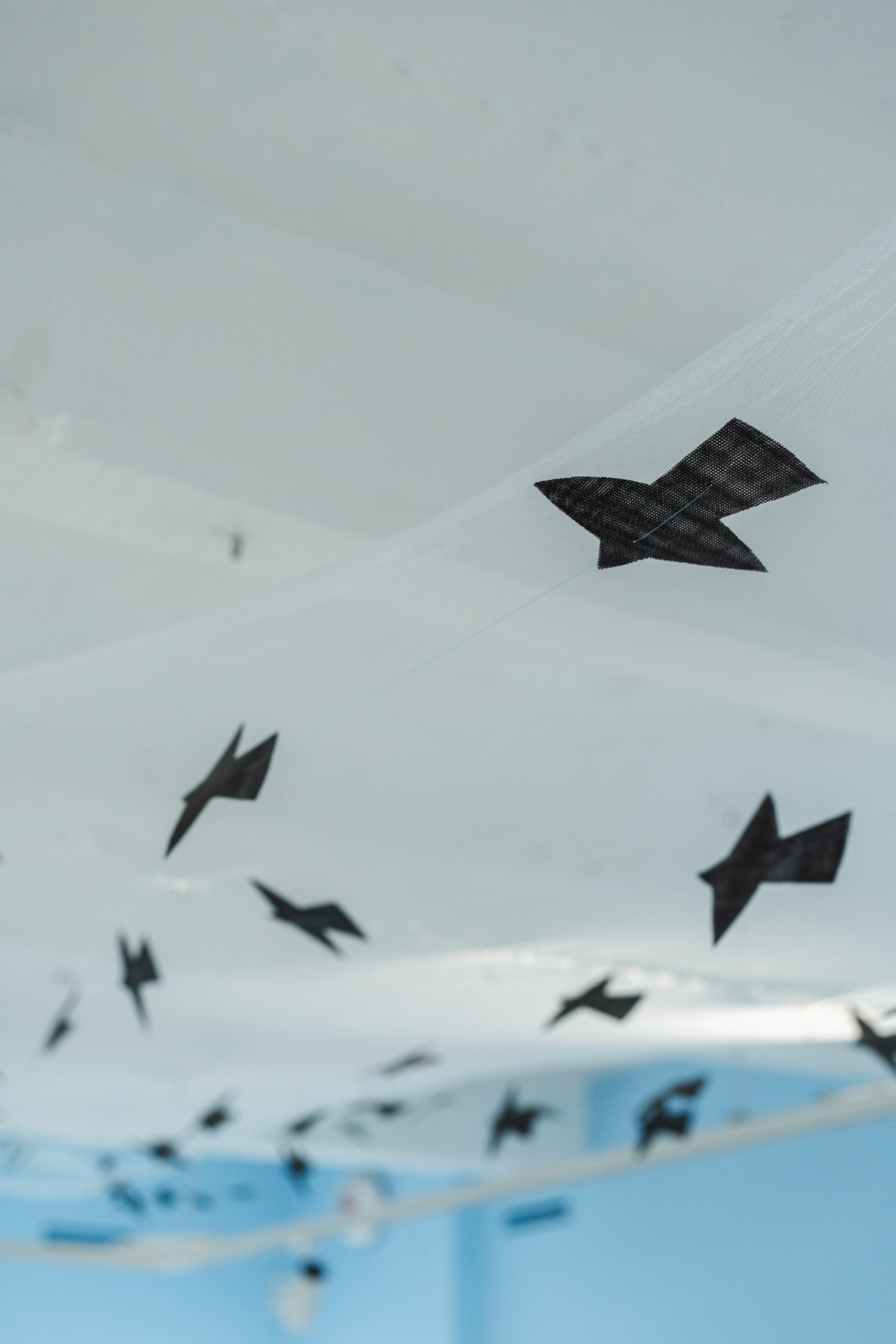
- Artwork Paika installation view
- Year 2025
Image credit: Lana Adams
-
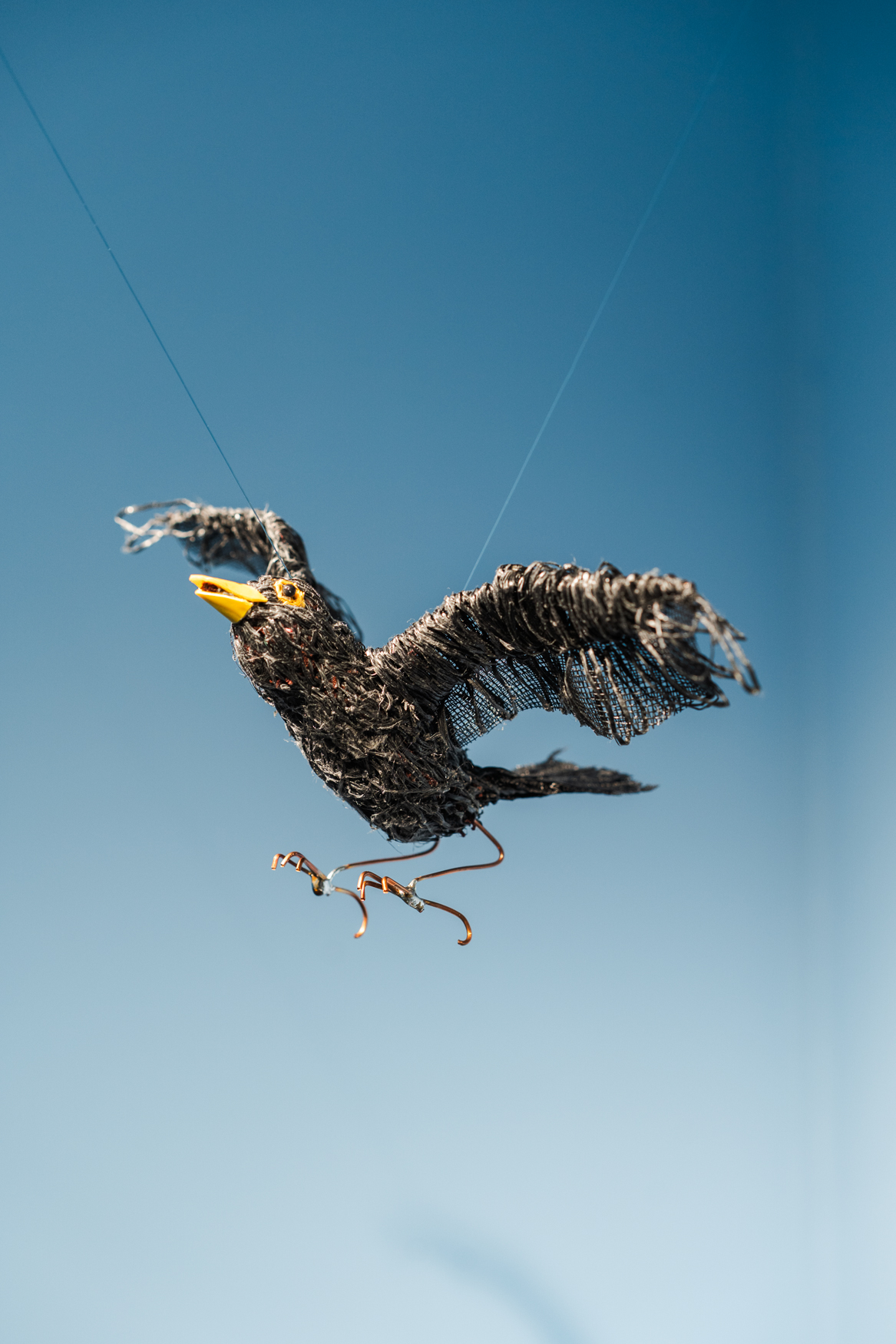
- Artwork PAIKA (Part I)
- Year 2025
- Medium plastic and fiberglass
- Price Price on request
Image credit: Lana Adams
-
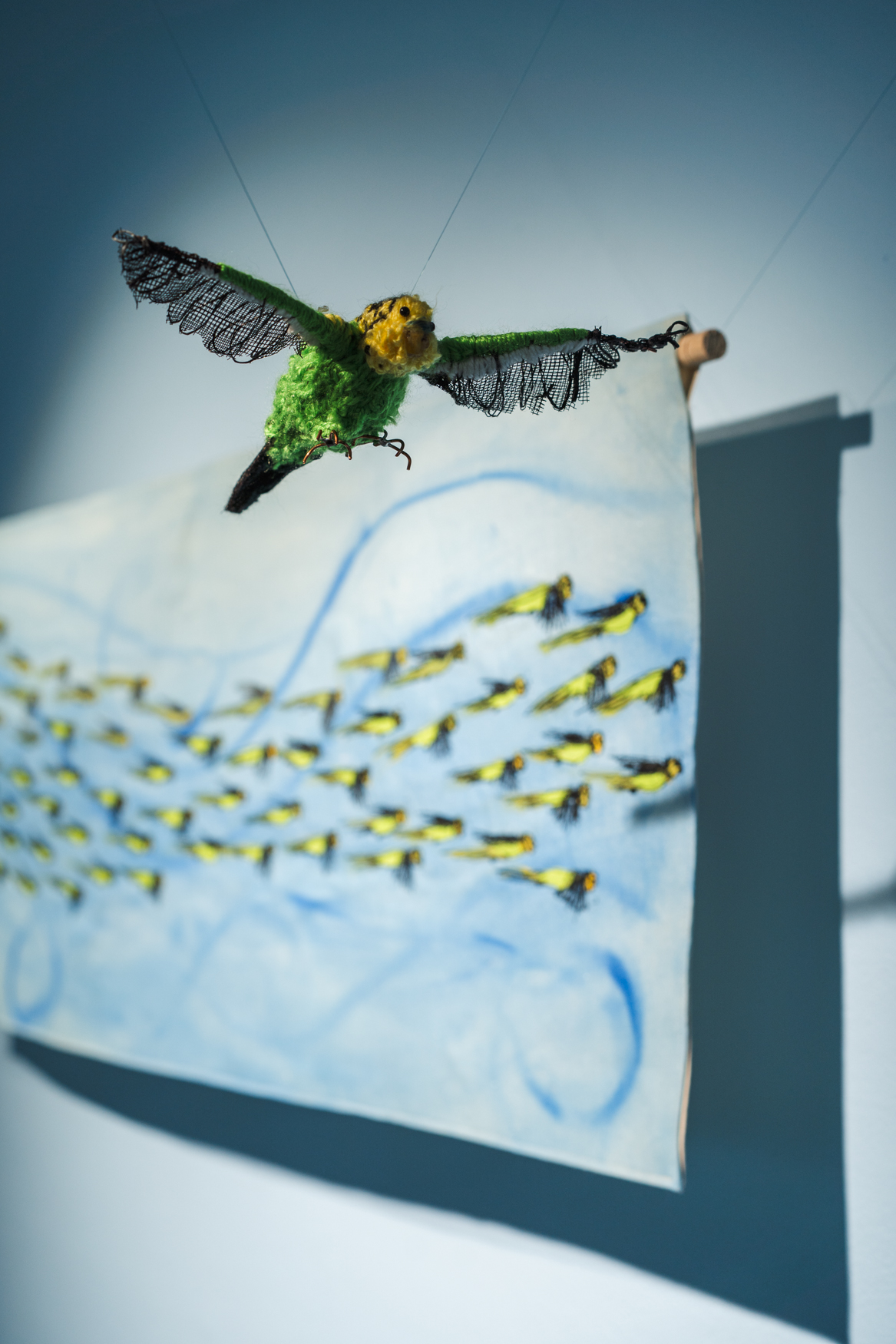
- Artwork ATETHERRE (Mural and Bird)
- Year 2025
- Medium Mural, bird, hand painted calico, copper wire, lino printed, fishing net, cotton applique, rope fibres, freemotion machine embroidery, fly wire
- Size dimensions variable
- Price Prices on request
Image credit: Lana Adams
Atetherre is an Eastern Arrente word. It is pronounced A-de-de-rah. It means “wild budgerigar”.
The inspiration for this piece was from a story that a woman told me. Her country is east of Alice Springs and at she worked as a ranger. Whenever she went home a huge flock of “Atetherre” would fly around her car and welcome her. They would follow the car all the way back home then disappear into the blue sky.
-
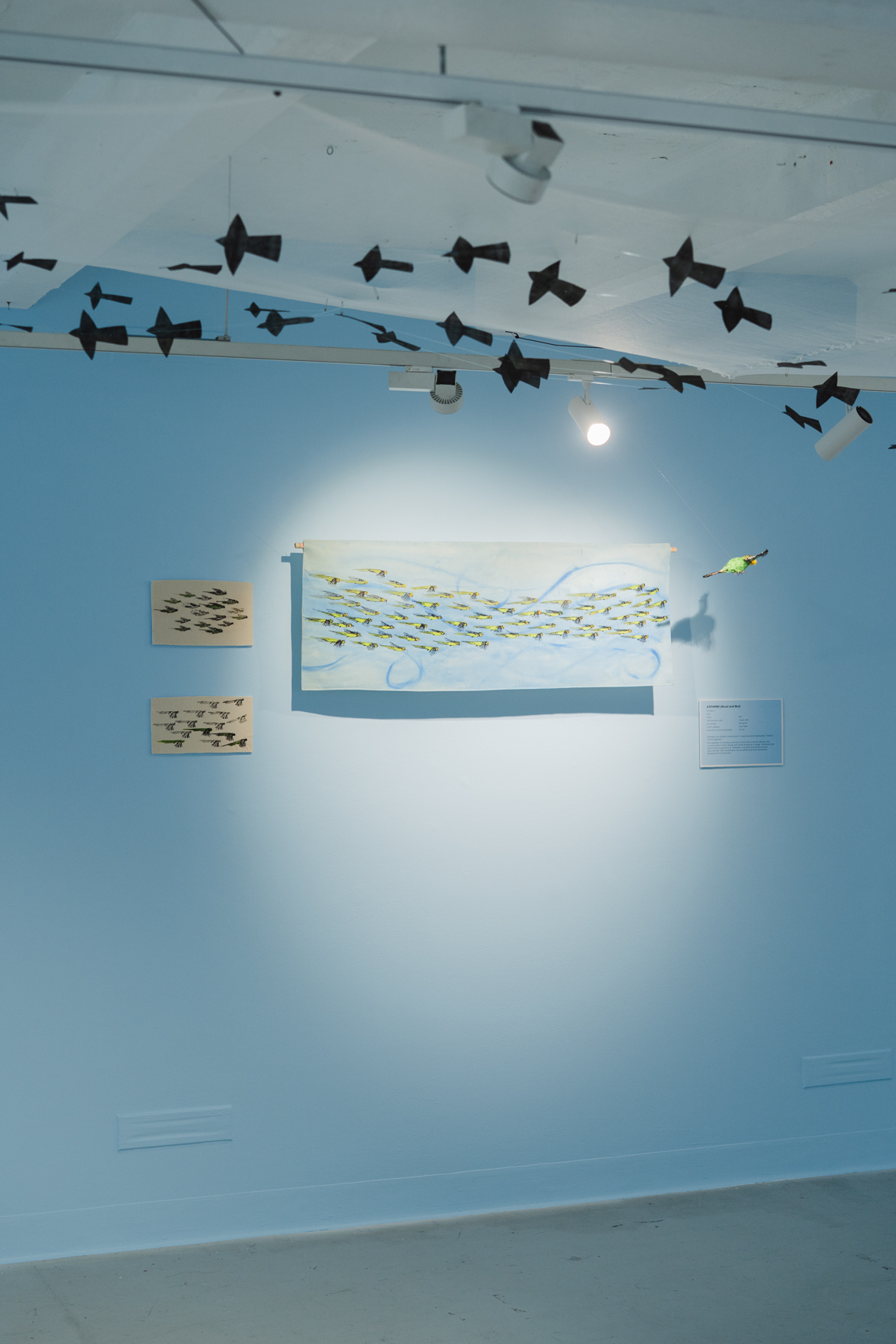
- Artwork ATETHERRE (Mural and Bird)
- Year 2025
- Medium Mural, sculpture, hand painted calico, copper wire, lino printed, fishing net, cotton applique, rope fibres, freemotion machine embroidery, fly wire
- Size dimensions variable
- Price Price on request
Image credit: Lana Adams
Atetherre is an Eastern Arrente word. It is pronounced A-de-de-rah. It means “wild budgerigar”.
The inspiration for this piece was from a story that a woman told me. Her country is east of Alice Springs and at she worked as a ranger. Whenever she went home a huge flock of “Atetherre” would fly around her car and welcome her. They would follow the car all the way back home then disappear into the blue sky.
-
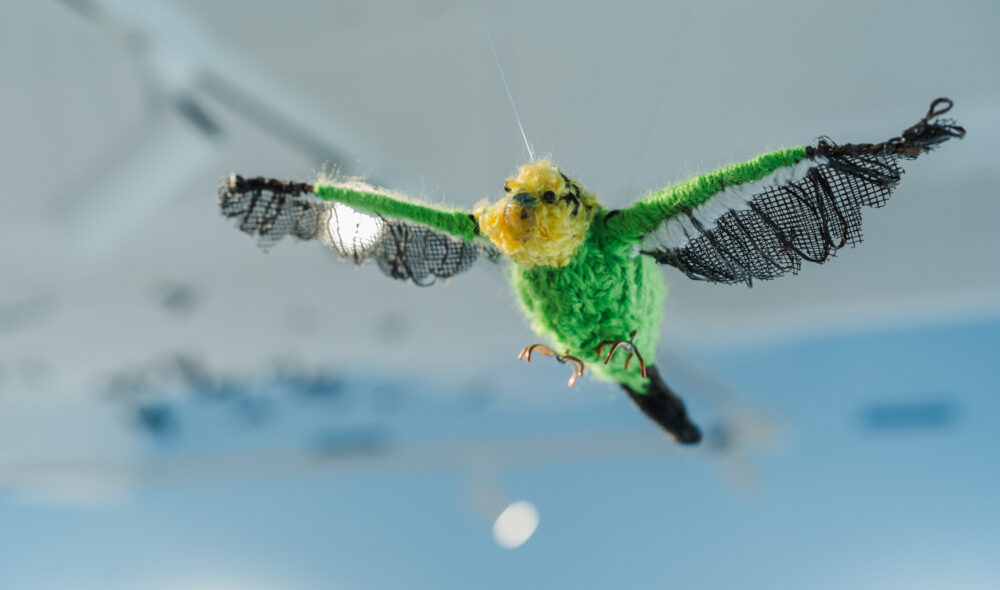
- Artwork ATETHERRE (Bird)
- Year 2025
- Medium Copper wire, fishing net, rope fibres, fly wire
- Price Price on request
Image credit: Lana Adams
Atetherre is an Eastern Arrente word. It is pronounced A-de-de-rah. It means “wild budgerigar”.
The inspiration for this piece was from a story that a woman told me. Her country is east of Alice Springs and she worked as a ranger. Whenever she went home a huge flock of “Atetherre” would fly around her car and welcome her. They would follow the car all the way back home then disappear into the blue sky.
-
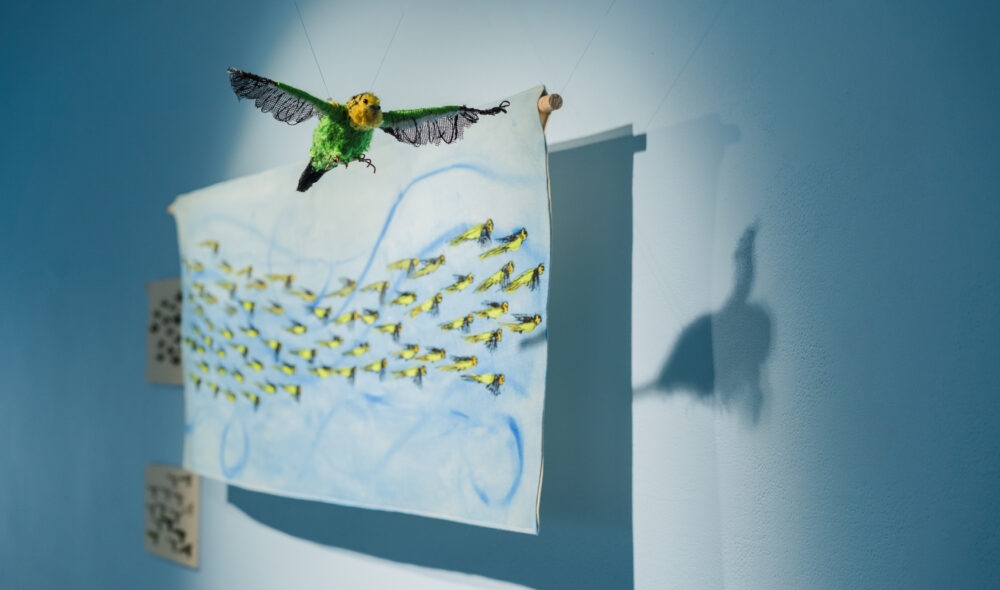
- Artwork ATETHERRE (Mural and Bird)
- Year 2025
- Medium Mural, bird, hand painted calico, copper wire, lino printed, fishing net, cotton applique, rope fibres, freemotion machine embroidery, fly wire
- Price Price on request
-
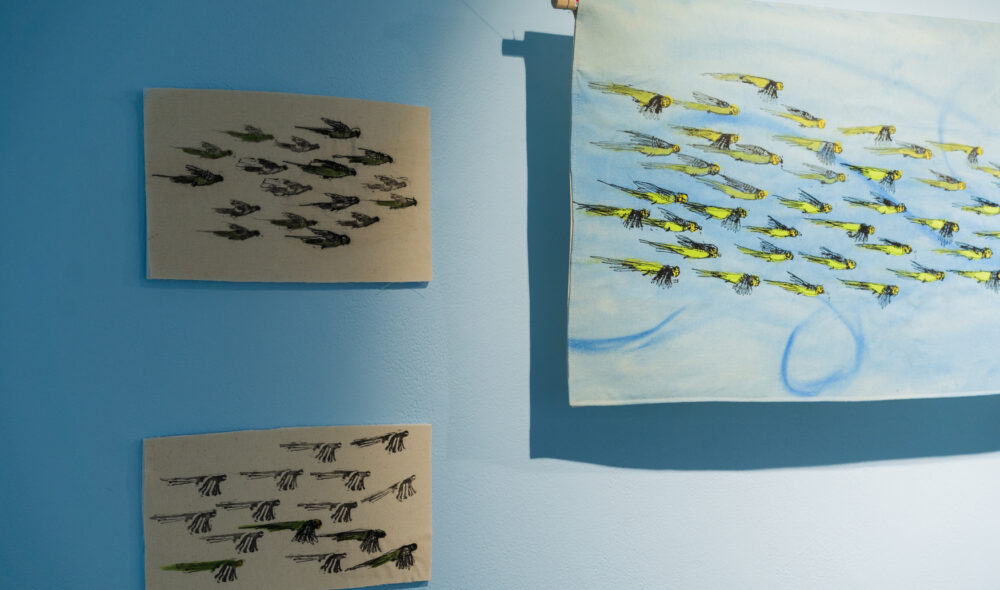
- Artwork ATETHERRE (Mural)
- Year 2025
- Medium Mural, bird, hand painted calico, copper wire, lino printed, fishing net, cotton applique, rope fibres, freemotion machine embroidery, fly wire
Image credit: Lana Adams
-
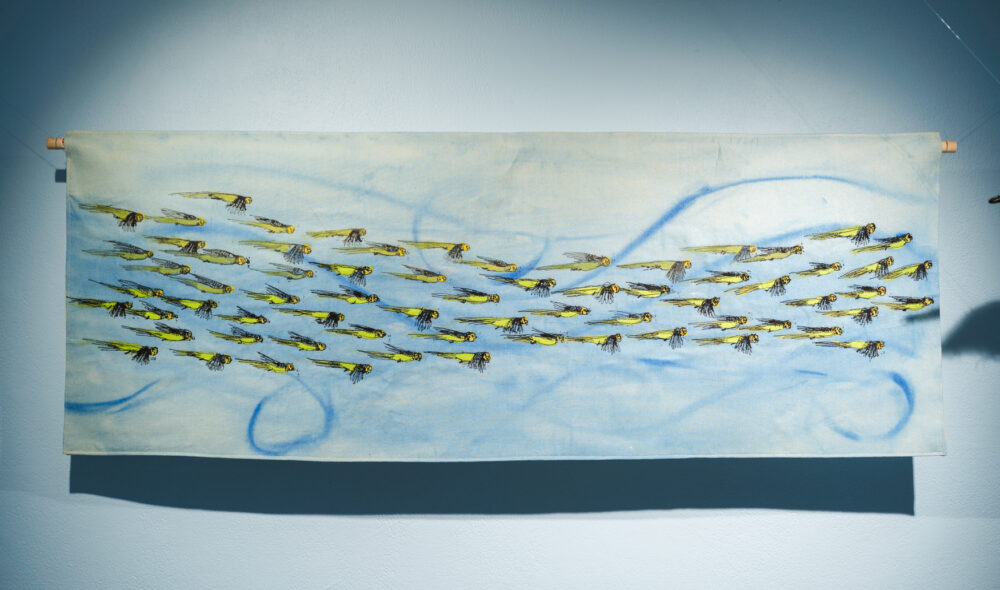
- Artwork ATETHERRE (Mural)
- Year 2025
- Medium Mural, bird, hand painted calico, copper wire, lino printed, fishing net, cotton applique, rope fibres, freemotion machine embroidery, fly wire
-
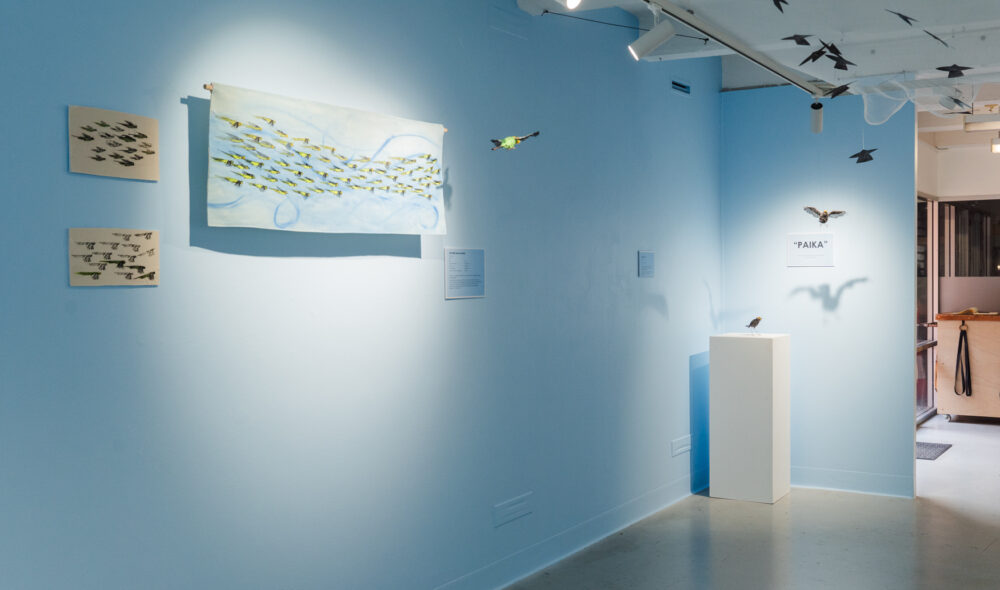
- Artwork Paika installation view
- Year 2025
Image credit: Lana Adams
-
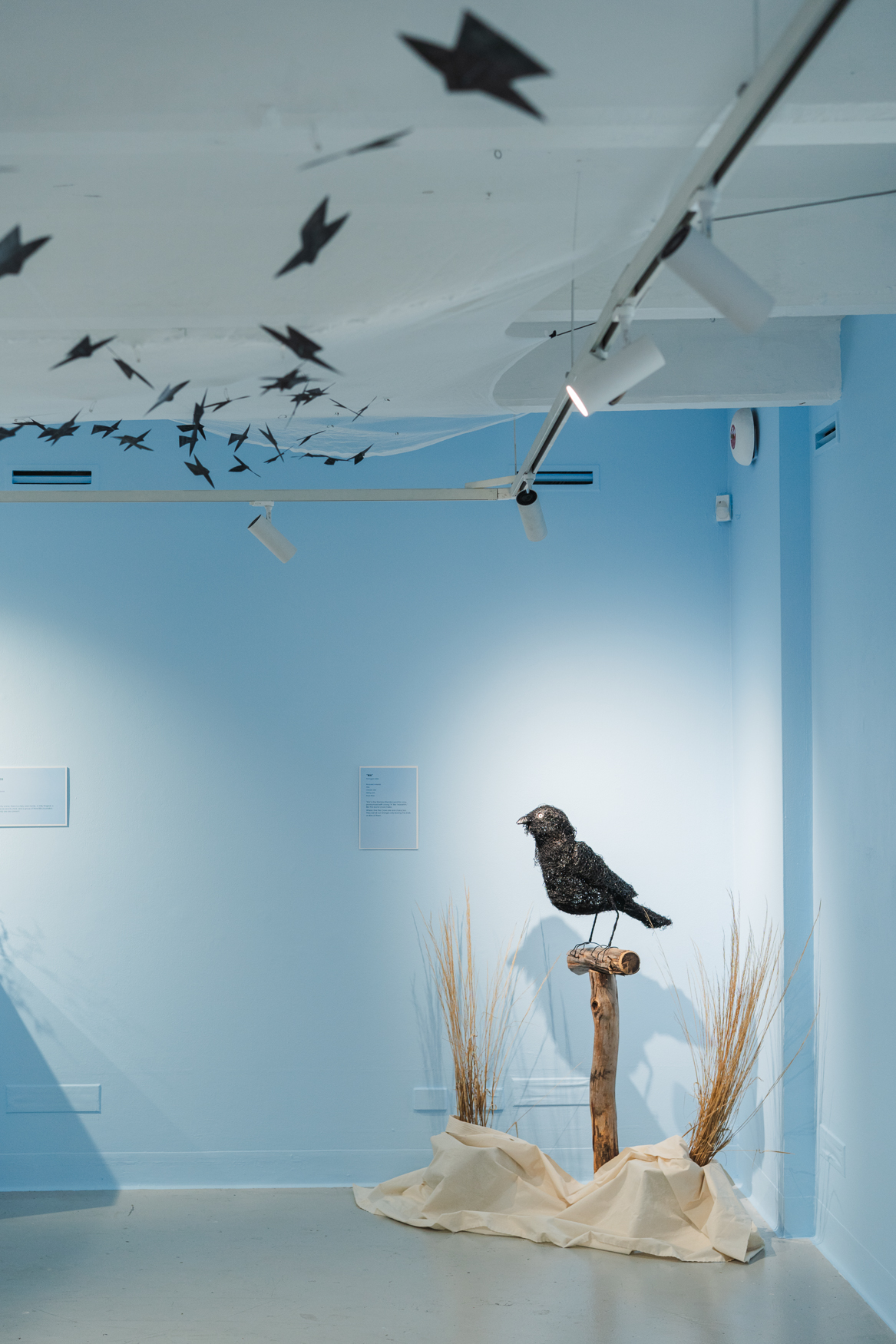
- Artwork Paika installation view
- Year 2025
Image credit: Lana Adams
-

- Artwork WA
- Year 2025
- Medium Recycled materials, wire, chicken wire, fishing nets, rope fibres
- Price Price on request
Image credit: Lana Adams
“Wa” is the Wemba Wemba word for crow, pronounced with a long “A” like “waaahhh,” like the sound crows make.
Where I live the Crows are real characters. They eat all our Oranges only leaving the shells or skins of them.
-

- Artwork WA
- Year 2025
- Medium Recycled materials, wire, chicken wire, fishing nets, rope fibres
- Price Price on request
Image credit: Lana Adams
“Wa” is the Wemba Wemba word for crow, pronounced with a long “A” like “waaahhh,” like the sound crows make.
Where I live the Crows are real characters. They eat all our Oranges only leaving the shells or skins of them.
-
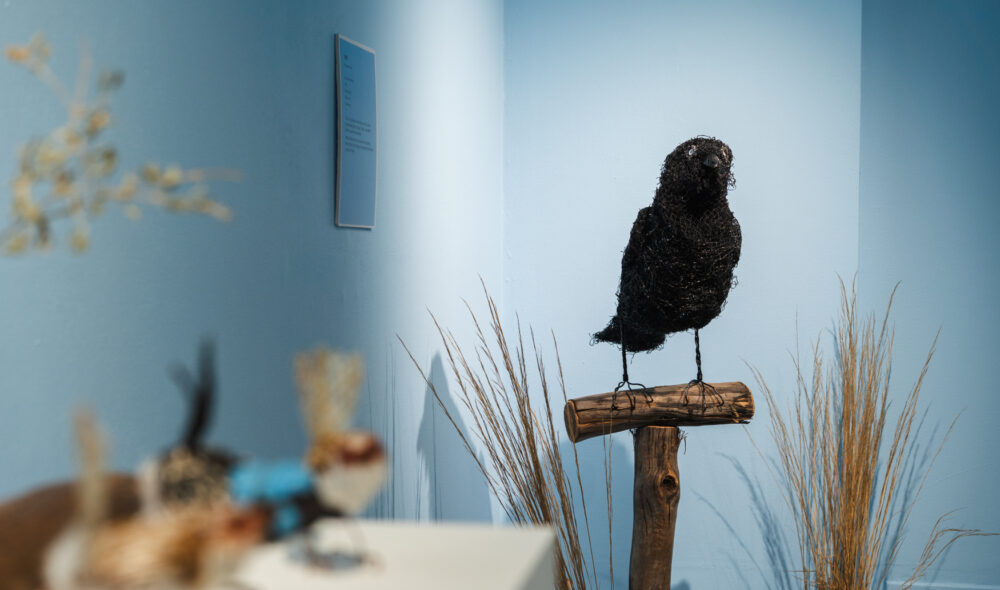
- Artwork WA
- Year 2025
- Medium Recycled materials, wire, chicken wire, fishing nets, rope fibres
- Price Price on request
Image credit: Lana Adams
“Wa” is the Wemba Wemba word for crow, pronounced with a long “A” like “waaahhh,” like the sound crows make.
Where I live the Crows are real characters. They eat all our Oranges only leaving the shells or skins of them.
-
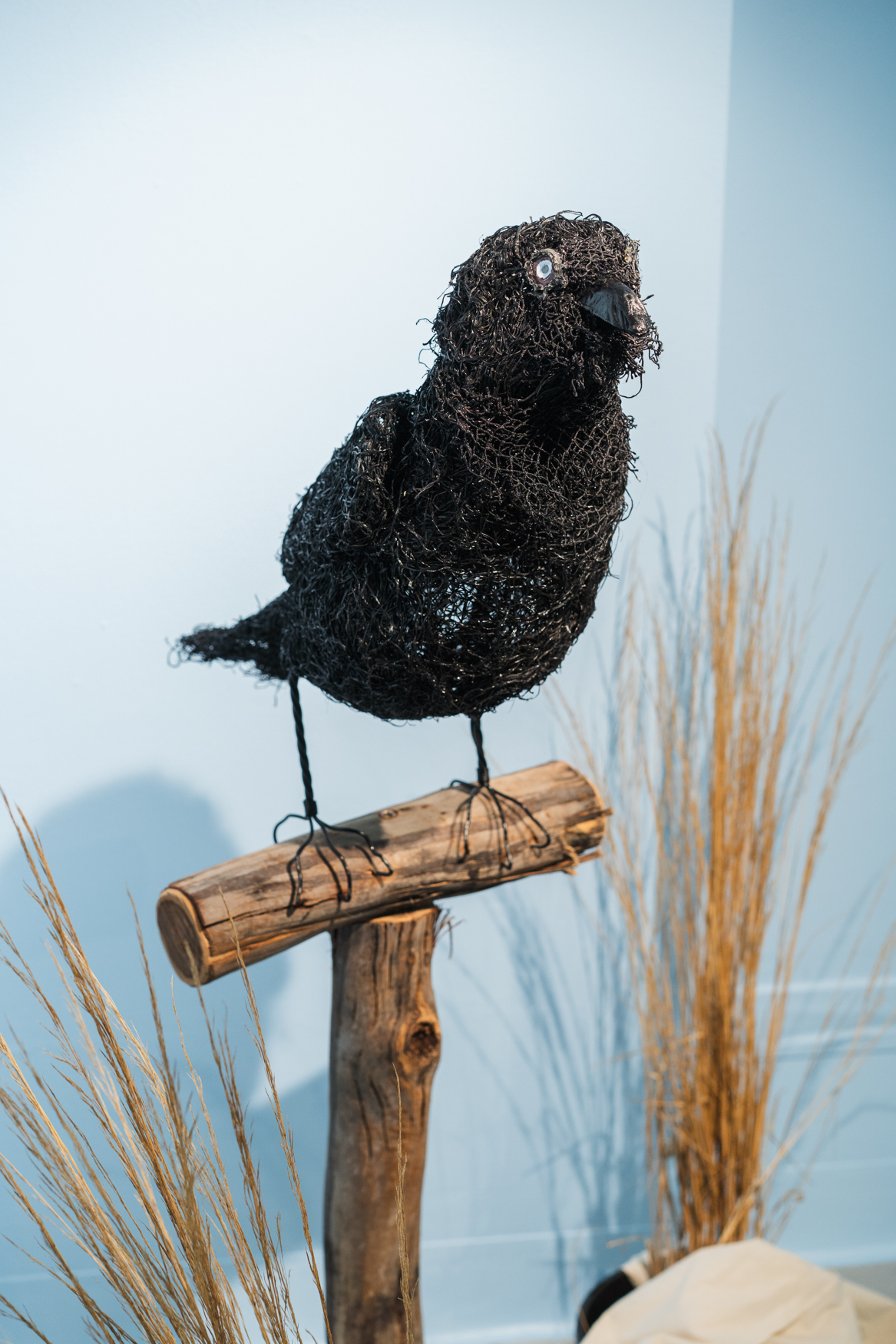
- Artwork WA
- Year 2025
- Medium Recycled materials, wire, chicken wire, fishing nets, rope fibres
- Price Price on request
Image credit: Lana Adams
“Wa” is the Wemba Wemba word for crow, pronounced with a long “A” like “waaahhh,” like the sound crows make.
Where I live the Crows are real characters. They eat all our Oranges only leaving the shells or skins of them.
-
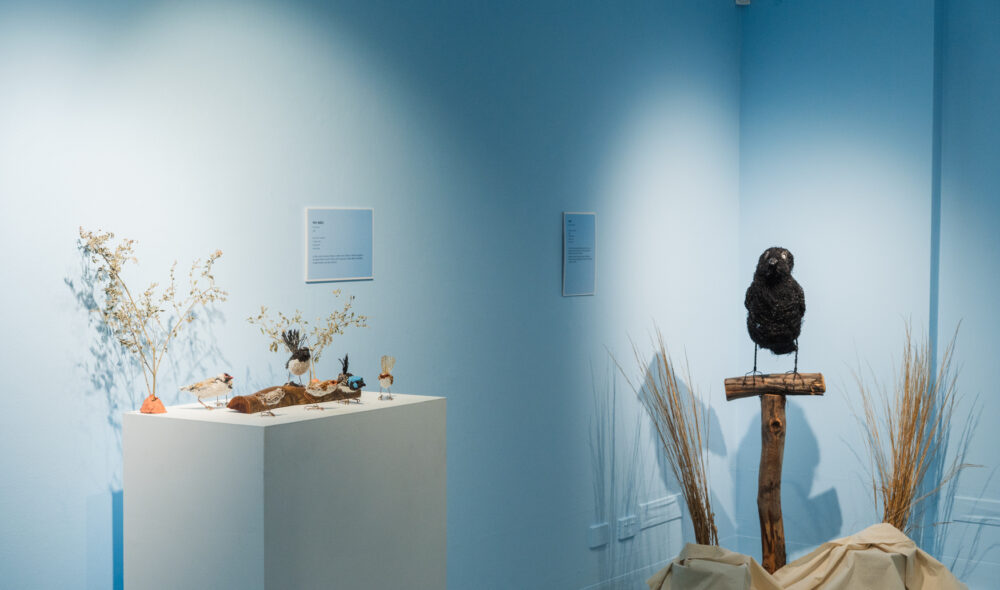
- Artwork Paika installation view
- Year 2025
Image credit: Lana Adams
-
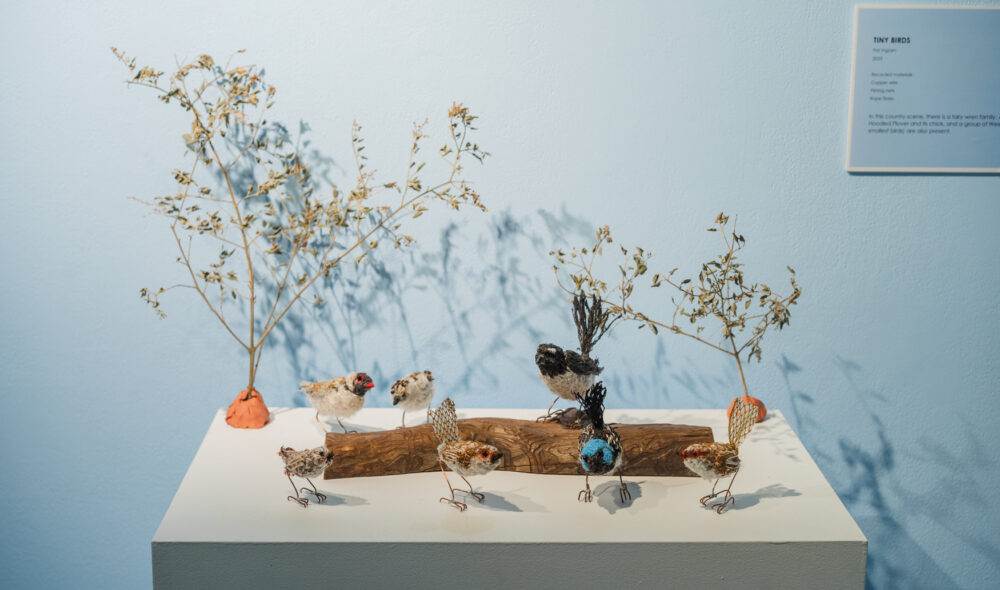
- Artwork TINY BIRDS
- Year 2025
- Medium Recycled materials, copper wire, fishing nets, rope fibres
- Price Prices on request
Image Credit: Lana Adams
In this country scene, there is a fairy wren family. A Willy Wagtail, a Hooded Plover and its chick, and a group of Wee-Bills (Australia’s smallest birds) are also present.
-
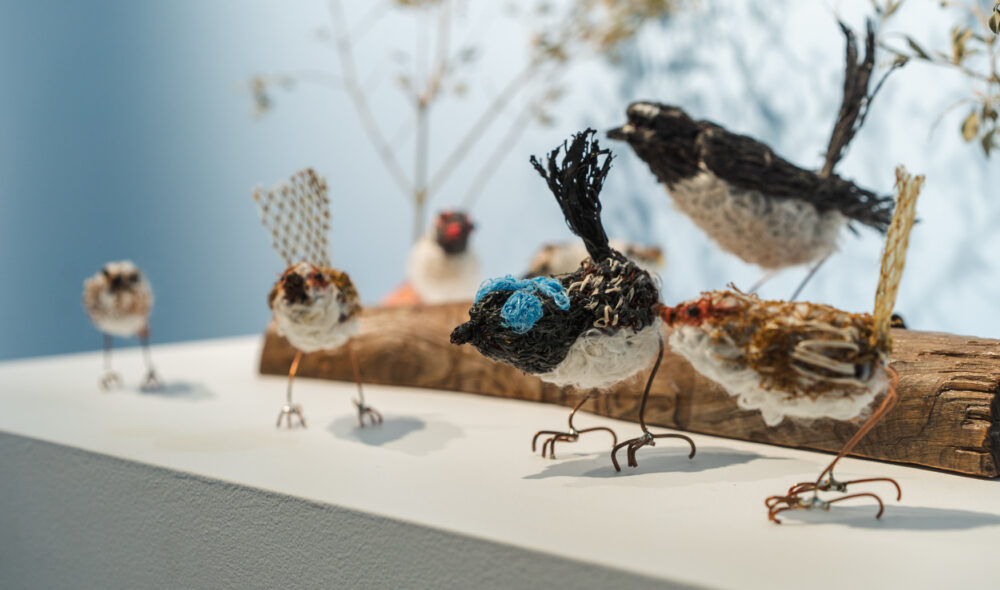
- Artwork TINY BIRDS
- Year 2025
- Medium Recycled materials, copper wire, fishing nets, rope fibres
- Price Prices on request
Image credit: Lana Adams
In this country scene, there is a fairy wren family. A Willy Wagtail, a Hooded Plover and its chick, and a group of Wee-Bills (Australia’s smallest birds) are also present.
-
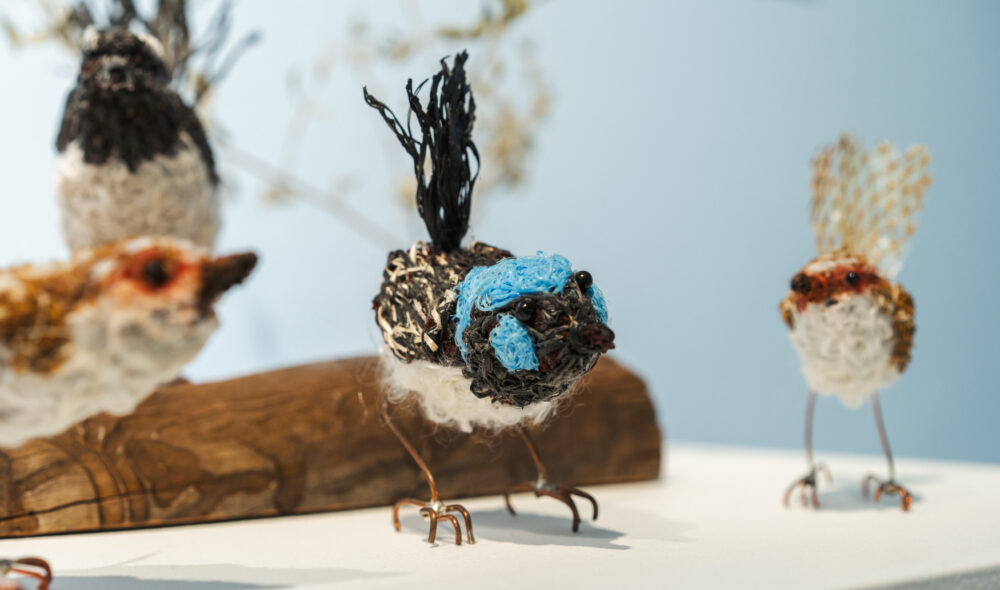
- Artwork TINY BIRDS
- Year 2025
- Medium Recycled materials, copper wire, fishing nets, rope fibres
- Price Prices on request
Image credit: Lana Adams
Fairy Wren
-
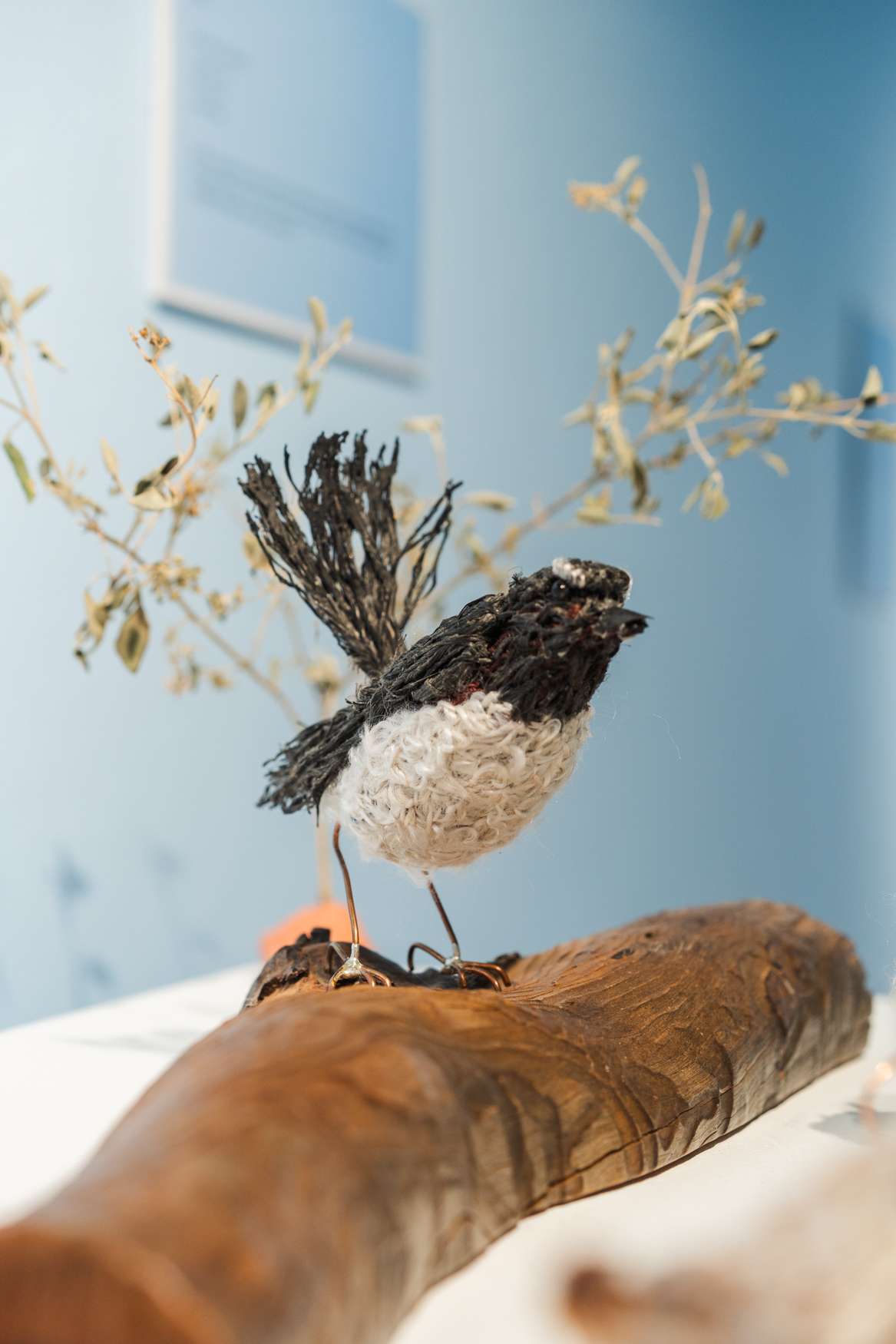
- Artwork TINY BIRDS
- Year 2025
- Medium Recycled materials, copper wire, fishing nets, rope fibres
- Price Prices on request
Image credit: Lana Adams
Willy Wagtail
-
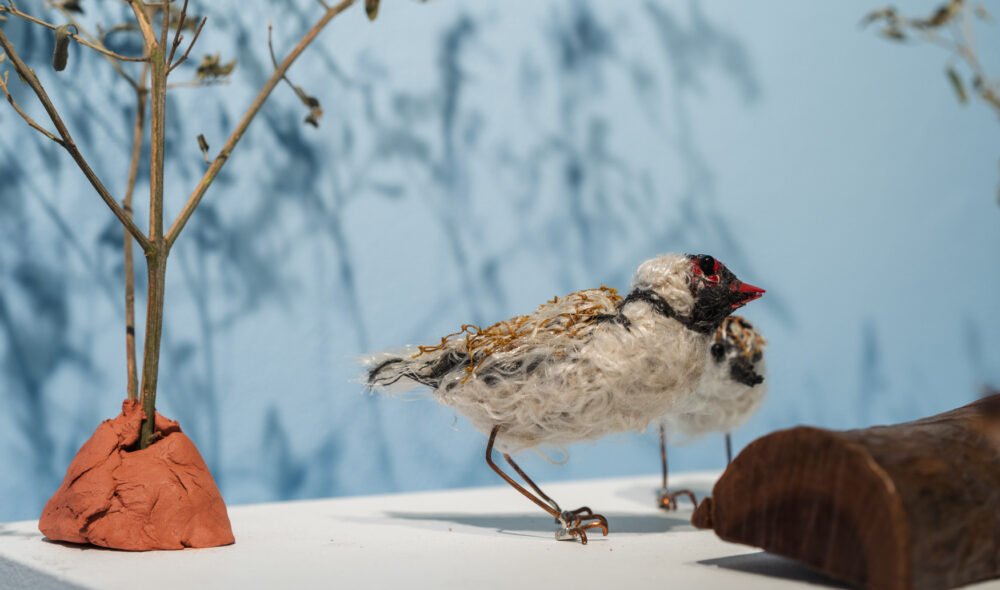
- Artwork TINY BIRDS
- Year 2025
- Medium Recycled materials, copper wire, fishing nets, rope fibres
- Price Prices on request
Image credit: Lana Adams
Hooded Plover and its chick
-
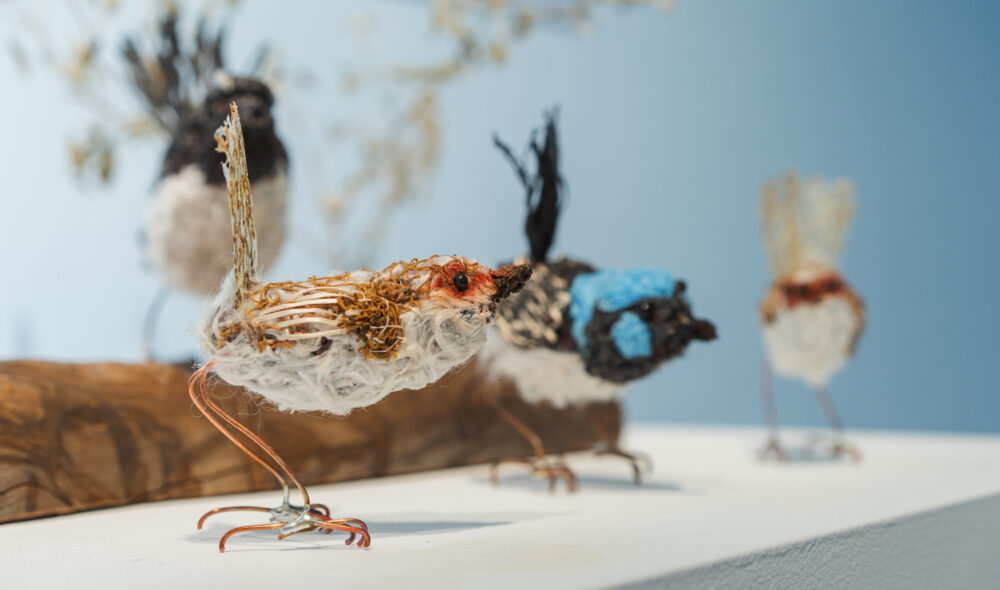
- Artwork TINY BIRDS
- Year 2025
- Medium Recycled materials, copper wire, fishing nets, rope fibres
- Price Prices on request
Image credit: Lana Adams
In this country scene, there is a fairy wren family. A Willy Wagtail, a Hooded Plover and its chick, and a group of Wee-Bills (Australia’s smallest birds) are also present.
-

- Artwork TINY BIRDS
- Year 2025
- Medium Recycled materials, copper wire, fishing nets, rope fibres
- Price Price on request
Fairy wren family
-
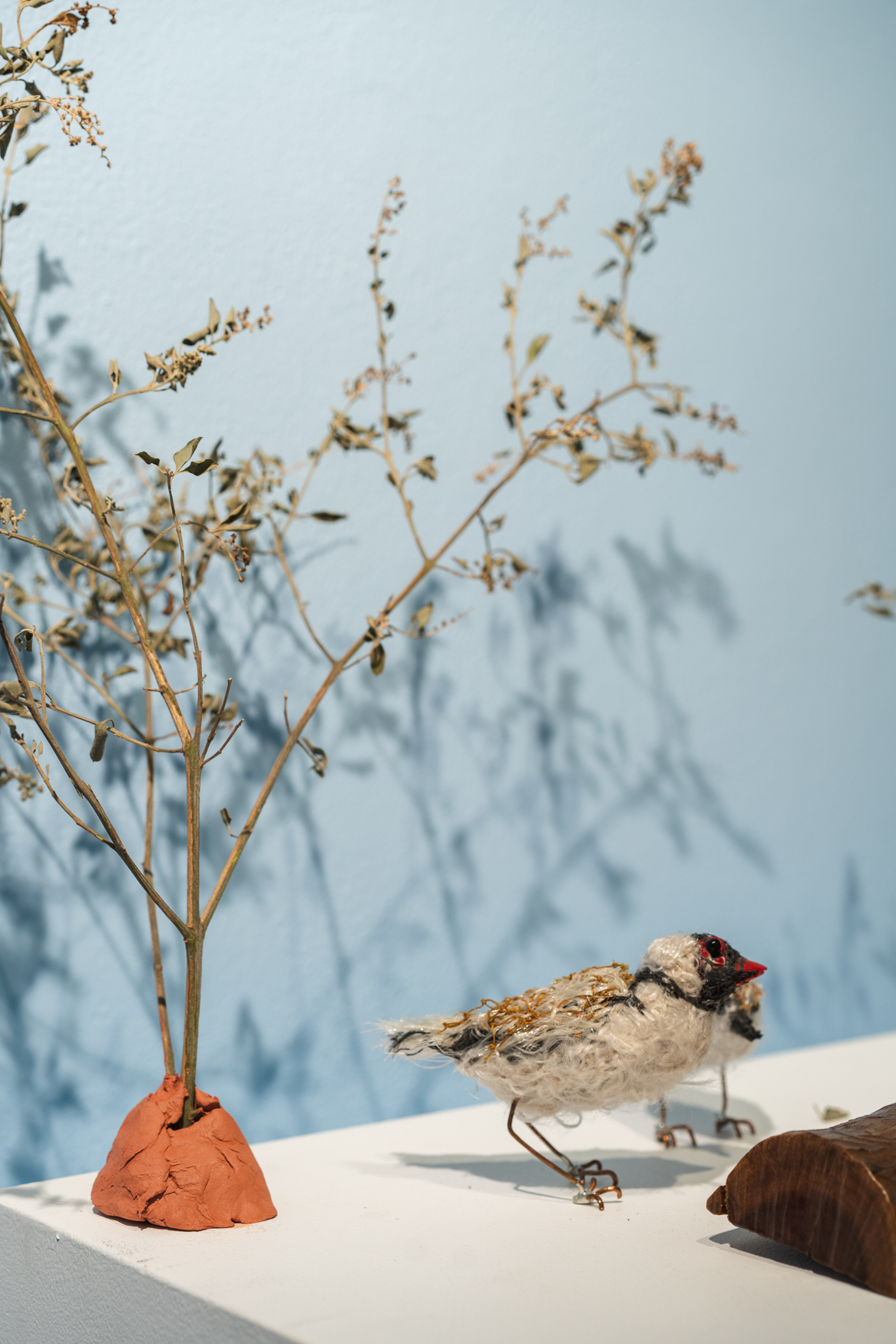
- Artwork TINY BIRDS
- Year 2025
- Medium Recycled materials, copper wire, fishing nets, rope fibres
- Price Price on request
A Hooded Plover and its chick
-
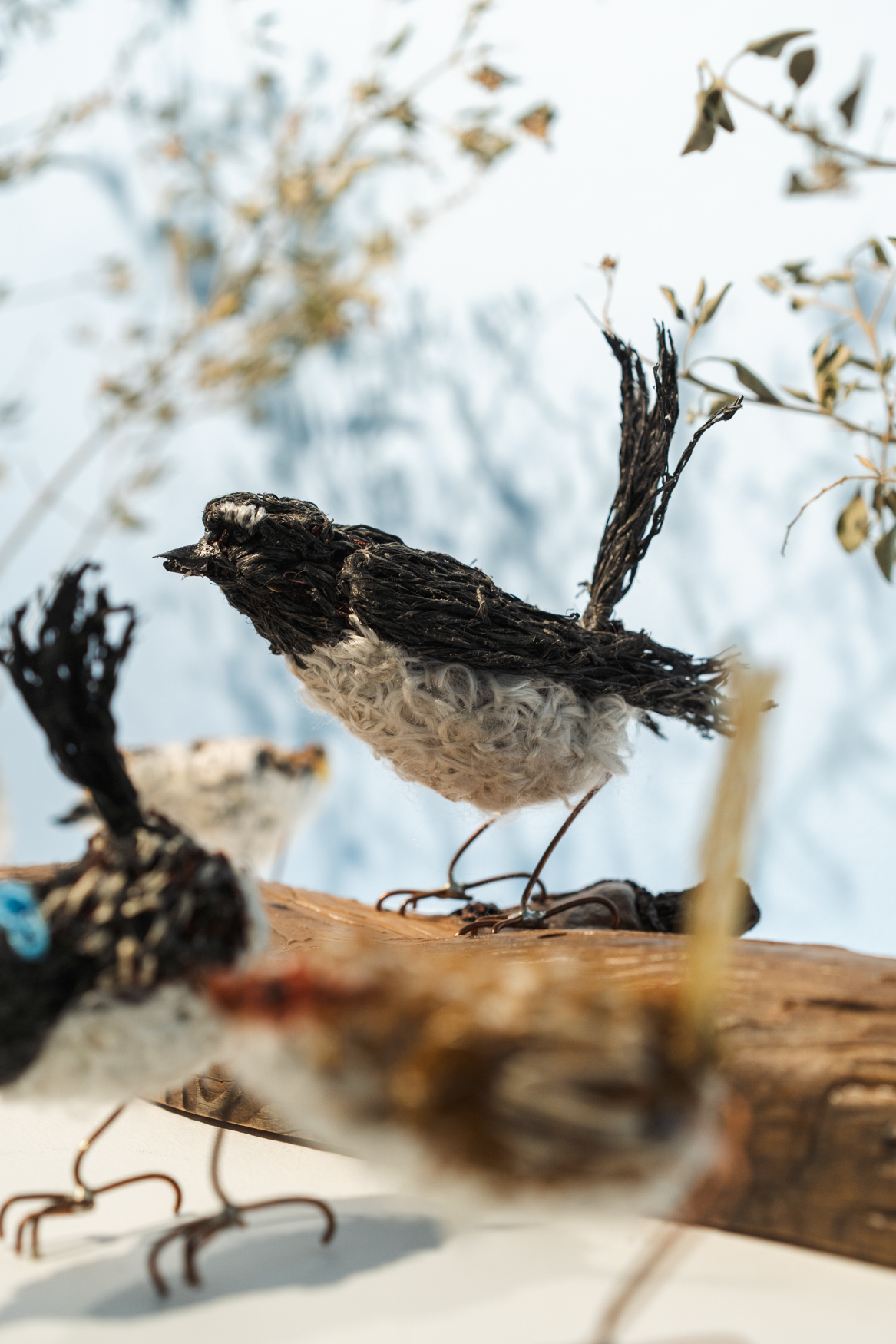
- Artwork TINY BIRDS
- Year 2025
- Medium Recycled materials, copper wire, fishing nets, rope fibres
- Price Price on request
Image credit: Lana Adams
Willy Wagtail
-
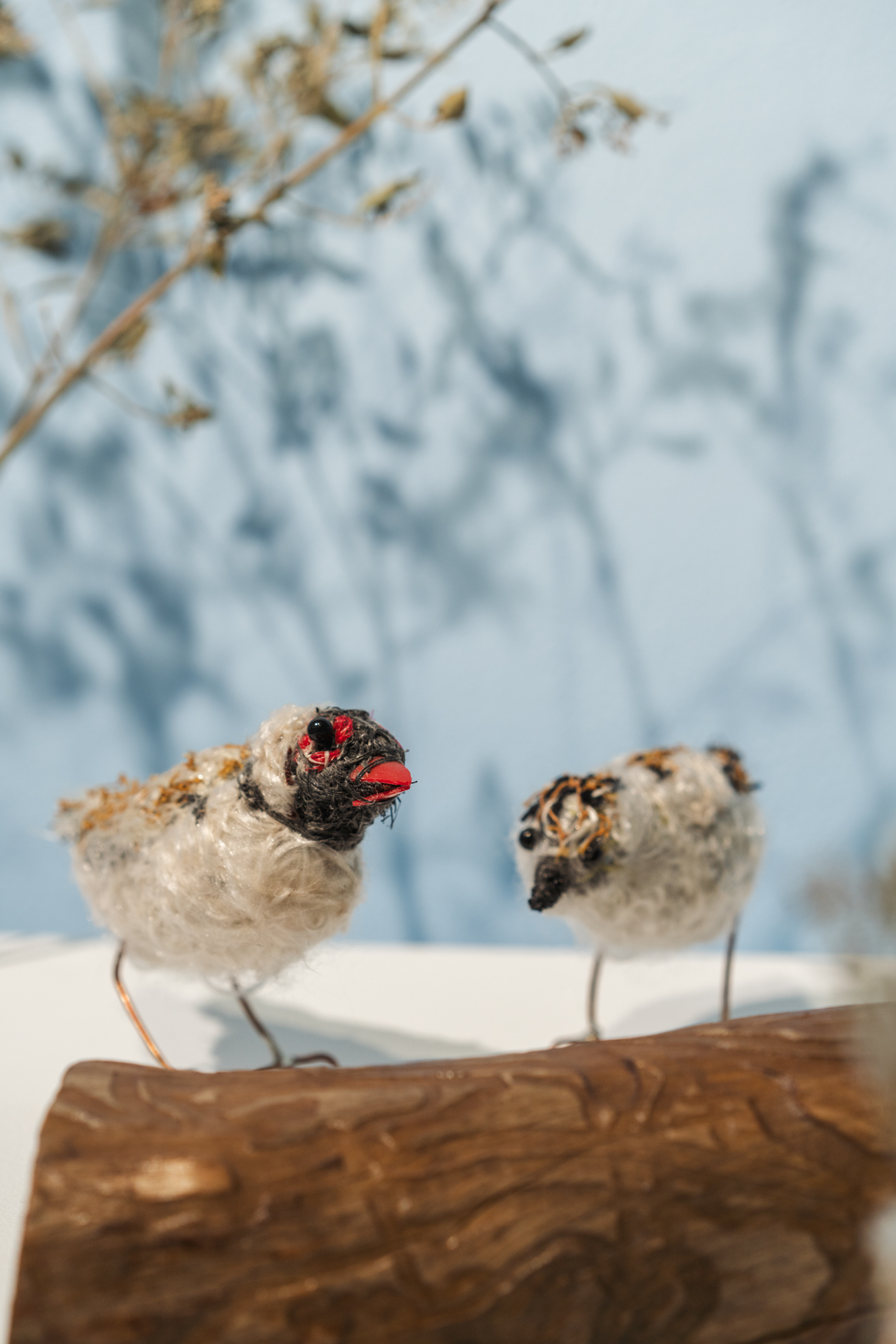
- Artwork TINY BIRDS
- Year 2025
- Medium Recycled materials, copper wire, fishing nets, rope fibres
- Price Price on request
Image credit: Lana Adams
Hooded Plover and its chick
-
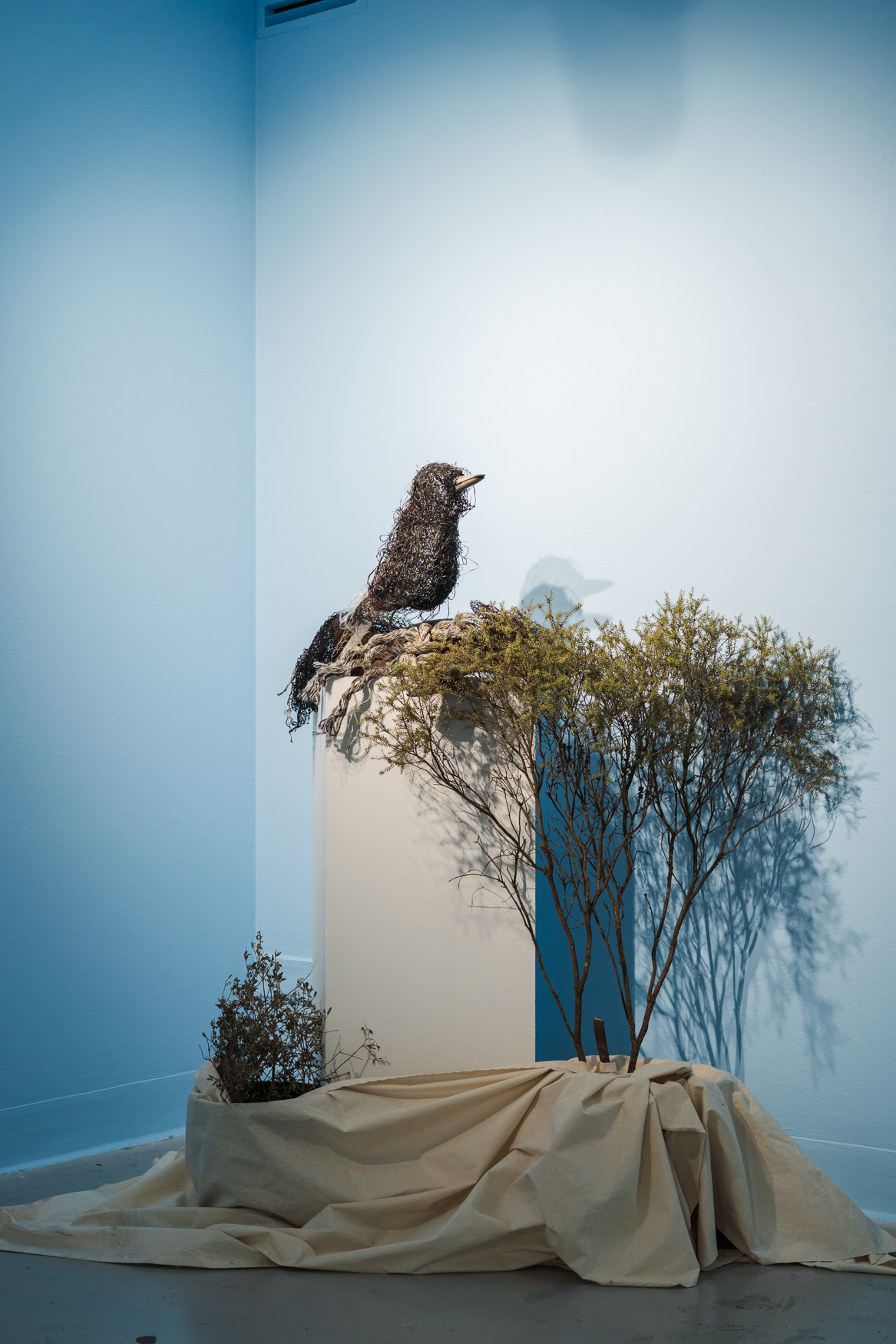
- Artwork KURRAKA
- Year 2025
- Medium Recycled materials, wire, chicken wire, fishing nets, rope fibres
- Price Price on request
Image credit: Lana Adams
“Kurraka” is the Kaurna word for Magpie, pronounced “Gurra-ga”. People love telling me stories about these birds.
This Magpie is partially made. You can see how he is made and what materials I use.
-
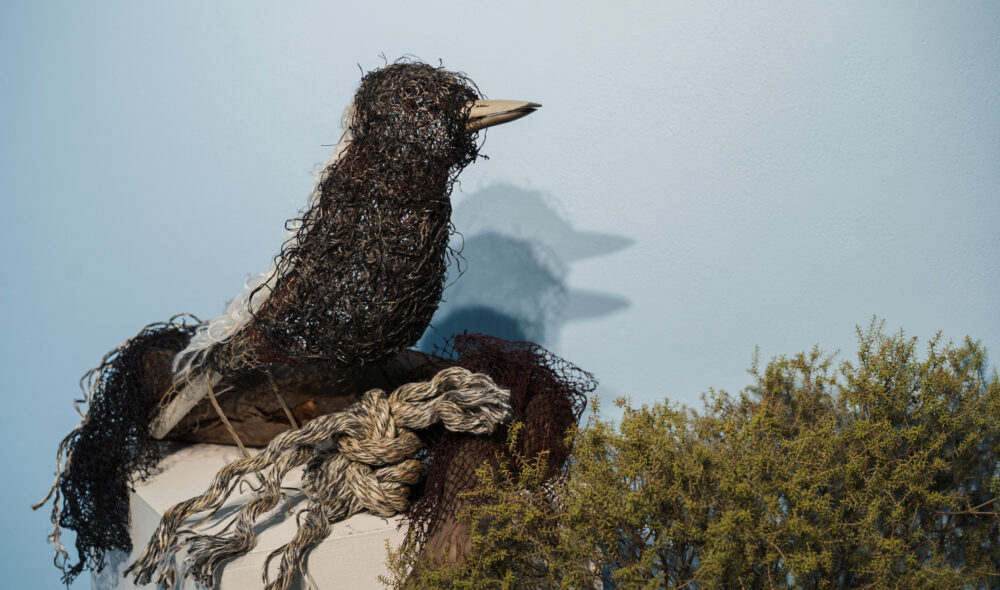
- Artwork KURRAKA
- Year 2025
- Medium Recycled materials, wire, chicken wire, fishing nets, rope fibres
- Price Price on request
Image credit: Lana Adams
“Kurraka” is the Kaurna word for Magpie, pronounced “Gurra-ga”. People love telling me stories about these birds.
This Magpie is partially made. You can see how he is made and what materials I use.
-
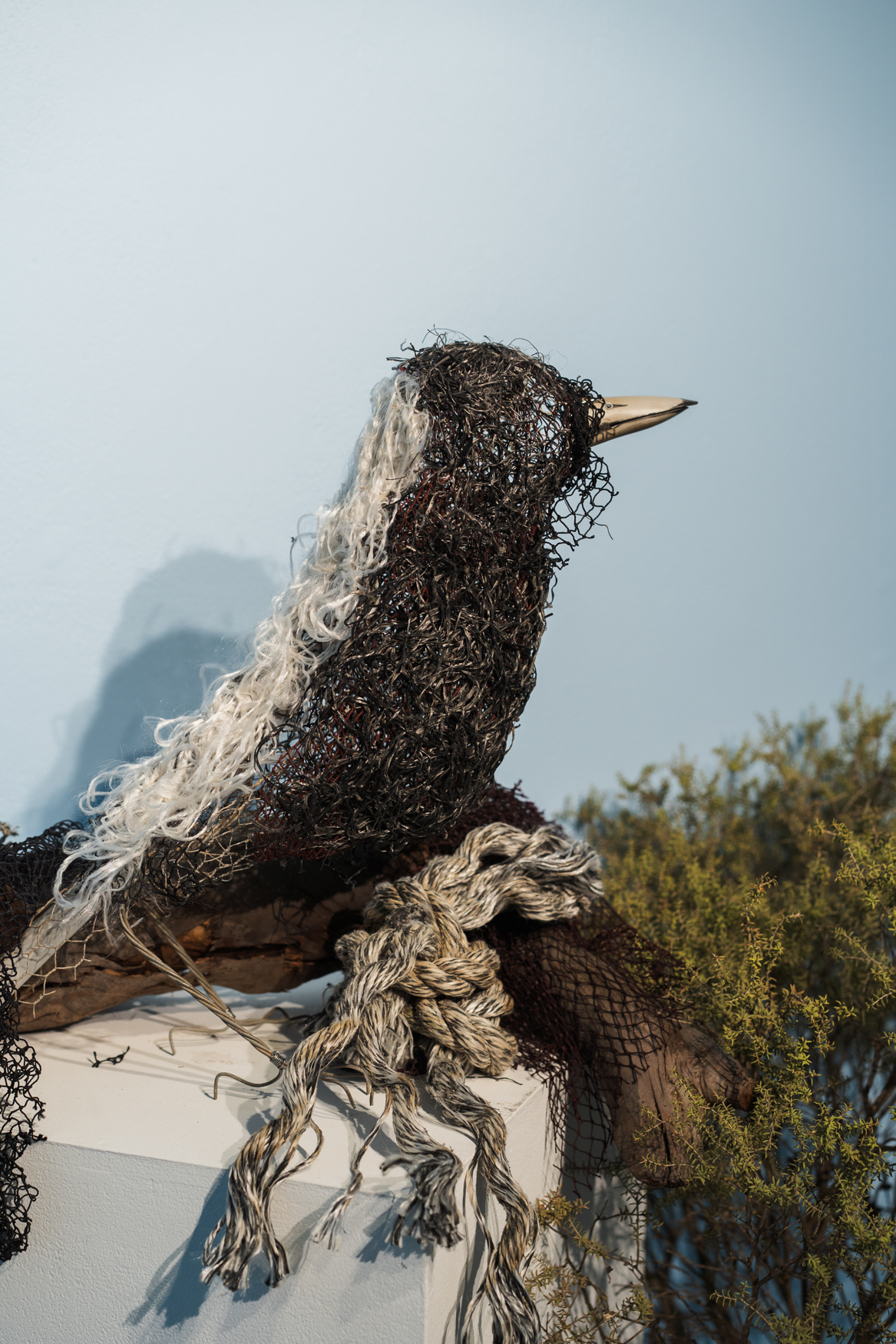
- Artwork KURRAKA
- Year 2025
- Medium Recycled materials, wire, chicken wire, fishing nets, rope fibres
- Price Price on request
Image credit: Lana Adams
“Kurraka” is the Kaurna word for Magpie, pronounced “Gurra-ga”. People love telling me stories about these birds.
This Magpie is partially made. You can see how he is made and what materials I use.
-
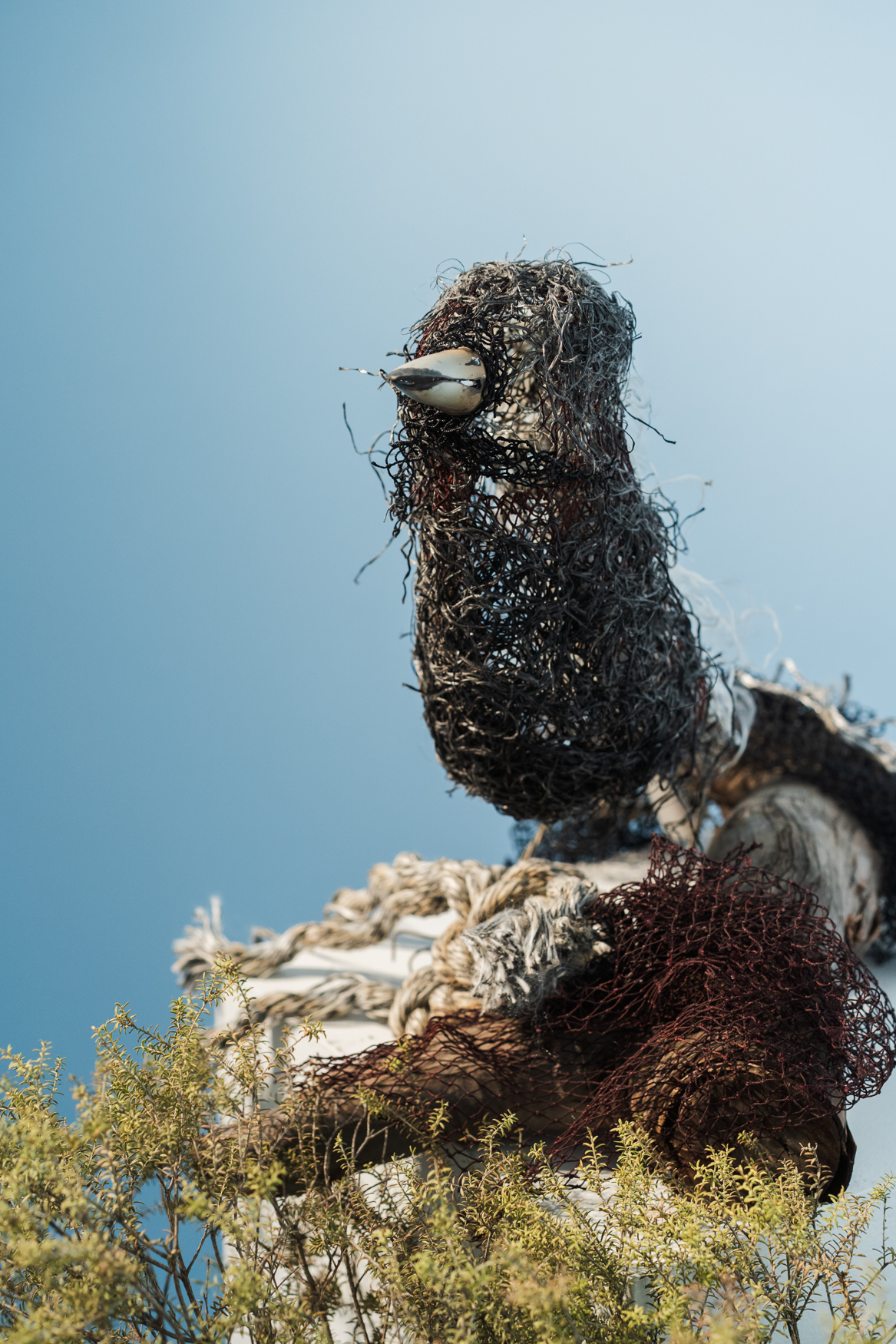
- Artwork KURRAKA
- Year 2025
- Price Price on request
Image credit: Lana Adams
“Kurraka” is the Kaurna word for Magpie, pronounced “Gurra-ga”. People love telling me stories about these birds.
This Magpie is partially made. You can see how he is made and what materials I use.
-
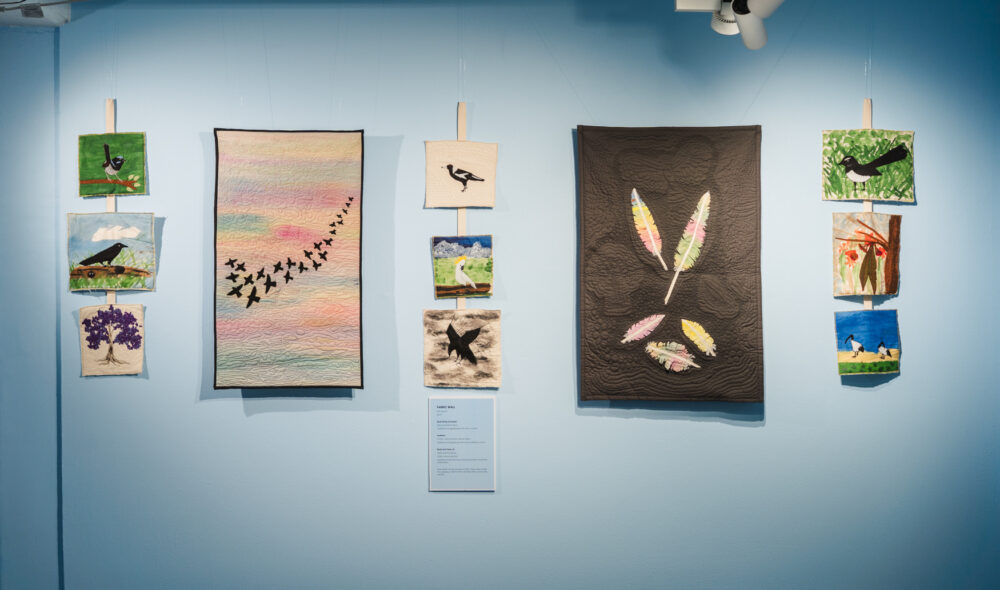
- Artwork FABRIC WALL
- Year 2019
- Price Prices on request
Image credit: Lana Adams
Five textile art pieces about birds. They were made for a display in 2019 at the old Para Hills Community centre.
-
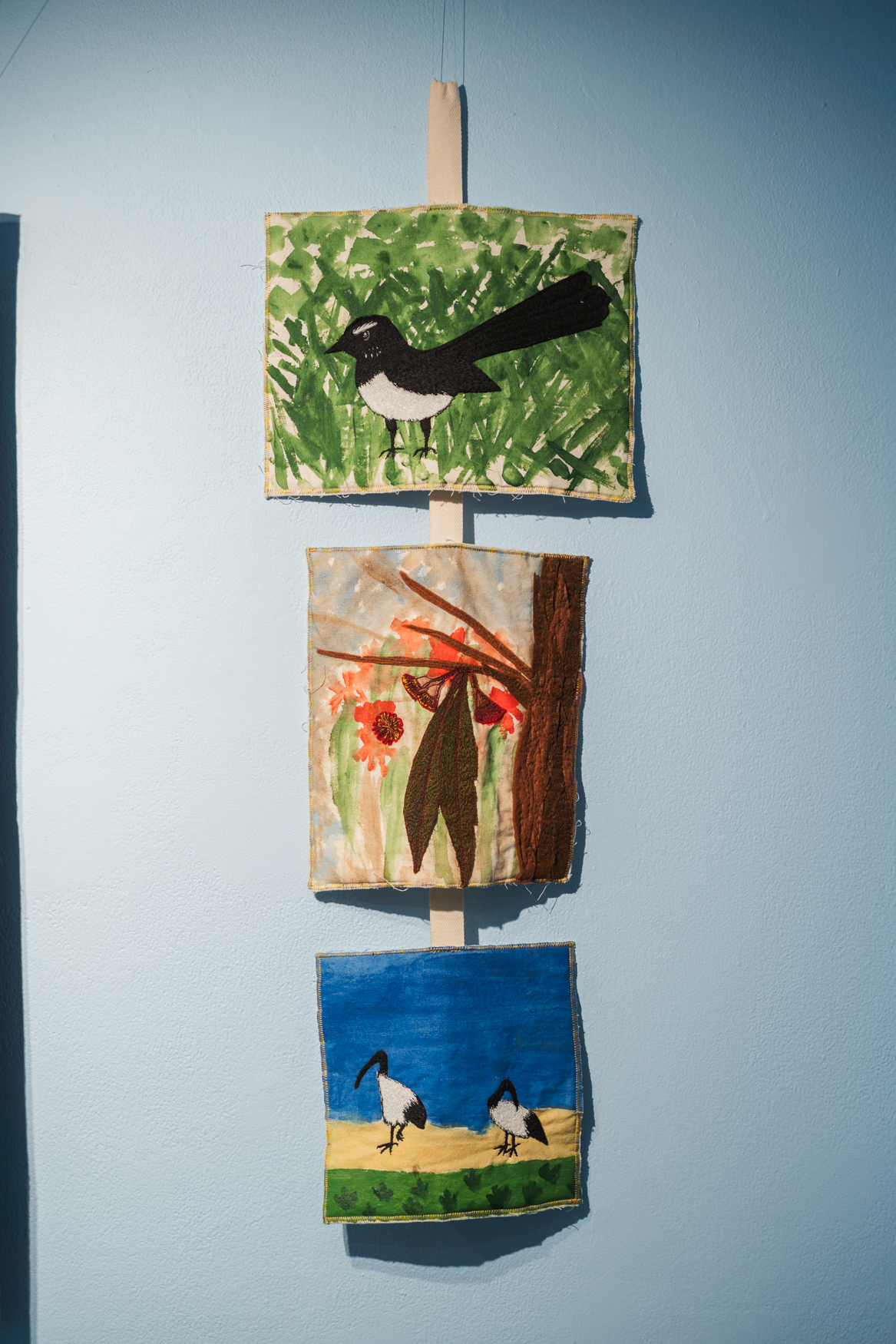
- Artwork Birds and Trees
- Year 2019
- Medium Triple wall hangings, calico hand painted, appliqued and stitched using freemotion machine embroidery
- Price Price on request
Image credit: Lana Adams
-
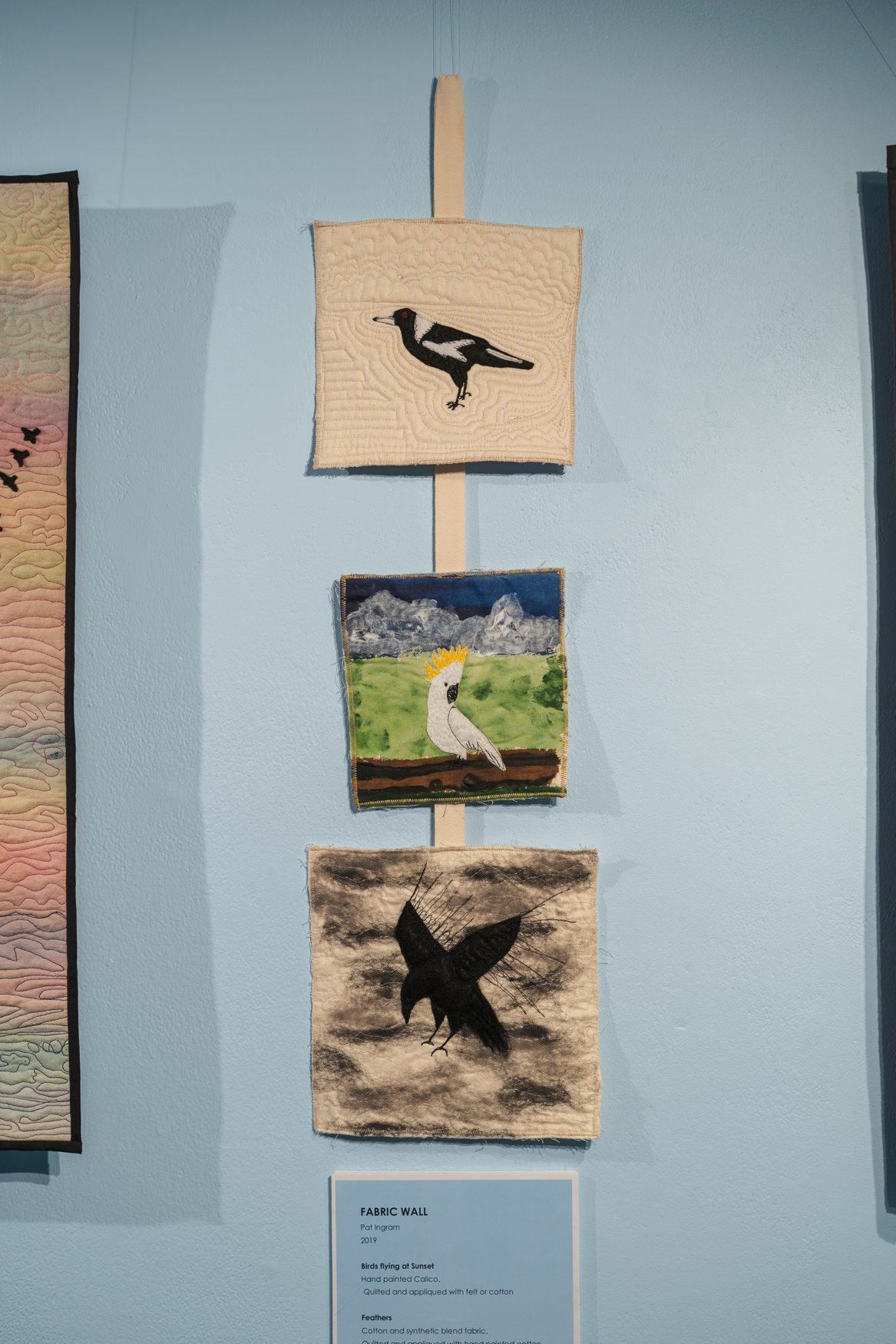
- Artwork Birds and Trees
- Year 2019
- Medium Triple wall hangings, calico hand painted, appliqued and stitched using freemotion machine embroidery
- Price Price on request
Image credit: Lana Adams
-
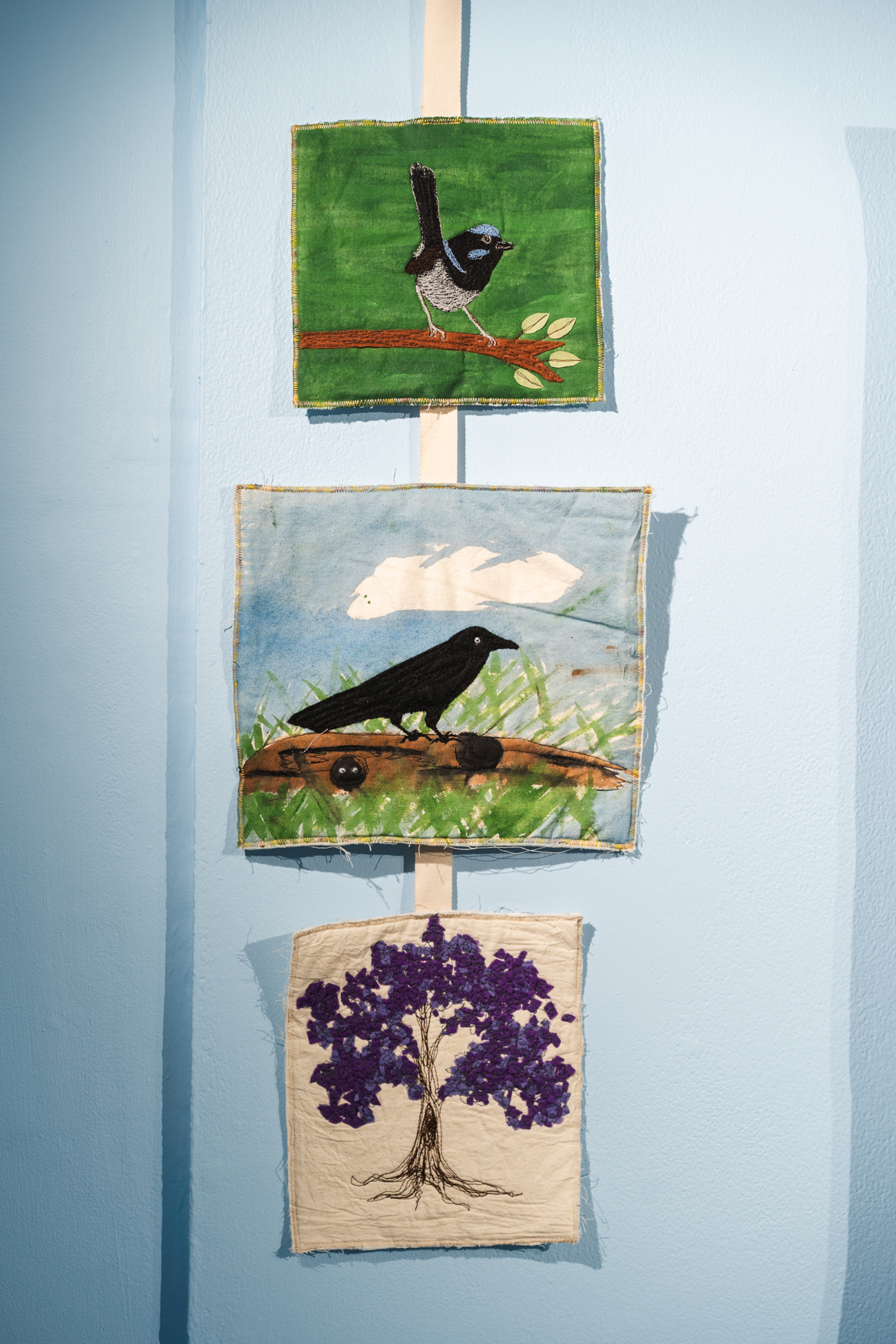
- Artwork Birds and Trees
- Year 2019
- Medium Triple wall hangings, calico hand painted, appliqued and stitched using freemotion machine embroidery
Image credit: Lana Adams
-

- Artwork Birds and Trees (detail
- Year 2019
- Medium Triple wall hangings, calico hand painted, appliqued and stitched using freemotion machine embroidery
- Price Price on request
Image credit: Lana Adams
-
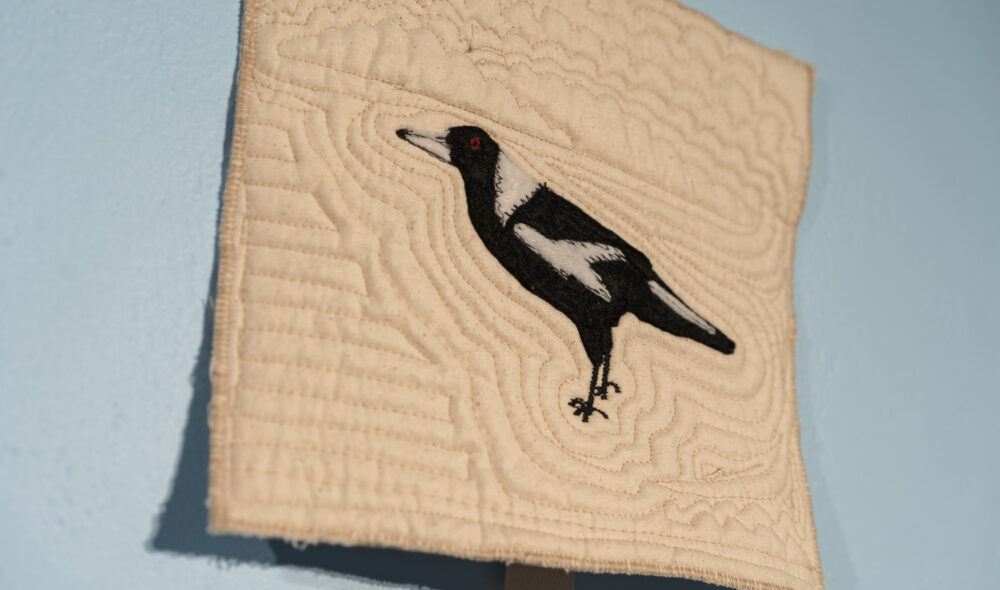
- Artwork Birds and Trees
- Year 2019
- Medium Triple wall hangings, calico hand painted, appliqued and stitched using freemotion machine embroidery
Image credit: Lana Adams
-
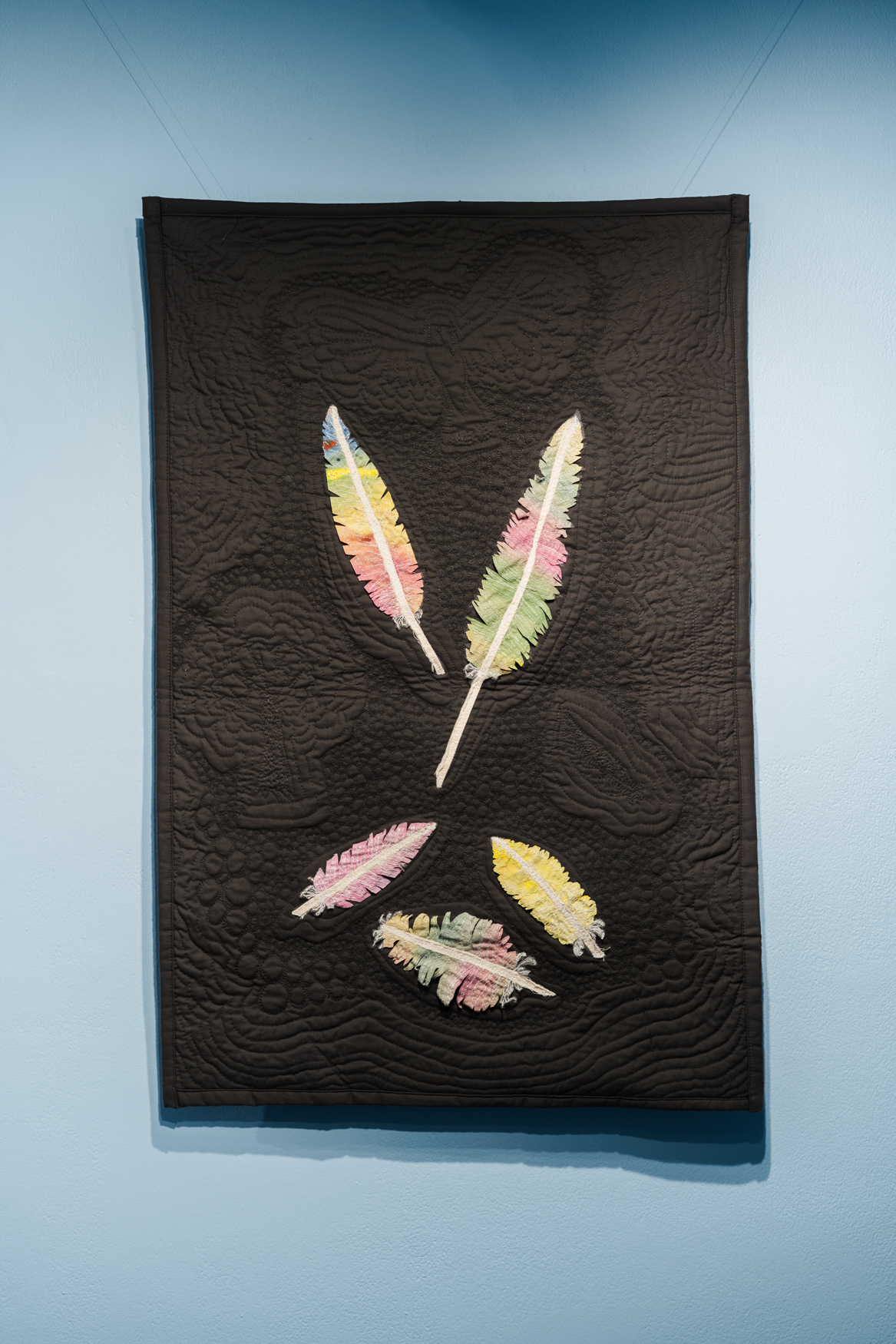
- Artwork Feathers
- Year 2019
- Medium Cotton and synthetic blend fabric, quilted and appliqued with hand painted cotton
- Price Price on request
Image credit: Lana Adams
-
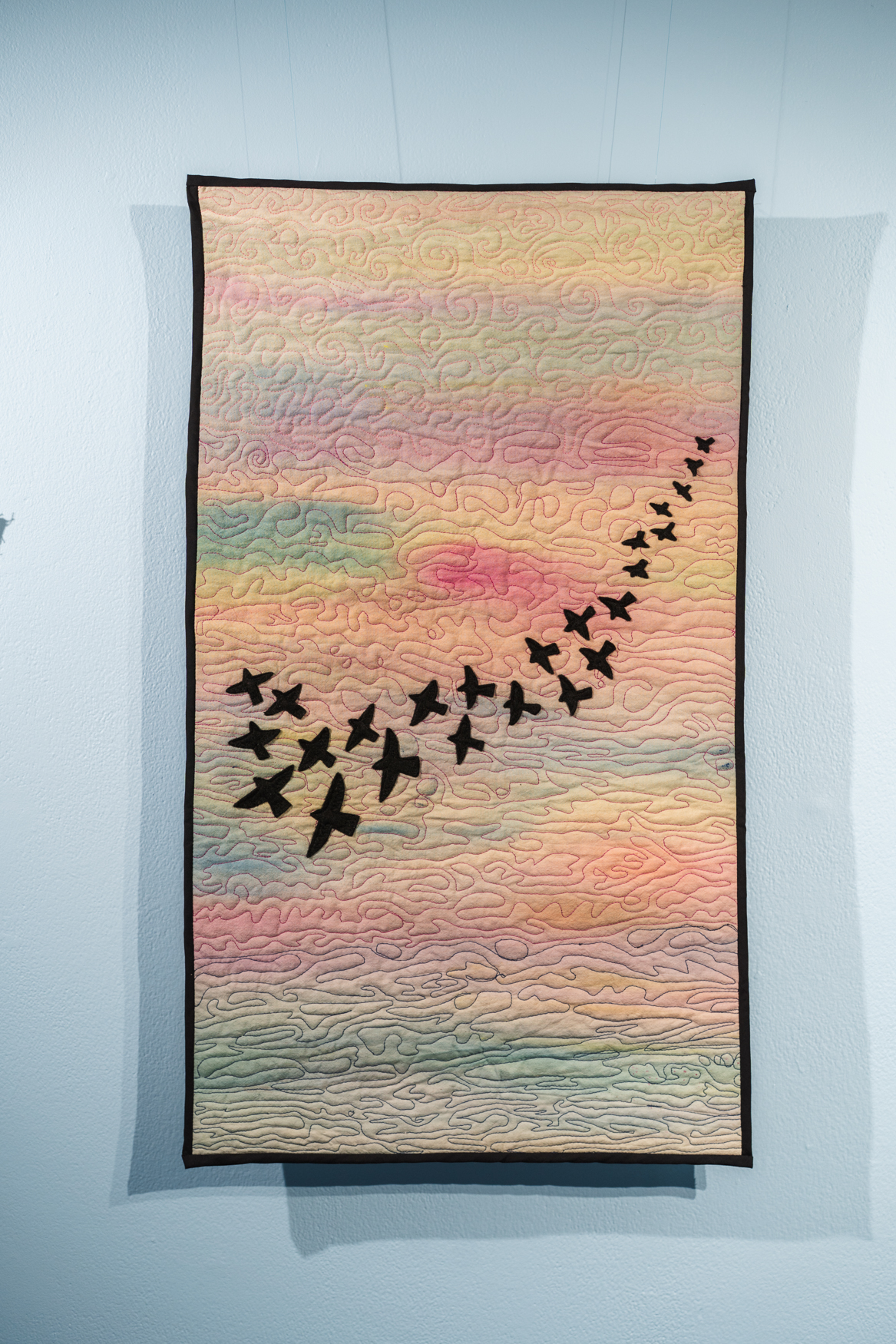
- Artwork Birds flying at Sunset
- Year 2019
- Medium Hand painted calico, quilted and appliqued with felt or cotton
- Price Price on request
Image credit: Lana Adams
-
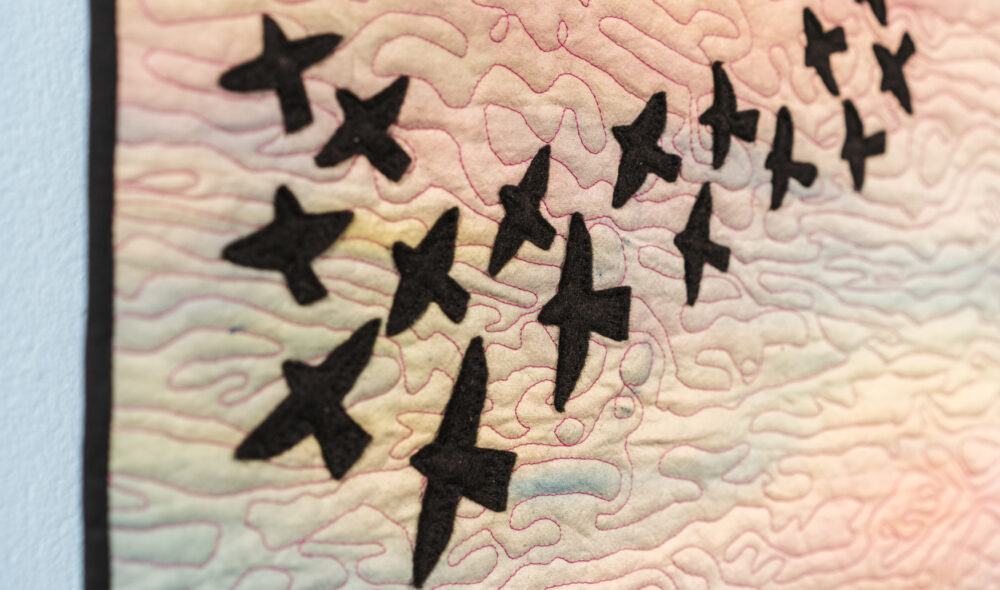
- Artwork Birds flying at Sunset
- Year 2019
- Medium Hand painted calico, quilted and appliqued with felt or cotton
- Price Price on request
Image credit: Lana Adams
-
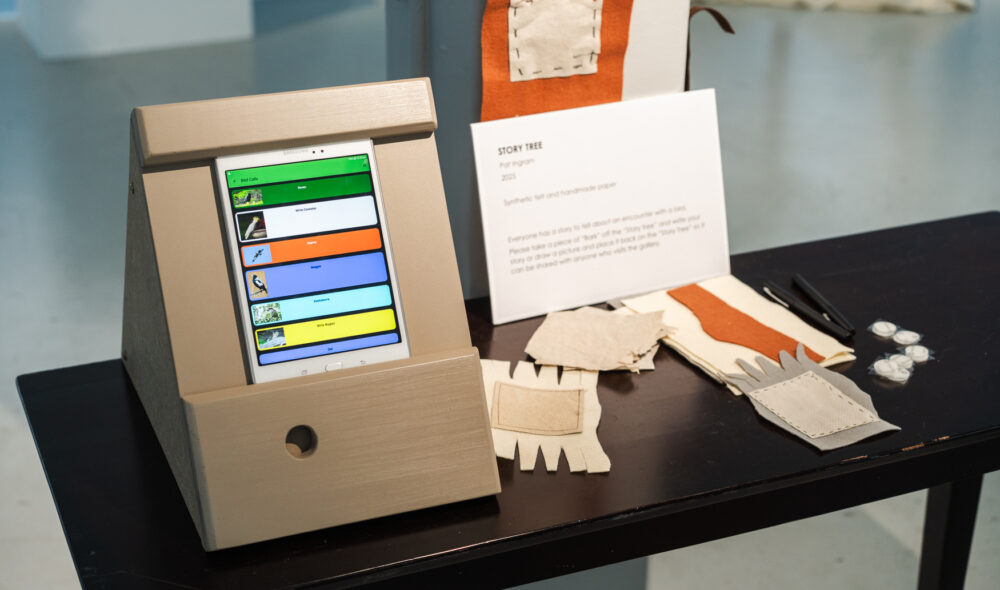
- Artwork Interactive elements
- Year 2025
- Medium Custom soundboard with bird calls, felt and handmade paper
Image credit: Lana Adams
Visitors can play different bird calls on the soundboard, and share a bird story using the materials supplied.
-
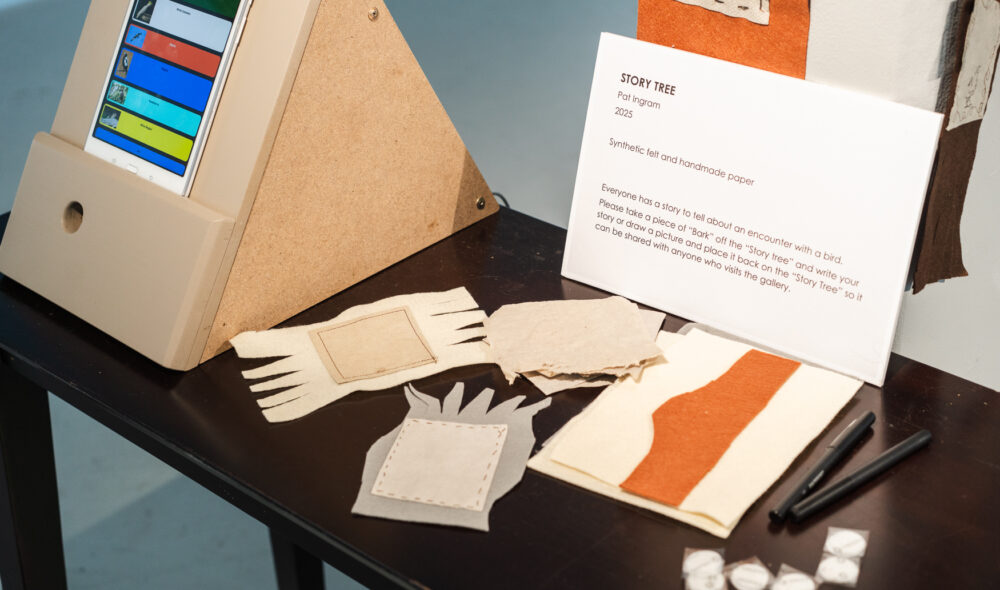
- Artwork STORY TREE
- Year 2025
- Medium Synthetic felt and handmade paper
Image credit: Lana Adams
Everyone has a story to tell about an encounter with a bird.
Please take a piece of “Bark” off the “Story tree” and write your story or draw a picture and place it back on the “Story Tree” so it can be shared with anyone who visits the gallery.
-
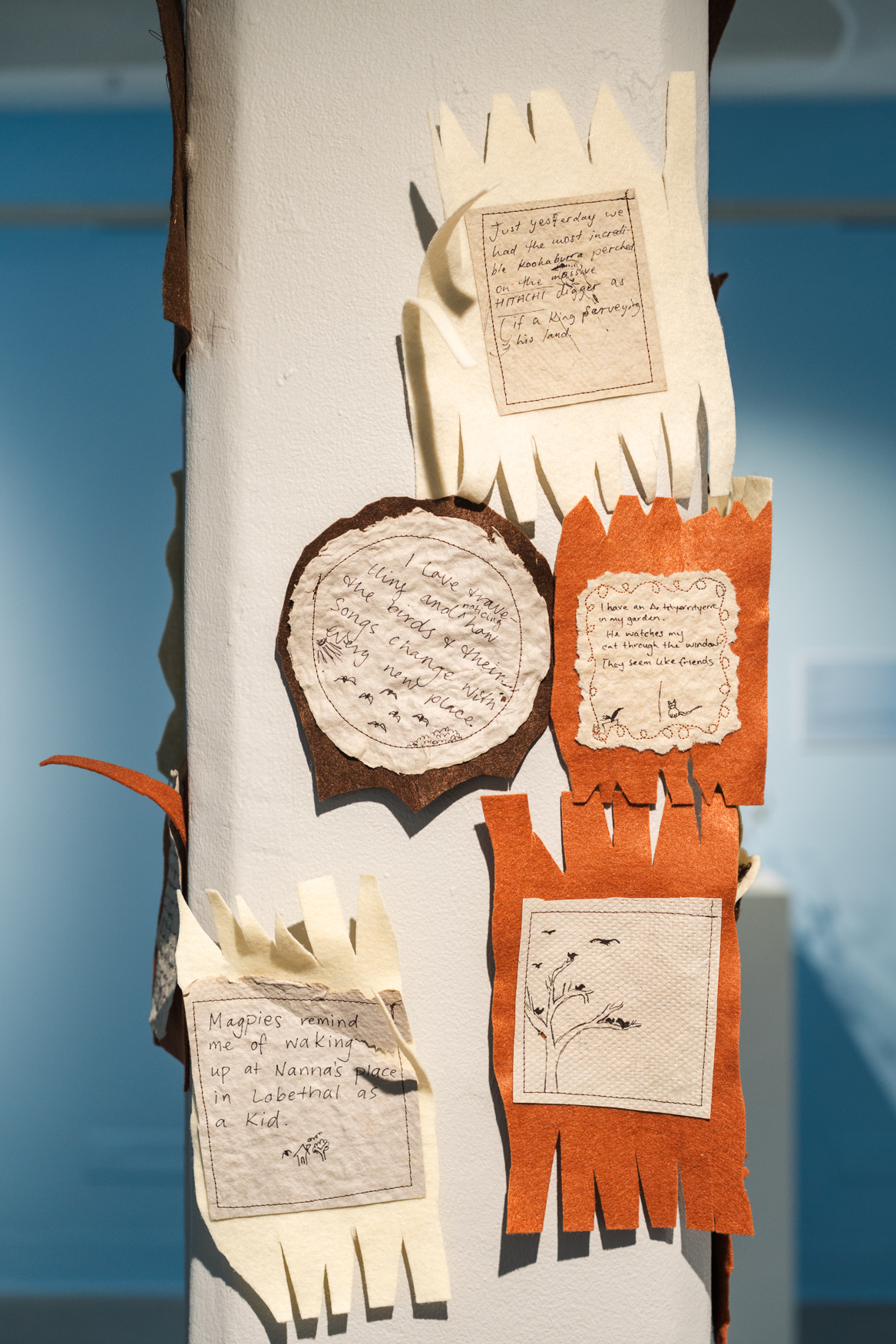
- Artwork STORY TREE
- Year 2025
- Medium Synthetic felt and handmade paper
Image Credit: Lana Adams
Everyone has a story to tell about an encounter with a bird.
Please take a piece of “Bark” off the “Story tree” and write your story or draw a picture and place it back on the “Story Tree” so it can be shared with anyone who visits the gallery.
-
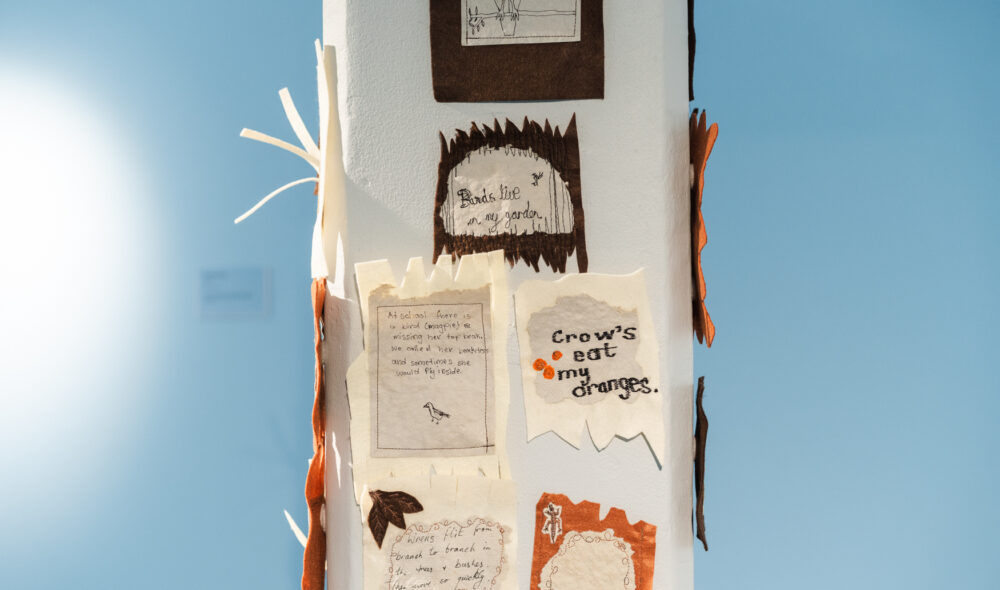
- Artwork STORY TREE
- Year 2025
- Medium Synthetic felt and handmade paper
Image Credit: Lana Adams
Everyone has a story to tell about an encounter with a bird.
Please take a piece of “Bark” off the “Story tree” and write your story or draw a picture and place it back on the “Story Tree” so it can be shared with anyone who visits the gallery.
-
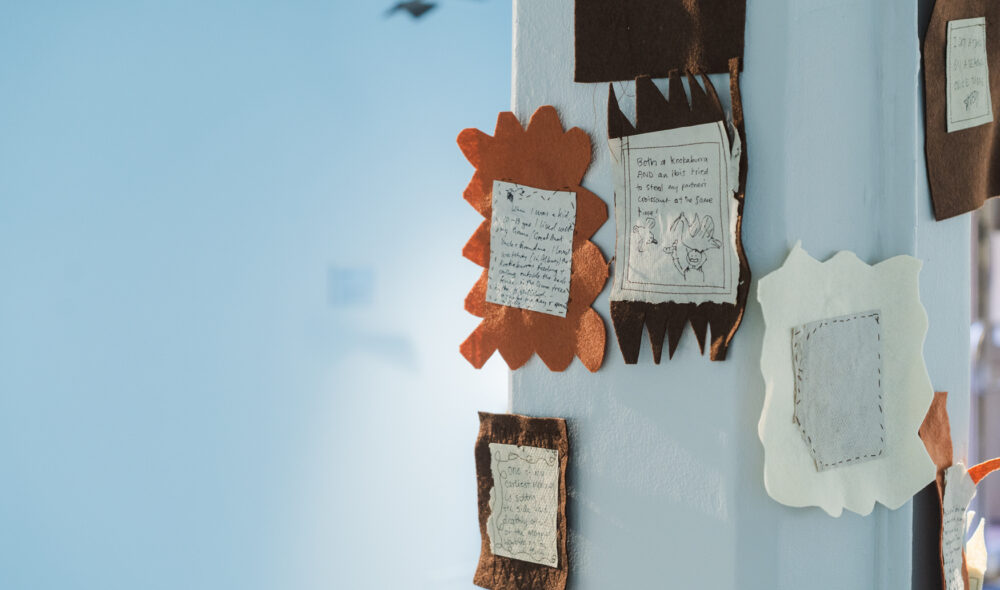
- Artwork STORY TREE
- Year 2025
- Medium Synthetic felt and handmade paper
Image Credit: Lana Adams
Everyone has a story to tell about an encounter with a bird.
Please take a piece of “Bark” off the “Story tree” and write your story or draw a picture and place it back on the “Story Tree” so it can be shared with anyone who visits the gallery.
-
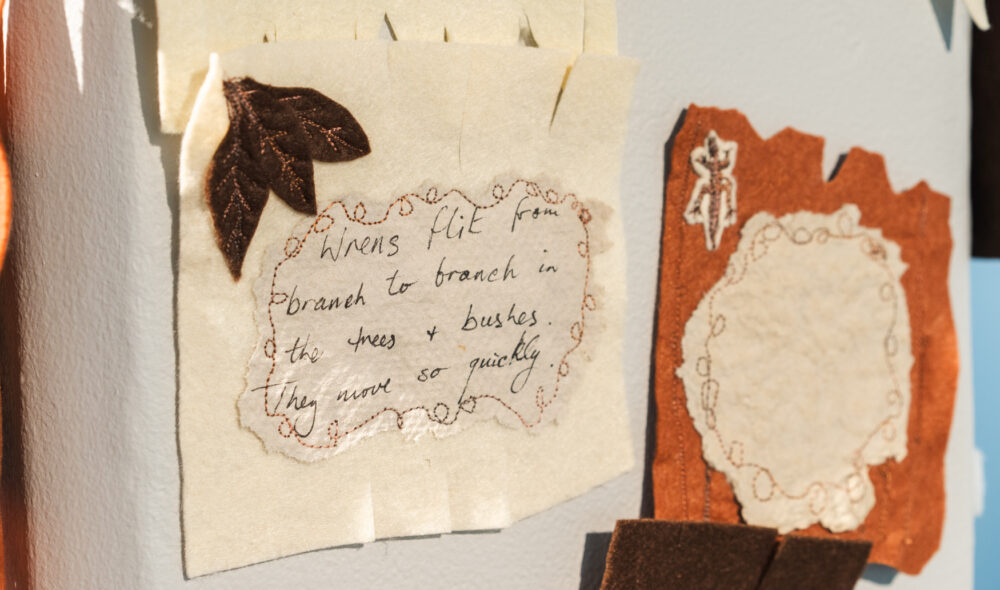
- Artwork STORY TREE
- Year 2025
- Medium Synthetic felt and handmade paper
Image Credit: Lana Adams
Everyone has a story to tell about an encounter with a bird.
Please take a piece of “Bark” off the “Story tree” and write your story or draw a picture and place it back on the “Story Tree” so it can be shared with anyone who visits the gallery.
-
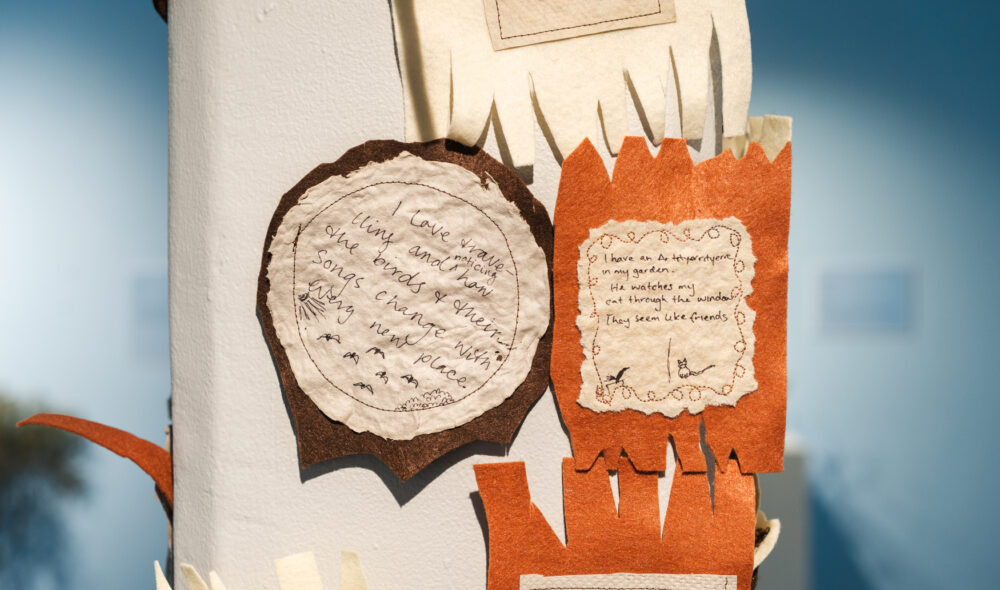
- Artwork STORY TREE
- Year 2025
- Medium Synthetic felt and handmade paper
Image Credit: Lana Adams
Everyone has a story to tell about an encounter with a bird.
Please take a piece of “Bark” off the “Story tree” and write your story or draw a picture and place it back on the “Story Tree” so it can be shared with anyone who visits the gallery.
-
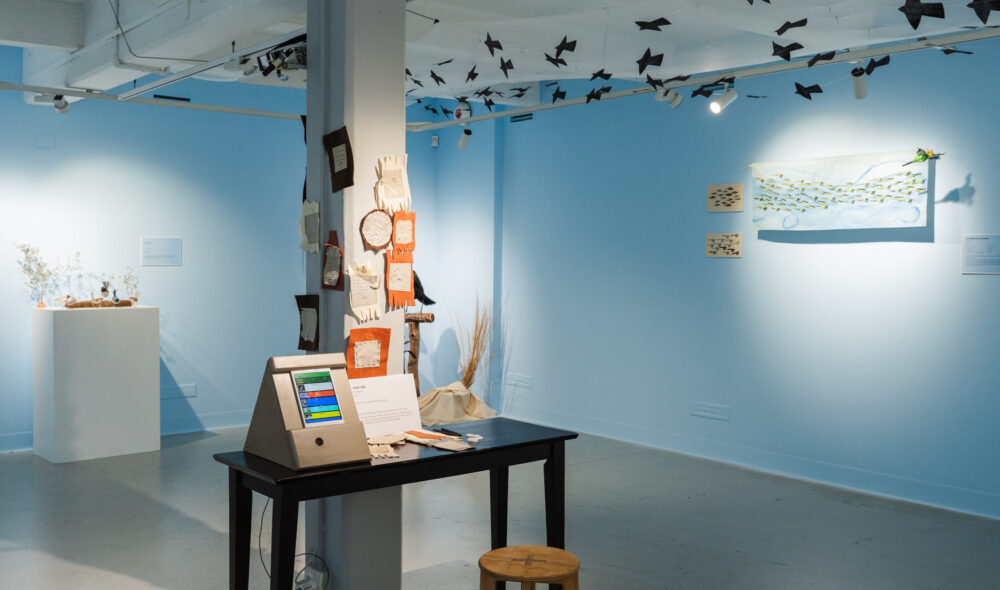
- Artwork Paika installation view
- Year 2025
Image credit: Lana Adams
-
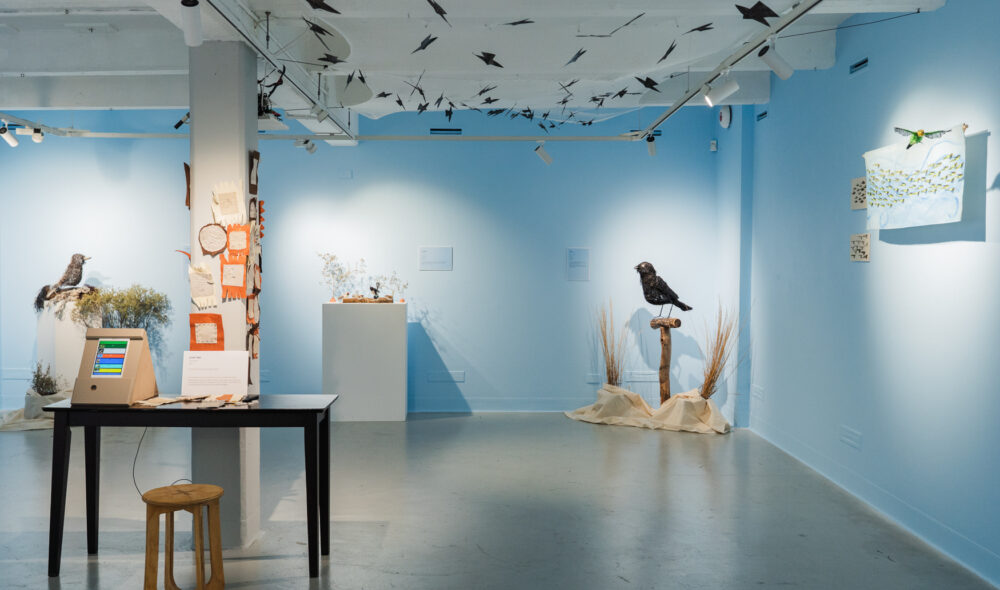
- Artwork Paika installation view
- Year 2025
Image credit: Lana Adams
-
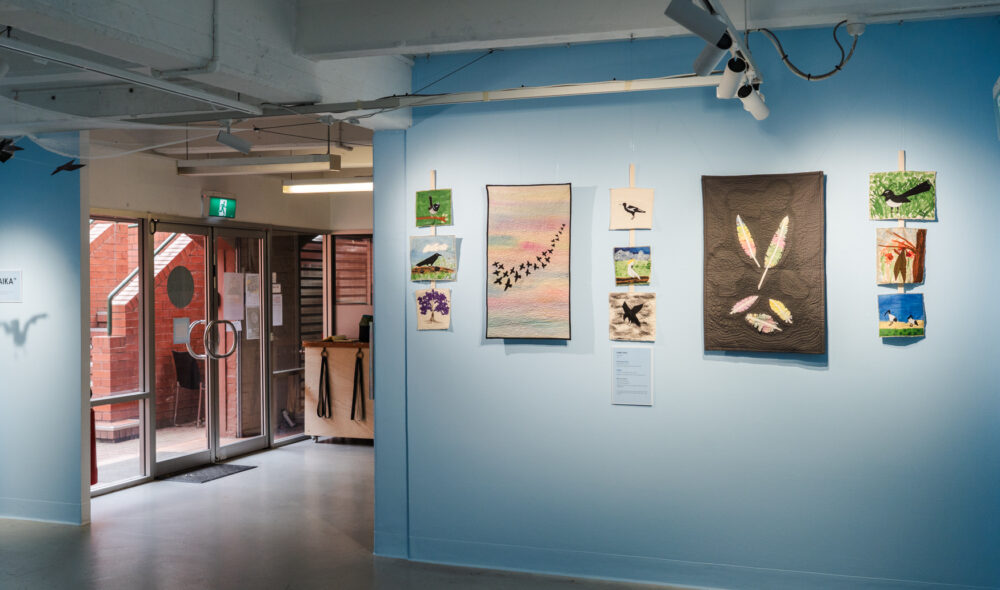
- Artwork Paika installation view
- Year 2025
Image credit: Lana Adams
-
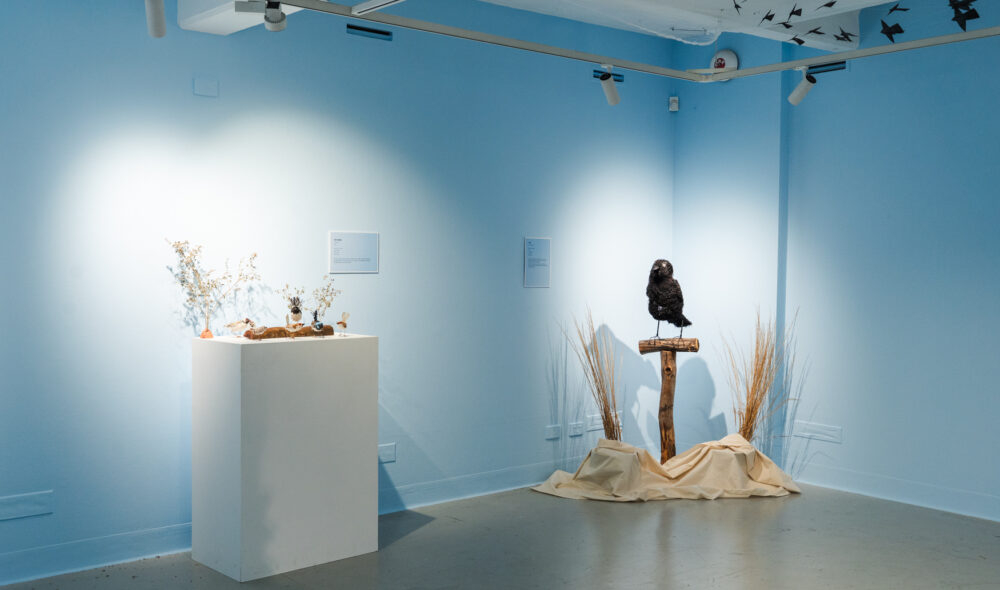
- Artwork Paika installation view
- Year 2025
Image credit: Lana Adams
-
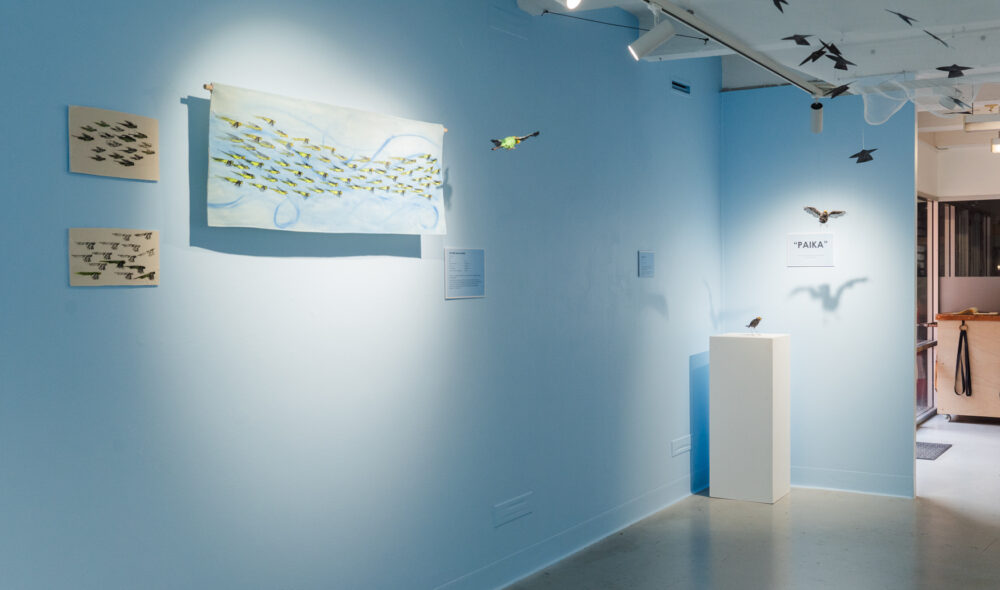
- Artwork Paika installation view
- Year 2025
Image credit: Lana Adams
-

- Artwork Paika installation view
- Year 2025
Image credit: Lana Adams
-
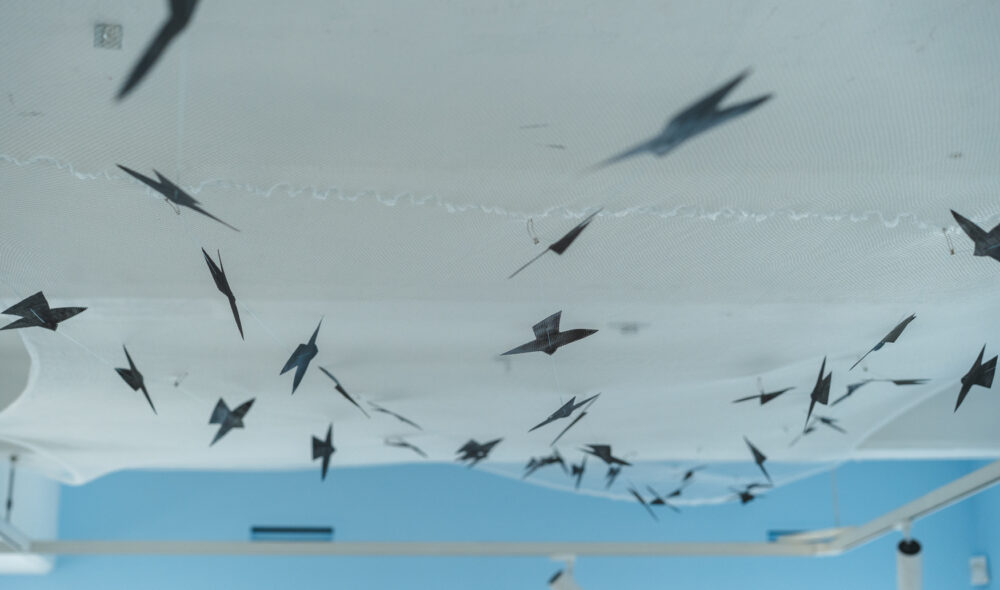
- Artwork Paika installation view
- Year 2025
Image credit: Lana Adams
Catalogue essay
Paika (to fly or rise up in flight)
Patricia Ingrams’ debut solo exhibition at Nexus Arts is Paika. In her grandfather’s language (Wemba Wemba), means ‘to fly’ or ‘rise up’. Pat makes the motion of a flock of birds rising as one. The meaning is all in the movement, the physical gesture; I smile, imagining the birds flying up and off into the distance. The image sits with me – Paika.
Pat has created layers of paika in this exhibition. In the sculptural installation of suspended birds, silhouettes of birdlike shapes, a flock paused in flight. In the motion-sensor video work projected on a gallery wall. The birds rise up in the projection almost like a sheet being spread over a bed but instead of falling with gravity, in a fluid ascent they climb across the skyscape and far over the horizon. What a beautiful thing to recreate, that feeling, that movement, that energy.
A Koori woman of Wemba Wemba, Yorta Yorta, Wergaia nations from northwest and western Victoria, Pat lives in regional South Australia. On beautiful Narungga Country “about an hour and a half outside the city”, in her home studio sanctuary, she lets her small bird obsession run wild, making birds of all shapes and sizes from recycled materials.
“I’ve questioned myself, asking why I started making these birds. It’s a part of who I am.” She speaks of childhood memories of her mother’s affinity with black swans. She explains to me, “Totems, that’s what we call them, but you could say guardian, carers, keepers, custodians.” Her great-grandfather (Wemba Wemba) has the black cockatoo as his totem, and her great-grandmother (Wergaia) are the guardians of the pelican. These sacred birds hold cultural significance, providing protection, guidance, and comfort.
I share with the artist that since we’d started talking that I’d encountered some incredible birds, counting eight(!) pelicans along the Karrawirra Parri (River Torrens) one morning, spotting a spectacular barn owl nesting in the Adelaide Railway Station, noticing unique birdsongs, and witnessing birds in flight as if dancing together in the sky – Paika. I’m more attuned now to the birds around me, previously unnoticed.
Since 2021, Pat has been making bird sculptures using marine and land debris and recycled materials of varying scale from life-sized emus for Tarnanthi festival, to her small birds. She shows me a lovely male blue wren. I ask if I can hold him. “Oh yes! I love people touching my work!” I am struck by how lifelike he is; similar in size, weight and feel to the real thing. Yet made from the very materials threatening his life and habitat, the loveliness of this wren in the present, tussles with its fishery past.
We talk about scale, although small birds are Pat’s particular favourite, she has made larger than life birds too, including a mother and baby magpie, owl, and crows. The artist excitedly showed me photos of the crows eating oranges up near her home. Pat said that the clever crows had hollowed out all the oranges that had fallen off the trees and they’d left the empty orange rind spheres on the ground and completely tricked her husband and her when they’d hoped to collect some oranges. Pat said her last name: “Ingram actually means Raven or old crow.” We laugh thinking about those tricky orange-eating crows.
The frames of her birds are copper wire sourced from old electrical cables and chicken wire. Their undergarments are ghost net, the outer layers, are made from ghost rope, both materials discarded by fishing and washed up from the ocean [Ghost Nets Initiative1].
Like all art, craft, and nature obsessives we get distracted talking about the process of making and the materiality of the fibres. Pat shows me the ghost rope. Explaining, “As you pull it apart you get all these different textures.” Pat’s process could be likened to felting but with a coarser medium than wool. Almost like dreadlocked hair, this tangled texture forms the ‘feathers’, colour and detail of the birds. Other recycled, everyday materials such as PVC pipes for the beaks and fabric offcuts are repurposed bringing life to the birds.
Pat spends a great deal of time researching, taking notes, drawing sketches, and making miniature versions of her birds – getting to know each bird intimately before attempting the final work. Each bird takes on its own personality and character, embodying the love and connection that artist has for these creatures.
Written by Polly Dance (she/her)
1 https://australianmarineparks.gov.au/management/partnerships/ghost-nets-initiative/
Polly is a curator, arts writer and artist based in Adelaide on the unceded land of the Kaurna people. Her practice is concerned with history, truth-telling, materiality, site-responsiveness, and accessibility. She works as the Curator of Children’s Artspace at Adelaide Festival Centre and volunteer Board member of Post Office Projects.
Meet the artists & curators
Pat Ingram is a Koori woman and her families language groups are Wemba Wemba , Yorta Yorta and Wergaia. Born and raised in Victoria, she has lived and worked in South Australia for over 20 years. A textile and fibre artist, she loves working with fibre, threads, and fibres. In the last few years, she has been making birds from recycled materials.
Pat’s maternal Great Grandparents both had Bird totems, the black cockatoo, and the pelican. Her mother had an affinity with Black Swans, and she has always been fascinated by small birds. It is a large part of who she is.
In 2021 she took part in a project as part of the Tarnanthi festival in which two Emus were created. She then began making birds sculptures from Marine and land debris. In 2022 she made many birds, so she calls it “The year of the Birds.”
Her bird sculptures are made with materials that are deemed as waste that could be harmful to birds and their habitats. These include old fishing nets, fibres from old ropes that come from fishing boats, wire from old electrical cables, chicken wire, and offcuts of PVC pipes, as well as other recycled materials.
